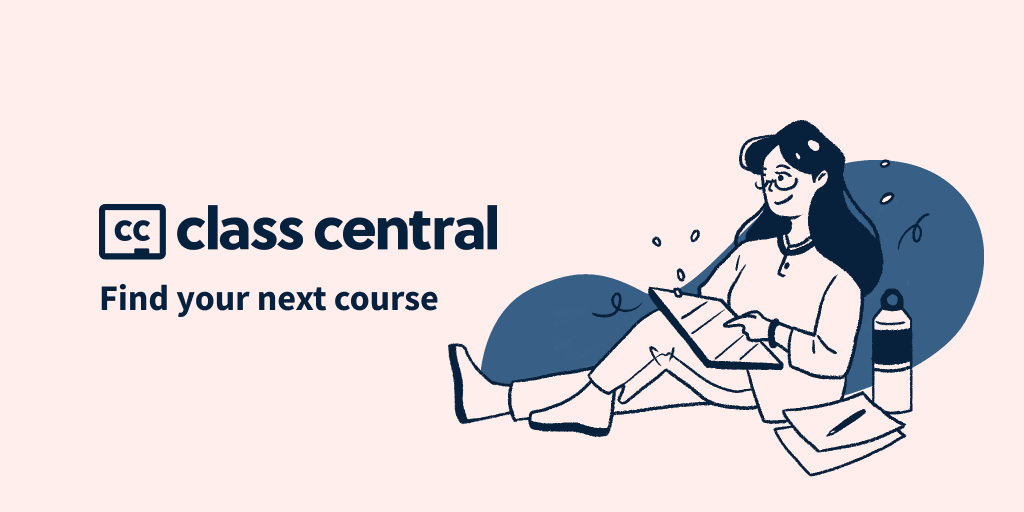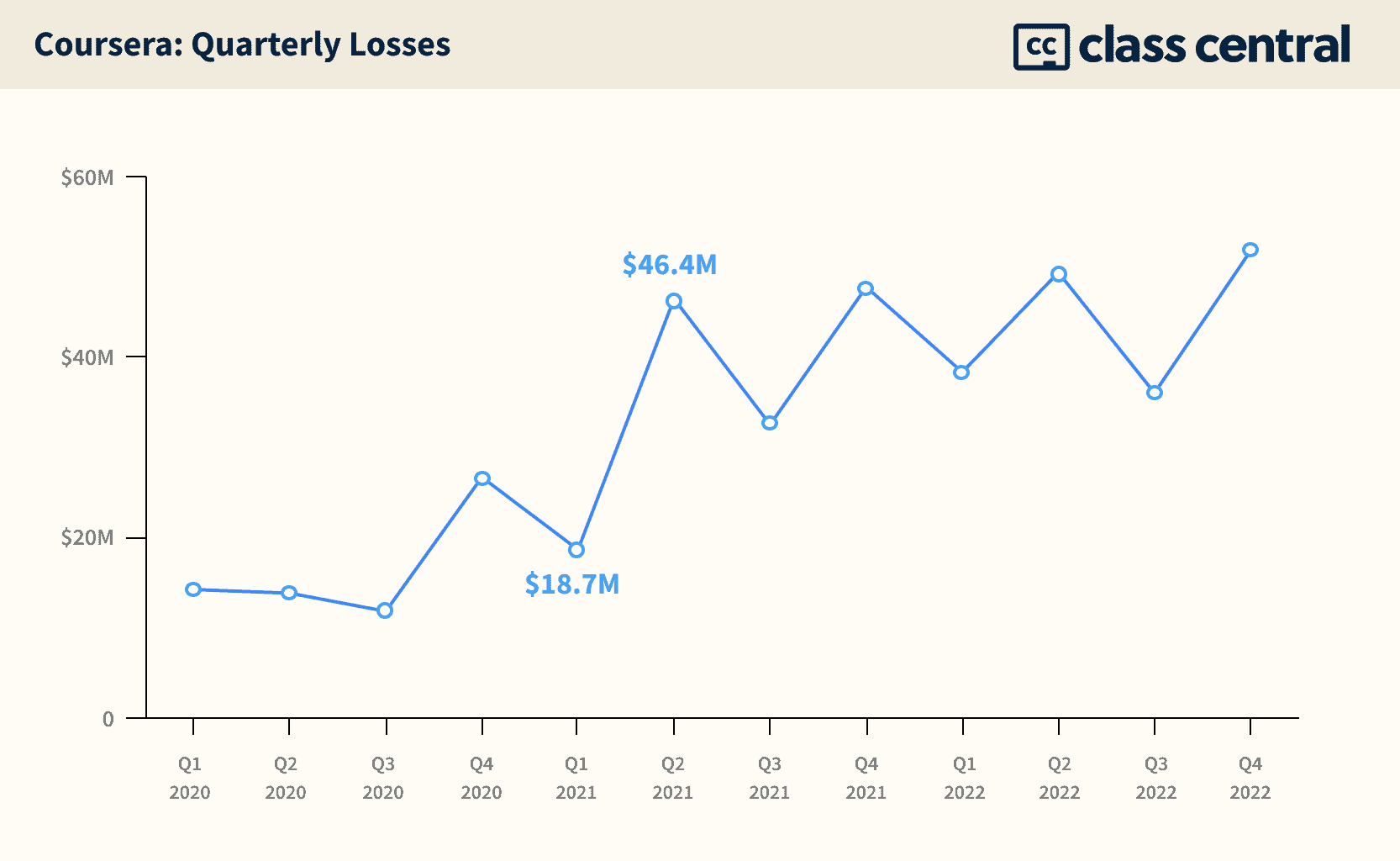The post Academic Writing Made Easy: Improve Your Writing Skills With TUM appeared first on The Report by Class Central.
]]>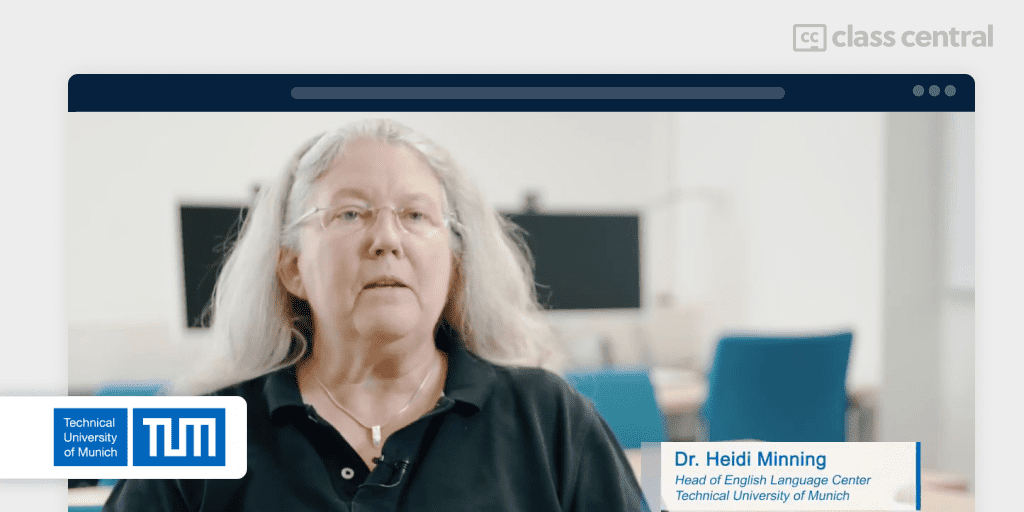
Editor: This is an in-depth review of Academic Writing Made Easy by TUM (Technical University of Munich). Although this course is in Class Central’s list of Best Free Online Courses of All Time, it is currently unavailable for enrollments. Meanwhile, check out 170 Free Online Writing Courses to Improve Your Skills.
Why did I take this course?
My writing skills were nowhere near perfect, the additional lack of confidence in myself made it worse. I could not get anything written down without giving up. I could not understand how some people came up with amazing texts, expressing themselves wonderfully, using colossal words, and correct grammar. I did not know how to express myself in words. Though the thought was clear, writing it down was the hard part. Moving into college with that same mindset and needing proper guidance on the subject, I searched for a few writing courses with the help of Class Central and I found Academic writing made easy by the Technical University of Munich. After taking this course, I now believe that writing is not some magical gift only intelligent people can wield, it is a skill anyone can be good at if one is taught properly and that is exactly what this course will do. It teaches you the step-by-step basics of writing, explains the science behind good writing, and helps you build more confidence.
What is required to take this course?
There are only a few requirements to take this course. As an English course, it requires an upper-intermediate (B2) to advanced (C1) level in the English Language. A laptop may also be required because some of the exercises are not compatible with a mobile device. The course is very easy to take without having any of these challenges.
Should you upgrade to get a certificate?
The course has both a free version and an upgraded version. The free version gives you access to all the video lessons, graded exercises, forums, and Q&A sections. While the upgraded version provides unlimited access to the contents and videos in addition to two tests; a mid-term and a final test, then a verified certificate, which looks good on your resume. By upgrading to the verified version, you would also be supporting the producers of the course.
About the course
This 6 weeks course is taught by a few lecturers namely: Dr. Heidi Minning, Jeremiah Hendren, Dr. Stephen Starck, Dr. Aparna Bhar, Susan O’Byrne, Rose Jacobs, and Ruth Shannon. They are a team of exceptional lecturers, who individually are experienced in the arts of writing. The course has been tailored for every level: a beginner, trying to build a strong foundation; an intermediate, and an advanced writer, who wants to sharpen their skill. It covers the step-by-step basics of writing and organizing your text. Each week contains video lessons and graded exercises that explain how your writing is to appeal to your audience, understanding the genre and tone of each type of text. It also teaches cohesion: how to make your ideas flow logically. I appreciated how it explained how to write a reader-friendly sentence, how to be credible, make your reader understand and believe your text, and an in-depth explanation of punctuation. My favorite was when Jeremiah Hendren gave a lecture on overcoming writer’s block, which helped me build more confidence in writing. It is not a time-consuming course as it is self-paced, where you can set goals of 2-3 hours per week. It also provides a forum, where you can associate with your peers and a Q&A, with instant replies.
Why do I feel you will enjoy the course?
For the time I spent taking the course, I was very satisfied. Each time I finished a unit of the course, I was excited about the progress I was making and how much knowledge I was uncovering. I genuinely recommend this course to anyone struggling to write academically. It is easy, professional yet fun, and consumes less time. I hope your experience is as splendid as mine was.
The post Academic Writing Made Easy: Improve Your Writing Skills With TUM appeared first on The Report by Class Central.
]]>The post What is the Secret of Chinese Economic Success? appeared first on The Report by Class Central.
]]>
This is an in-depth review of the free-to-audit course China’s Economic Transformation Part 1: Economic Reform and Growth in China by The Hong Kong University of Science and Technology via Coursera.
China economic transformation history
In 1978, after nearly 30 years of socialist planning under Mao Zedong, China was one of the poorest countries in the World, with a highly inefficient and inward-looking economy.
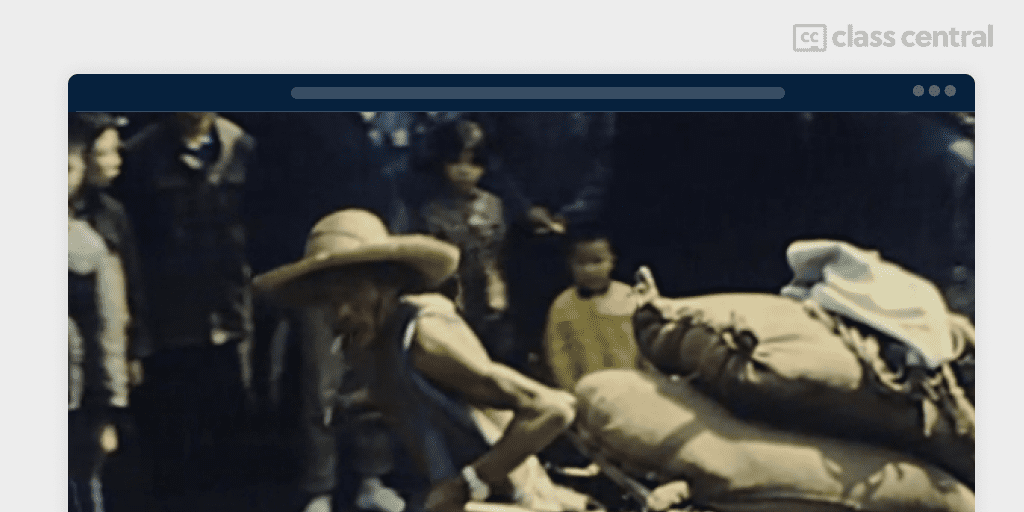
From 1978 through 2015, China grew at an average annual growth rate of 10% per year. Today, China has the largest GDP (Gross domestic product) of any country in the world and is the world’s largest trading nation. Deng Xiaoping undertook fundamental economic reforms that unleashed market forces, opened the country to the outside world, and lifted millions of Chinese out of poverty
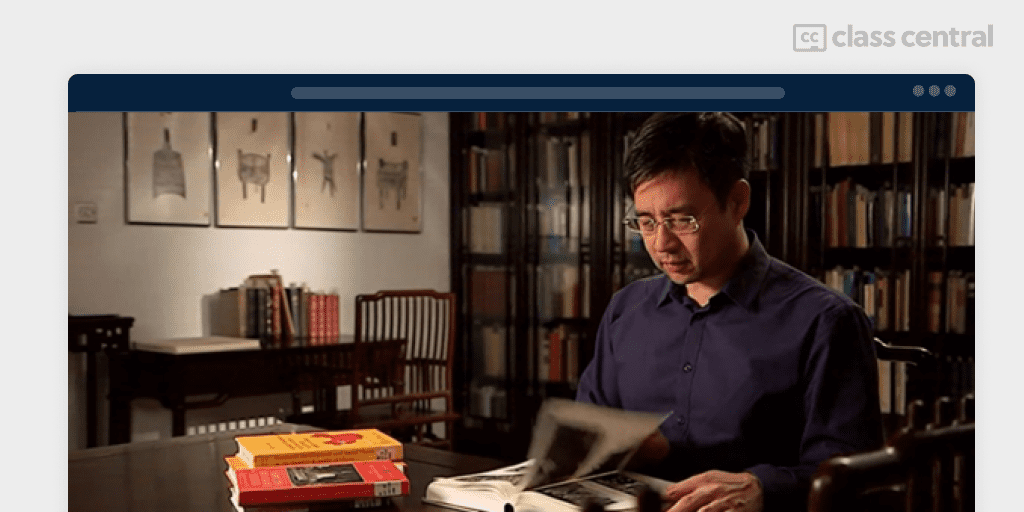
All economists around the World try hard to think about what to do to bring economic success to emergent countries and are curious about how China could be the unique emergent country that indeed made it and became a thriving economy. China promises to wipe all the poverty, hunger, and underdevelopment out. How do they do it?
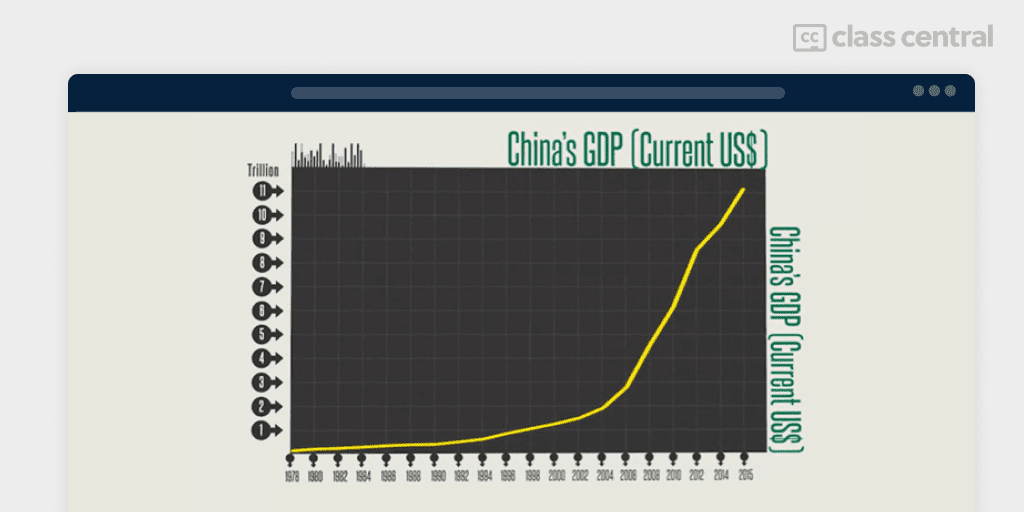
More than that, how can we grasp this knowledge without falling in the trap of political bias and preconception, with no cold war propaganda, analyzing objectively the most important aspects of the Chinese economy?
The Instructor
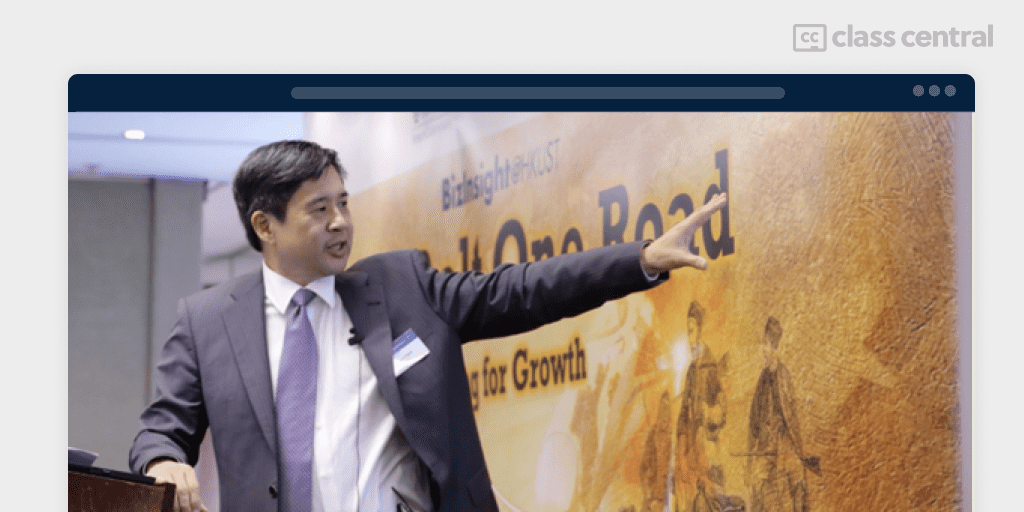
The man for this job is Professor Albert Francis Park who teaches the Coursera MOOC China’s Economic Transformation. You will learn the Deng Xiaoping principle of gradual reform, “crossing the river by feeling the stones”, allying millennial Taoist knowledge to modern economic technology.
Albert Francis Park came from Korea Development Institute, where he was a Research Assistant in 1988. After that, he passed a hard proficiency training in Chinese (1992) that enabled him to deeply study the Chinese reforms. Fluent in Chinese and English, Albert Francis Park Undergraduate as Bachelor of Arts at Oxford and got his PhD at Stanford in 1996. With academic positions at the University of Michigan, Oxford and Stanford, he is now an outstanding teaching professor at Hong Kong University and active in many institutes of emergent development and on the editorial board of the main journals of comparative economics and emergent development. He is the director of the Institute for Emerging Market Studies.

Conclusion and what’s next
Chinese tradition involves hard work and this course is no different. There’s lots of information, reading, and material to study, so learn carefully, take notes, and study, because the tests are carefully made to check the assimilation of the didactic material.
After completing this course, as part 2 is still not available, I recommend the following courses: Chinese Politics Part 1 – China and Political Science and Chinese Politics Part 2 – China and the World.
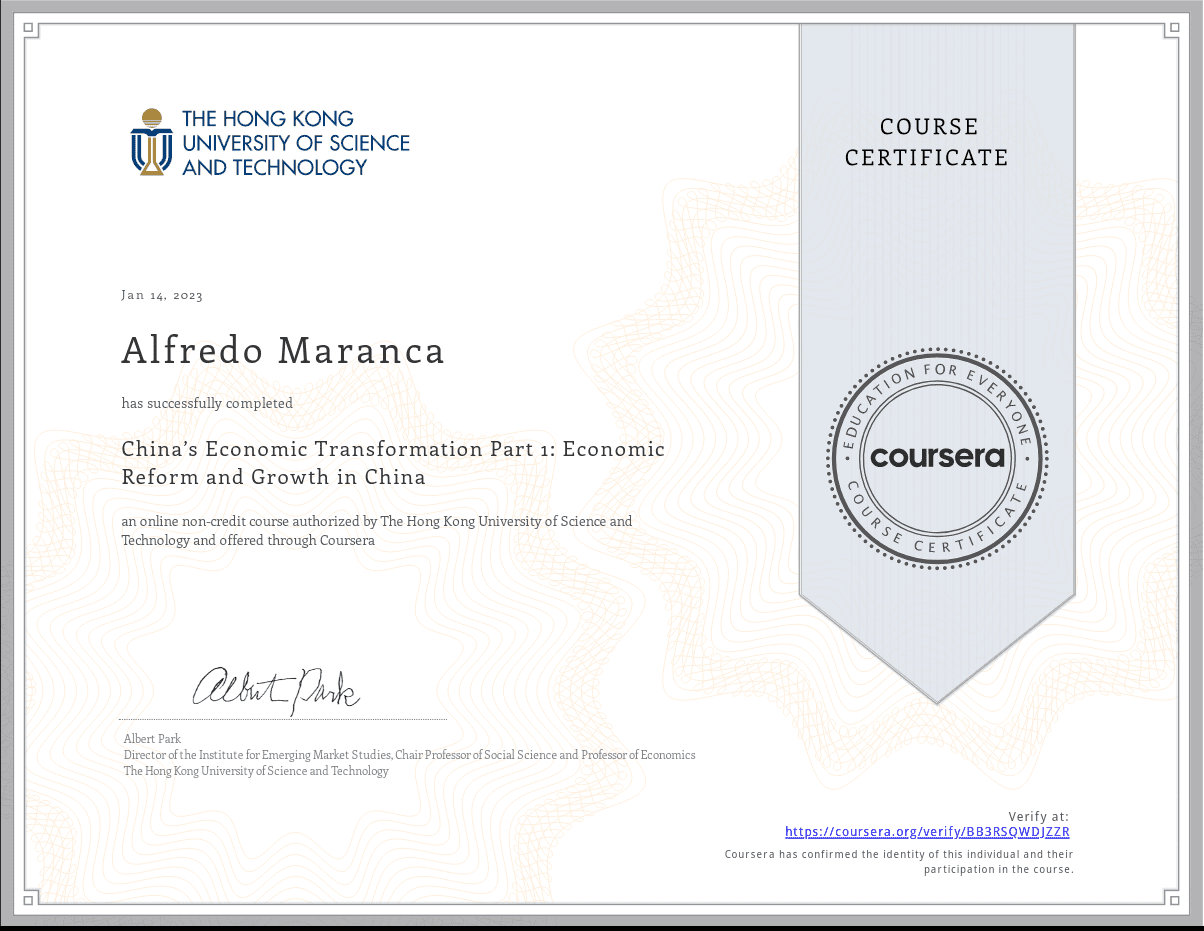
The post What is the Secret of Chinese Economic Success? appeared first on The Report by Class Central.
]]>The post 20 Most Cited Research Papers on MOOCs appeared first on The Report by Class Central.
]]>
The research on Massive Open Online Courses (MOOCs) is at least as old as the introduction of the first MOOC. MOOCs and learning analytics gave researchers a unique opportunity to follow students closely on their learning path. This generated new findings on the learning habits of students, developed the knowledge on learning technology further and derived evidence-based recommendations for instructional designers. To get an overview of the topics and trends in the research on MOOCs we have created a list of the most cited research papers on MOOCs.
Methodology
In an attempt to have an overview of the most cited research papers in the field of Massive Open Online Courses (MOOCs) on Google Scholar, we combined the search results of relevant search terms (and their plurals) “MOOC” (about 61K results), “Massive Open Online Course” (about 35K), and “e-learning” (about 630K) in the following list. We have only included articles published since 2008. The short description under the title is extracted from the abstracts of the articles.
Twenty Most Cited MOOC Research Papers
How video production affects student engagement: An empirical study of MOOC videos (2014) by PJ Guo, J Kim, R Rubin
The study analyzes 6.9 million video watching sessions across four courses on edX to measure student engagement with online educational videos. The findings suggest that shorter videos, informal talking-head videos, and Khan-style tablet drawings are more engaging. The study also highlights the importance of understanding how students engage with different types of videos and recommends that instructors and video producers leverage the online video format accordingly. The anonymized data set and analysis scripts are publicly available.
Making sense of MOOCs: Musings in a maze of myth, paradox and possibility (2012) by J Daniel
This paper provides a history of MOOCs and contextualizes them within the evolution of educational technology and open/distance learning. While the hype around MOOCs focuses on their scale, the real revolution is that universities with scarcity at the heart of their business models are embracing openness. The paper explores paradoxes and debunks myths associated with the MOOC movement, highlighting the potential for competition among participating institutions to improve teaching quality and reduce costs of higher education.
MOOCs: A systematic study of the published literature 2008-2012 (2013) Tharindu Rekha Liyanagunawardena, Andrew Alexandar Adams, and Shirley Ann Williams
This paper presents a systematic review of published MOOC literature from 2008-2012, identifying 45 peer-reviewed papers across eight areas of interest. MOOCs are recognised as having the potential to deliver education globally, and this review provides a quantitative analysis of publications according to publication type, year of publication, and contributors. The authors explore future research directions guided by gaps in the literature.
Studying learning in the worldwide classroom research into edX’s first MOOC. (2013) by Lori Breslow, David E. Pritchard, Jennifer DeBoer, Glenda S. Stump, Andrew D. Ho, Daniel T. Seaton
“Circuits and Electronics” was the first MOOC developed by edX, attracting over 155,000 students in 2012. Researchers analyzed the data generated by the course and found insights about students’ resource use and achievement. A second stage of research is underway to examine the background and capabilities of the students and their interactions with the course’s components to understand their level of success.
Deconstructing disengagement: analyzing learner subpopulations in massive open online courses (2013) by René F. Kizilcec, Chris Piech, Emily Schneider
A classification method has been developed to identify longitudinal engagement trajectories in three computer science MOOCs. This method identifies four prototypical trajectories of engagement, including learners who stay engaged without taking assessments. The trajectories can be used to compare learner engagement across different courses and demographics, informing future interventions, research, and design directions for MOOCs.
Initial Trends in Enrolment and Completion of Massive Open Online Courses (2014) by K Jordan
This paper examines the public data available on enrolment and completion rates in MOOCs. The average course enrolls 43,000 students, with a completion rate of 6.5%, and enrolment numbers are decreasing over time. Completion rates are consistent across time, university rank, and total enrolment, but negatively correlated with course length. The study provides a more accurate view of how the MOOC field is developing.
The MOOC model for digital practice (2010) by A McAuley, B Stewart, G Siemens, D Cormier
The report explores the relationship between Massive Online Open Courses (MOOCs) and the digital economy in Canada. It argues that a prosperous digital ecosystem requires a citizenry with the knowledge, skills, and attitudes necessary to participate in that economy. The report presents a Canadian model for how MOOCs can address this need and includes four digital videos to supplement the printed report.
The Challenges to Connectivist Learning on Open Online Networks: Learning Experiences during a Massive Open Online Course (2011) by R Kop
Self-directed learning on open online networks is now a possibility as communication and resources can be combined to create learning environments. But is it really? There are some challenges that might prevent learners from having a quality learning experience. This paper raises questions on levels of learner autonomy, presence, and critical literacies required in active connectivist learning.
Students’ and instructors’ use of massive open online courses (MOOCs): Motivations and challenges (2014) by KF Hew, WS Cheung
Summary of summary: The paper reviews published literature on MOOCs, identifying reasons for student enrollment as learning, curiosity, challenge, and certification, while high dropout rates result from insufficient incentives, poor comprehension, and other priorities. Instructors’ motivations are intrigue, personal rewards, and altruism, but they face difficulties in evaluating student work, feedback, and low participation. MOOC education quality and assessment are unresolved issues.
Higher education and the digital revolution: About MOOCs, SPOCs, social media, and the Cookie Monster (2016) by AM Kaplan, M Haenlein
This article provides a nuanced analysis of online distance learning, including an overview of its historical evolution, key concepts, optimal target group, and corresponding frameworks for driving intrinsic student motivation and choosing a successful online teacher. The benefits of offering online distance learning are outlined, and the specific connection between online distance learning and social media is discussed, focusing on the difference between xMOOCs and cMOOCs.
MOOCs and open education: Implications for higher education (2013) by Li Yuan and SJ Powell
This report provides decision makers in higher education institutions with an understanding of MOOCs and trends towards greater openness in higher education, including the changes currently taking place in higher education due to globalization and constrained budgets. The report, written from a UK perspective, uses a literature review to identify current debates about new course provision, funding changes, and implications for greater openness in higher education. The theory of disruptive innovation is used to help institutions address policy and strategy questions.
Instructional quality of Massive Open Online Courses (MOOCs) (2015) by A Margaryan, M Bianco, A Littlejohn
In this study, the instructional design quality of 76 randomly selected Massive Open Online Courses (MOOCs) was analyzed using a course survey instrument. Two types of MOOCs were analyzed and their instructional design quality was assessed and compared. The majority of MOOCs scored poorly on most instructional design principles, indicating that although most MOOCs are well-packaged, their instructional design quality is low. Implications for practice and ideas for future research are outlined.
MOOCs and the AI-Stanford Like Courses: Two Successful and Distinct Course Formats for Massive Open Online Courses. (2012) by CO Rodriguez
This article discusses the rise of open online courses (OOCs) with a massive number of students, such as the artificial intelligence course CS221 offered by Stanford in 2011 which attracted 160,000 registered students. While both AI and connectivist MOOCs (c MOOCs) have been identified as equivalent in many instances, the article argues that the format associated with c-MOOCs is unique and different from AI due to its participative pedagogical model, which aligns with connectivist pedagogy. The article also discusses the evolution of distance education pedagogy, which has progressed from cognitive-behaviorist to social constructivist to connectivist models. The article includes tables and figures for further detail.
MOOCs and the funnel of participation (2013) by Doug Clow
This article discusses how Massive Online Open Courses (MOOCs) present challenges for mainstream learning analytics practices, and highlights the high dropout rates in MOOCs compared to traditional education. The article introduces the metaphor of a ‘funnel of participation’ to describe the pattern of steep drop-offs and unequal participation in MOOCs and similar learning environments. Empirical data from three online learning sites are presented to support the funnel of participation concept. The article concludes with a discussion on the implications of the funnel for MOOCs, formal education, and learning analytics practice.
The ideals and reality of participating in a MOOC (2010) by J Mackness, S Mak, R Williams
The paper discusses a MOOC called ‘CCK08’ which focused on the emergent practices and theory of Connectivism. Over 2000 participants from around the world registered for the course, with some enrolled for credit. The paper explores the perspectives of participants on their learning experiences in the course in relation to the characteristics of connectivism outlined by Stephen Downes. The research found that the more autonomous, diverse and open the course, and the more connected the learners, the more potential for learning to be limited by the lack of structure, support, and moderation normally associated with an online course. The research suggests that further studies are needed to investigate whether a large open online network can be fused with a course.
Self-regulated learning strategies predict learner behavior and goal attainment in Massive Open Online Courses (2017) by RF Kizilcec, M Pérez-Sanagustín, JJ Maldonado
This paper discusses the importance of self-regulated learning (SRL) skills in Massive Open Online Courses (MOOCs) and how effective implementation of learner support systems requires an understanding of which SRL strategies are most effective and how these strategies manifest in online behavior. The authors investigated SRL in a sample of 4,831 learners across six MOOCs and found that goal setting and strategic planning predicted attainment of personal course goals, while help seeking was associated with lower goal attainment. Learners with stronger SRL skills were more likely to revisit previously studied course materials, especially course assessments. The paper concludes by discussing implications for theory and the development of learning environments that provide adaptive support.
A Pedagogy of Abundance or a Pedagogy to Support Human Beings? Participant Support on Massive Open Online Courses (2011) by Rita Kop, Hélène Fournier and John Sui Fai Mak
This paper explores how new technologies could impact the design of learning environments, with a focus on the roles of educators and learners in creating networked learning experiences on MOOCs. The paper proposes a pedagogy that supports learners and course facilitators in creating resources and learning places through collaboration, building a community of learners, and utilizing information flows on networks. This aligns with the idea of emergent learning, where actors and systems co-evolve in a MOOC, and the level of presence of actors on the MOOC influences learning outcomes.
The technological dimension of a massive open online course: The case of the CCK08 course tools (2009) A Fini
This paper focuses on technological aspects of the Connectivism and Connective Knowledge (CCK08) MOOC and investigates attitudes of lifelong learners towards learning network technologies. Findings show that time constraints, language barriers, and ICT skills affected participants’ choice of tools, and learners preferred passive mailing lists over interactive discussion forums and blogs. The paper recommends highlighting the pedagogical purpose of tools offered, giving learners the freedom to choose which tools to use, and conducting further research on sustainability and instructor workload issues in MOOCs. Investigation is also necessary to determine if terms such as course, drop-out, and attrition are appropriate in relation to MOOCs.
The MOOC Phenomenon: Who Takes Massive Open Online Courses and Why? (2014) by Gayle Christensen, Andrew Steinmetz, Brandon Alcorn, Amy Bennett, Deirdre Woods, Ezekiel Emanuel
Summary: MOOCs have gained public attention for their potential, but there are no robust, published data that describe who is taking these courses and why. An online survey of students enrolled in at least one of the University of Pennsylvania’s 32 MOOCs shows that the student population tends to be young, well-educated, and employed, with a majority from developed countries. The main reasons for taking MOOCs are advancing in their current job and satisfying curiosity. Those without access to higher education in developing countries are underrepresented among early adopters.
Exploring the factors affecting MOOC retention: A survey study (2016) by KS Hone, GR El Said
This study examined MOOC retention and completion rates of 379 students at a university in Cairo who were encouraged to take a MOOC of their own choice. Only 32.2% completed an entire course, with no significant differences based on gender, level of study, or MOOC platform. The study found that MOOC Course Content and interaction with the instructor were significant predictors of retention, explaining 79% of the variance.
The post 20 Most Cited Research Papers on MOOCs appeared first on The Report by Class Central.
]]>The post 10 Best Digital Art Courses to Take in 2023 appeared first on The Report by Class Central.
]]>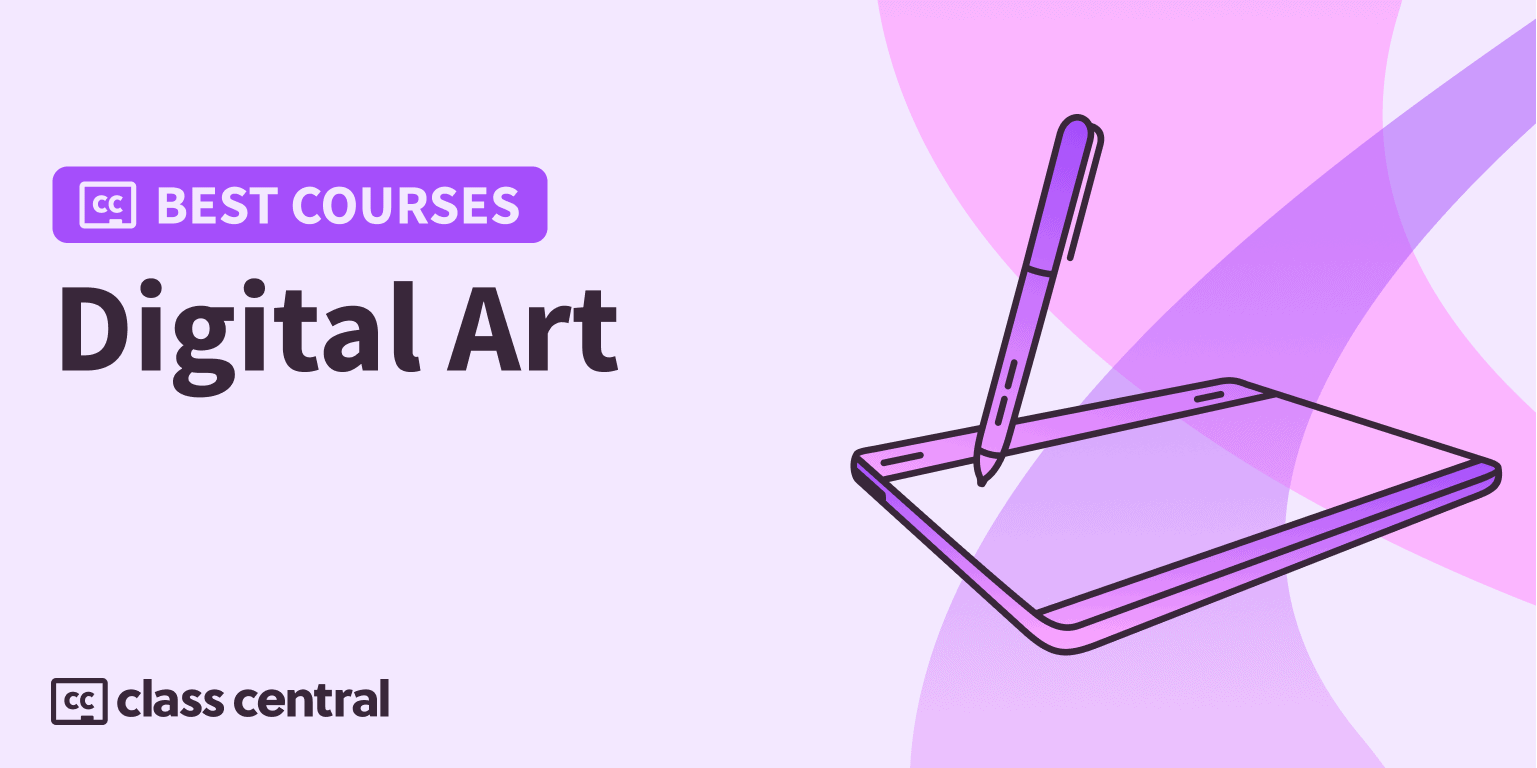
Are you like me who draws on paper but wants to shift to digital mode so that you can undo your mistakes as many times as you want without torturing your paper? Or maybe you’re a professional digital artist willing to take your skills to the next level. Whatever your goals, online courses are a great way to get started.
In this guide, I’ve selected the 10 best free and paid digital art online courses for you from the 1.5K+ digital art courses on our catalog by following a well-defined methodology that you can find below.
But if you want to jump straight to the results, here are my top 10 picks. You can click on a course to jump to the corresponding section:
| Course | Workload | In Brief |
| 1. Digital Painting Master Class : Beginner to Advanced (Udemy) | 30 hours | Best comprehensive course for intermediate learners to master digital painting using Photoshop and Illustrator |
| 2. You Can Draw This! (Art with Flo) | 75 hours | Comprehensive free course for intermediate learners to master digital drawing and painting |
| 3. Pixel art for Video games (Udemy) | 12 hours | Best course for beginners to learn pixel art for video games using Adobe Photoshop |
| 4. Adobe Illustrator Advanced Vector Artwork (Udemy) | 8-9 hours | Project-based course for beginners to master vector illustration using Adobe Illustrator |
| 5. Animals (Genevieve’s Design Studio) | 22-23 hours | Elaborate free intermediate-level course for experienced users to learn to digitally paint animals |
| 6. A Pro’s Guide to Digital Comic Book Coloring (Udemy) | 6 hours | Great course for beginners to to learn comic book coloring using Adobe Photoshop |
| 7. Ultimate Guide to Digital Sketching: Beginner to Advanced (Udemy) | 6 hours | Software-independent course for beginners to learn digital art, focuses on digital sketching |
| 8. Complete Beginner’s Guide to Digital Art (Udemy) | 24 hours | Comprehensive, in-depth course for beginners to build a solid foundation in (digital) art |
| 9. Pixel Art Master Course – Beginner to Expert/Freelance level – for Video games – PART 1/3 (Beginner) (Skillshare) | 5 hours | Alternative course for beginners to learn digital art, focuses on pixel art, contains exercises |
| 10. Digital Painting (Proko) | 9 hours | Good course for beginners to learn digital painting using Adobe Photoshop |
What is Digital Art?
According to Adobe:
Digital art is any artwork that draws upon digital technology as an essential part of its creative process.
It encompasses a wide range of techniques, from digital drawings, paintings and illustration, to photos, videos and even sculpture. All can be classed as digital art, so long as they’re created, enhanced or exhibited digitally.
Some of the different forms of digital art include digital drawing, digital painting, digital sculpting, animation, pixel art, photography, and video. So you can understand that the spectrum of digital art is vast and enables you to explore and choose what you want to work on.
Some of the most popular digital art software include Adobe Illustrator, Adobe Photoshop and Procreate. You’ll get the opportunity to learn more about these applications and how to use them for your digital art in the courses in this guide.
Why are Digital Art Skills Important?
Digital art is also backed up by a ton of media outlets for artists on the web, from opportunities to develop content for social media and digital marketing, to animation and game development. This is certainly the perfect moment to start learning and improve your skills, even more considering the global art market was valued at 65.1 billion dollars in 2021, rapidly recovering to pre-pandemic levels.
There are over 5,000 jobs available for digital artists on Glassdoor, nearly 400 jobs on LinkedIn, and nearly a hundred freelance jobs on Upwork. Also, the average salary for a digital artist is $67,020 a year in the United States (as of November 2022).
What is My Experience with Digital Art?
As far as drawing on iPad is concerned, I’ve used apps such as Autodesk Sketchbook and Tayasui Sketches. And on my desktop, I’ve drawn in Photoshop using graphic tablets.
Besides that, I am a Guided Project Instructor and a Beta Tester at Coursera, having tested many courses before they’re officially launched. I have taken over 50 online courses in various subjects.
My experience as an online learner and teacher has given me some perspective on what to look for in an online course. I used my experience to evaluate each course in this list.
Course Ranking Methodology
I built this ranking following the now tried-and-tested methodology I used in previous rankings (you can find them all here). It involves a three-step process:
- Research: I started by leveraging Class Central’s database with 100K online courses and 200K+ reviews. Then, I made a preliminary selection of 1.5K+ digital art courses by rating, reviews, and bookmarks.
- Evaluate: I read through reviews on Class Central, Reddit, and course providers to understand what other learners thought about each course and combined it with my own experience as a learner.
- Select: Well-made courses were picked if they presented valuable and engaging content and they have to fit in a set of criteria and be ranked accordingly: comprehensive curriculum, release date, affordability, ratings and enrollments.
The end result is a unique selection of courses that combines a decade of Class Central data and my own experience as an online learner to try to get the best of both worlds. So far, I’ve spent more than 10 hours building this list, and I’ll continue to update it.
Course Ranking Statistics
Here are some statistics regarding this course ranking:
- Combined, these courses have accrued over 120.4K enrollments.
- 3 courses are free or free-to-audit and 7 courses are paid.
- The most-represented course provider in the ranking is Udemy, with 6 courses.
- All 10 courses are in English.
- The digital art subject is followed by over 2.5K learners on Class Central, and accounts for over 1.5K courses in Class Central catalog.
So without further ado, let’s get to my picks for the best digital art online courses.
1. Digital Painting Master Class : Beginner to Advanced (Udemy)
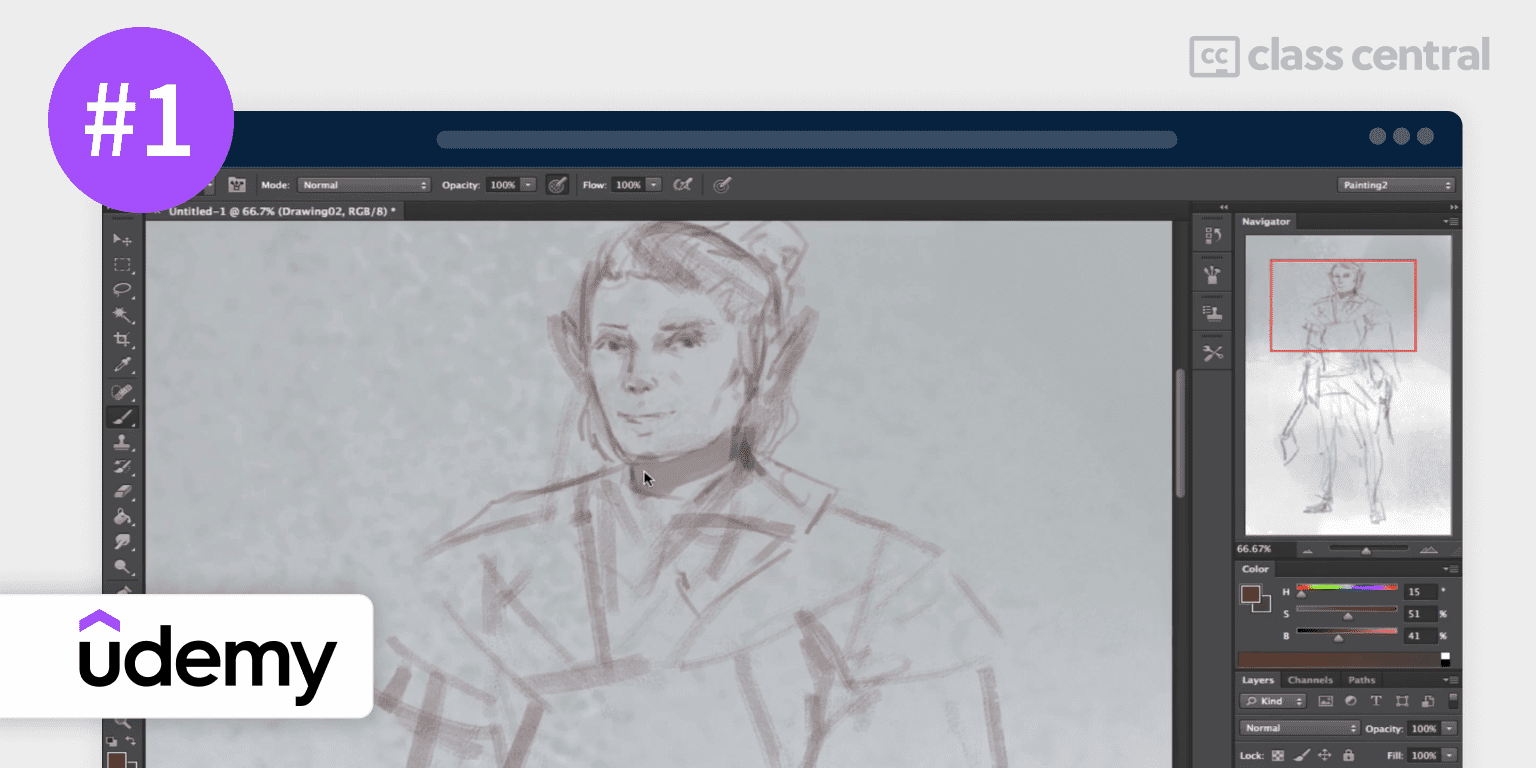
My first pick for the best digital art online course is Digital Painting Master Class : Beginner to Advanced on Udemy.
This is the most comprehensive digital art course on this list. Focused on digital painting, you’ll cover everything from illustrating characters, creatures, landscapes and more in Adobe Photoshop and Adobe Illustrator. Whether you are a beginner or a professional digital artist, you’ll benefit from this course as you learn step by step the fundamentals of the software and work your way up to more advanced digital painting techniques used by professionals.
What You’ll Learn
In this course, you’ll start by becoming familiar with the interfaces of Adobe Photoshop and Adobe Illustrator and mastering the most commonly used tools, work on mini projects that will show you the practical applications of Photoshop in the real world, learn professional techniques for lighting, animation and illustration, and explore more advanced digital painting techniques.
How You’ll Learn
The course is broken down into 15 sections. Each section involves about 1 to 8 hours of work. Concepts are taught through a combination of videos and readings .
| Provider | Udemy |
| Level | Intermediate |
| Workload | 30 hours |
| Enrollments | 10.4K |
| Rating | 4.9/5.0 |
| Certificate | Paid |
If you’re interested in this course, you can find more information about the course and how to enroll here.
2. You Can Draw This! (Art with Flo)
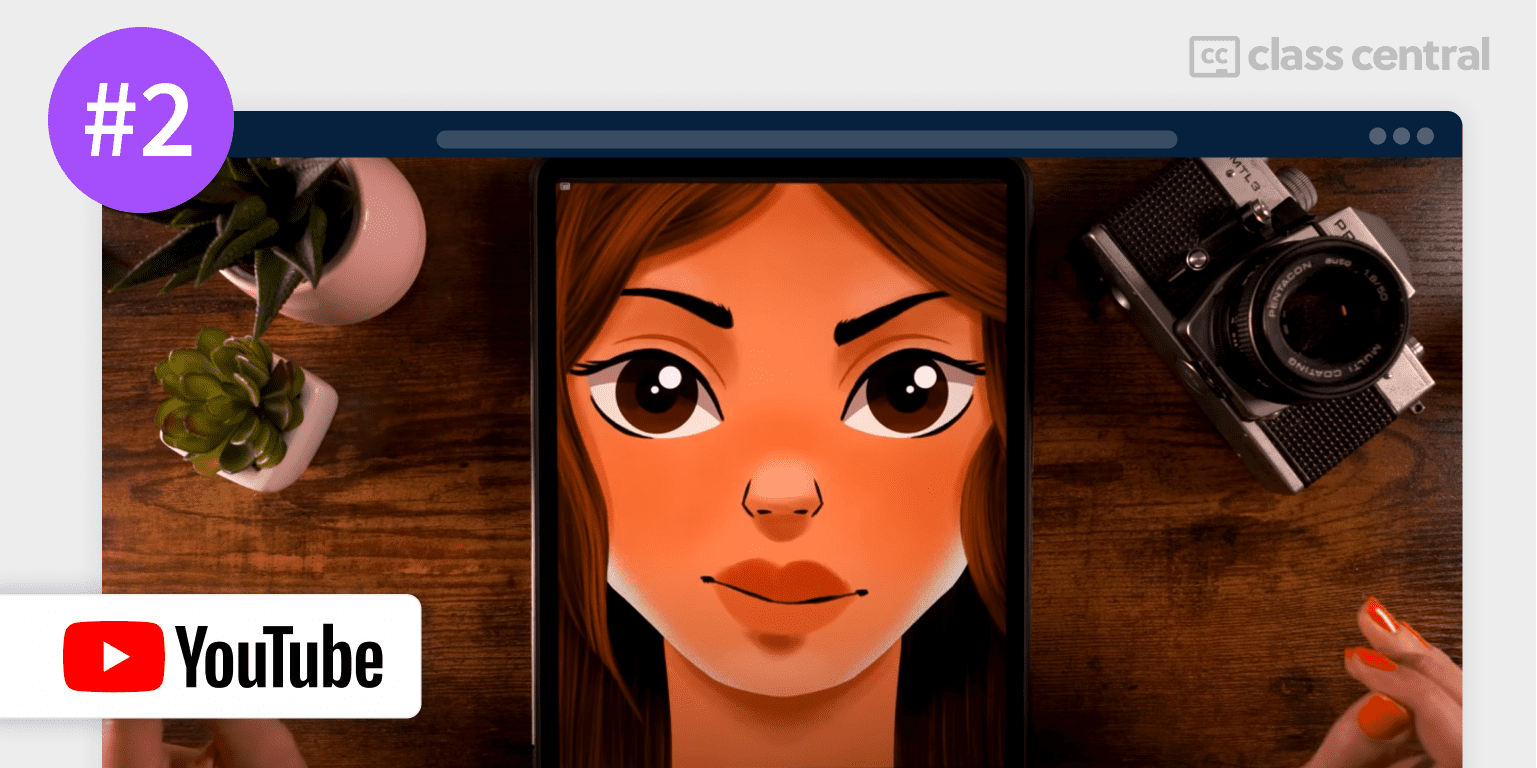
My second pick for the best digital art online course is the free course You Can Draw This!, offered by Art with Flo on YouTube.
This course is ideal for those who prefer a more flexible and creative approach to learning digital art and illustration. In order to be able to take this course, it’s better that you have some experience in using Procreate or similar apps. These tutorials are easy to follow and will take you through all the steps of the drawing and painting process. Each video covers one type of drawing from start to finish such as landscape, graffiti. mandala, 3D text, animals and many more.
What You’ll Learn
In this course, the instructor will guide you through the basic setup and step-by-step process to achieve professional results for each tutorial. You will learn hundreds of styles of digital painting and drawing in this course: from outer space landscapes to cute animals, hamburgers, phone wallpapers, mandalas, and much more.
This course will also provide you with some more abstract concepts to help you create 3D typography, work with geometric shapes, neon signs, condensation art, etc. You can take the tutorials in any order as they teach the concepts independently from start to finish.
How You’ll Learn
The course is broken down into 147 videos. Each video involves about 15 to 30 minutes of work. Concepts are taught through video lectures only. You can also sign up to her treasure chest and receive a free bundle of 70+ brushes for Procreate and other freebies.
| Channel | Art with Flo |
| Provider | YouTube |
| Level | Intermediate |
| Workload | 75 hours |
| Certificate | Not available |
Fun Facts
- Art with Flo’s YouTube channel teaches drawing and painting on iPad, mostly in Procreate.
- Their website also contains a collection of Procreate tutorials, articles and resources like special Procreate brushes, color palettes and ebooks.
If you’re interested in this course, you can find more information about the course and how to enroll here.
3. Pixel art for Video games (Udemy)
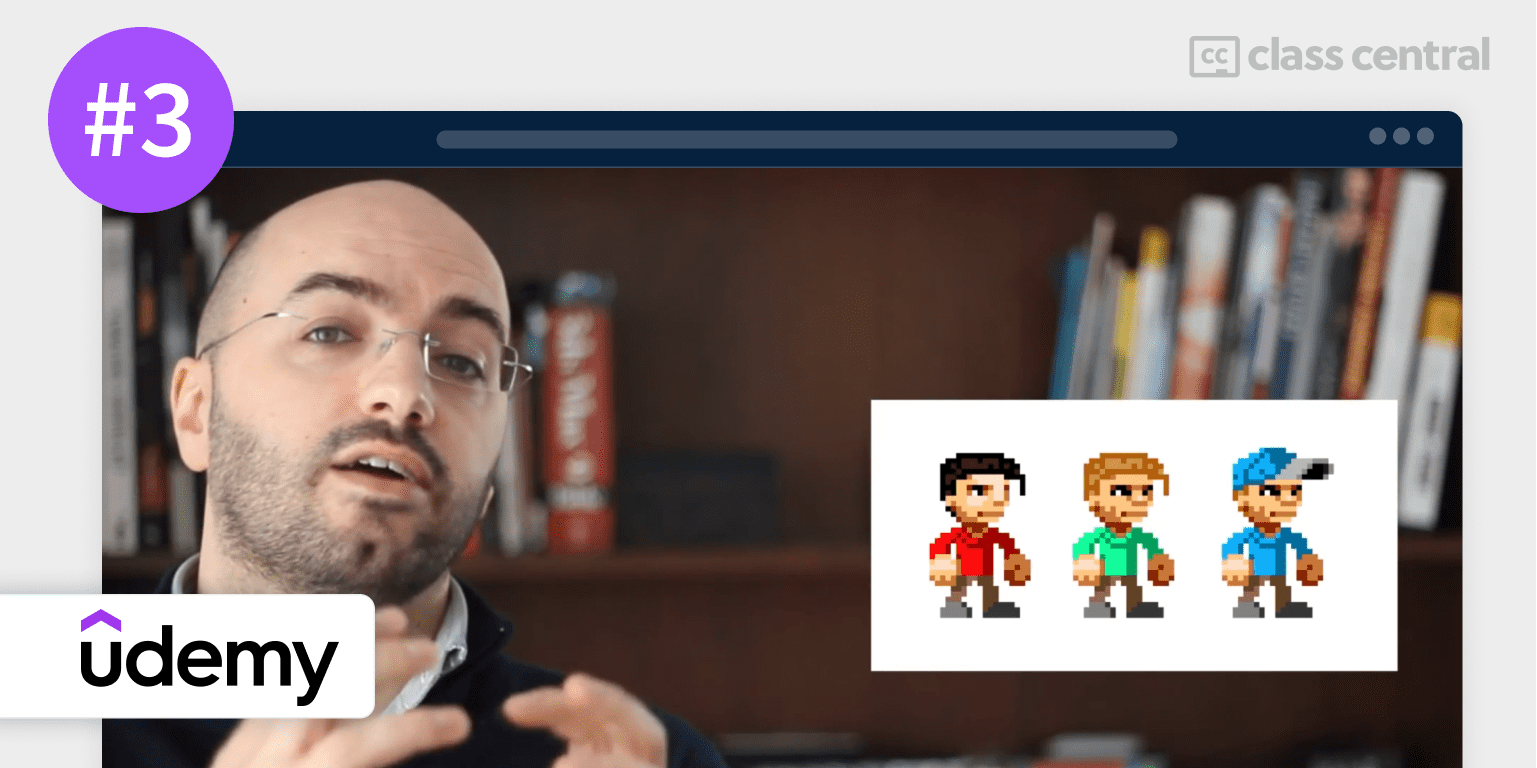
My third pick for the best digital art online course is Pixel art for Video games on Udemy.
If you’d like to create cool pixel art graphics for video-games or any other design, then this course is for you. This course will teach you all you need to know to get started with your own pixel art using Adobe Photoshop. You’ll start with the basics and move up to more advanced topics to give your pixel art the professional look. You’ll not only learn to create a character, you’ll also create animations within minutes.
What You’ll Learn
In this course, you’ll learn the foundations for creating anything in pixel art, create solid line work and stunning shading, learn how to build video-game mockups for your games, create characters and animated them in minutes, create tiles in the top down RPG style, and draw pixel art in Isometric view like an RTS game.
How You’ll Learn
The course is broken down into 14 sections. Each section involves about 30 minutes to 2 hours of work. Concepts are taught through a combination of videos, readings and quizzes. Downloadable resources are also provided.
| Provider | Udemy |
| Instructor | Marco Vale |
| Level | Beginner |
| Workload | 12 hours |
| Enrollments | 21.8K |
| Rating | 4.8/5.0 (3.1K) |
| Certificate | Paid |
Fun Facts
- Vale has been working in the games industry as an amateur since 1998.
- In 2003, he started as a professional and his projects range from all forms of game art, from 3D low-poly to 2D pixel art, vector or even animation.
- He has also taught illustration, 3D modeling, Flash animation and Photoshop at a professional school.
If you’re interested in this course, you can find more information about the course and how to enroll here.
4. Adobe Illustrator Advanced Vector Artwork (Udemy)
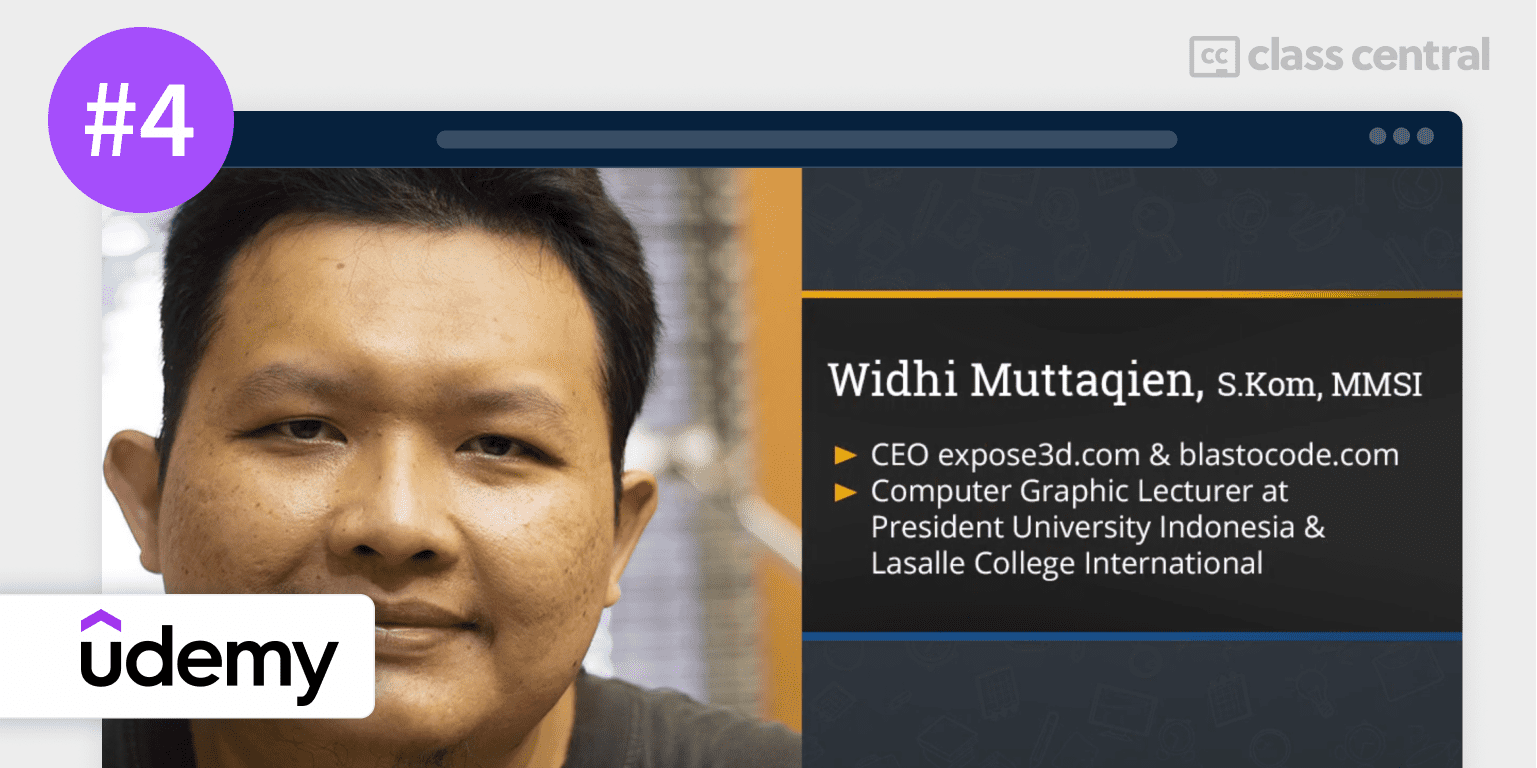
My fourth pick for the best digital art online course is Adobe Illustrator Advanced Vector Artwork on Udemy.
Designed for complete beginners, this course teaches you the basic, intermediate and advanced skills you need to create any type of vector illustration using Adobe Illustrator. Even if you’re not familiar with Illustrator, you’ll learn how to use it from the very basics. The course is hands-on and teaches you the core concepts and the secret techniques through projects covering all types of vector illustrations.
What You’ll Learn
In this course, you’ll create different kinds of vector illustration styles, master the secrets and proven techniques of working with vector illustration in the real production environment, and learn how you can become a vector graphic professional and start making money using the skill learned from this course.
How You’ll Learn
The course is broken down into 9 sections. Each section involves about 30 minutes to 1.5 hours of work. Concepts are taught through a combination of videos, readings and downloadable resources.
| Provider | Udemy |
| Instructor | Widhi Muttaqien |
| Level | Beginner |
| Workload | 8-9 hours |
| Enrollments | 9.9K |
| Rating | 4.6/5.0 (1.8K) |
| Certificate | Paid |
Fun Facts
- Muttaqien is the CEO of Expose Academy and the founder of several other creative-based companies.
- He has a bachelor’s degree in information technology and a master’s degree in business management and information systems.
- He has over 20 years of experience in the CG industry and specializes in digital painting, 3D visualization, animation, game development, web design, video and motion graphics.
If you’re interested in this course, you can find more information about the course and how to enroll here.
5. Animals (Genevieve’s Design Studio)
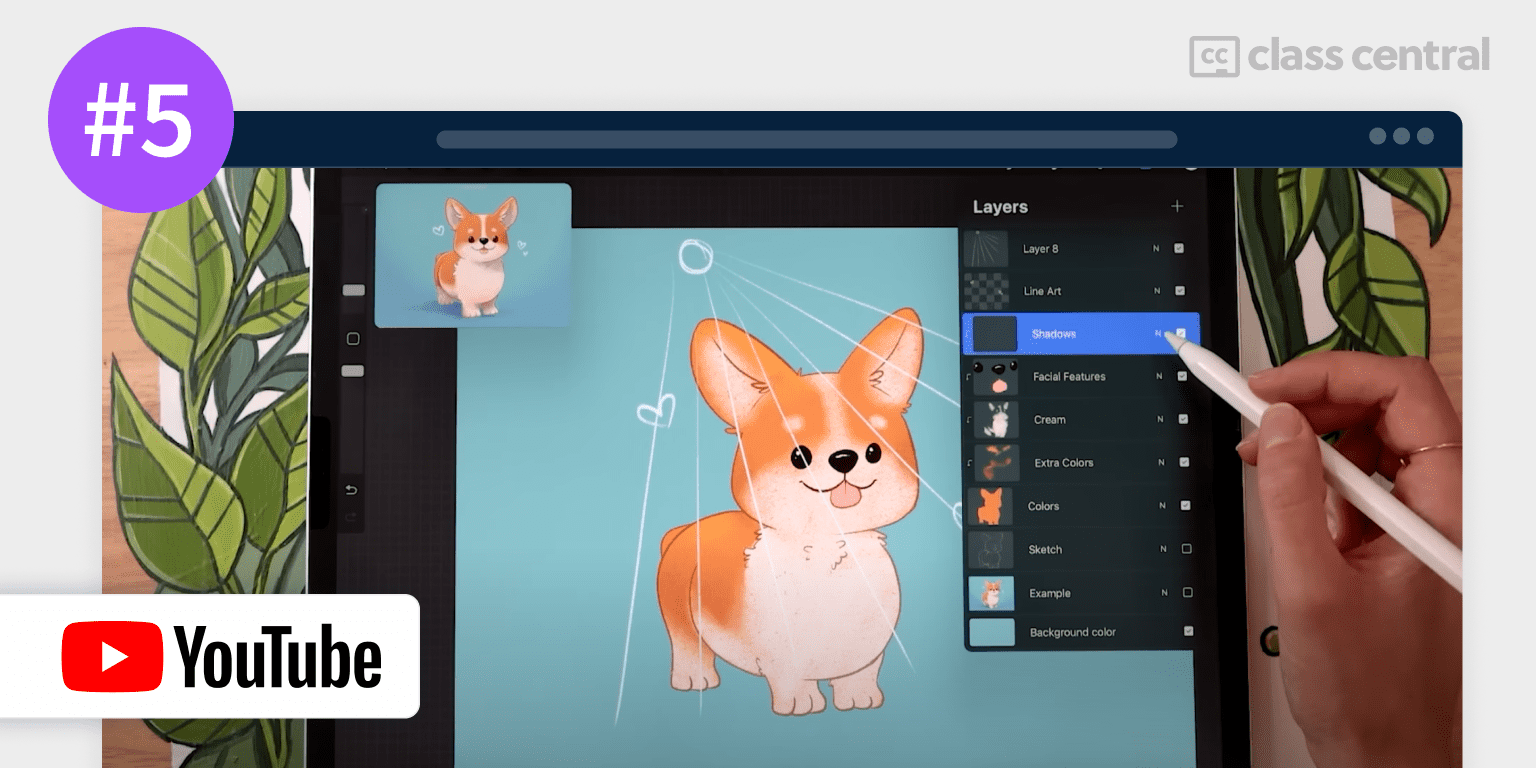
My fifth pick for the best digital art online course is the free course Animals, offered by Genevieve’s Design Studio on YouTube.
The simple name of the course is enough to tell what this course is about. Need I say more? To all the animal lovers out there who have used Procreate before, this is your chance to learn how to draw cute cartoon animals in Procreate with these simple tutorials. Each video will teach you how to draw a different animal from start to finish.
What You’ll Learn
In this course, you’ll learn to sketch, digital paint, color and shade, add background, and animate cute animals such as cat, dog, otter, magical moth, bear, lion, hamster, koala, zen tiger, sloth, fox, witchy cat, spooky bat, squirrel, hedgehog, and winter bunny.
There’s also holiday moose, holiday polar bear, watercolor penguin, watercolor llama, raccoon, watercolor owl, panda, watercolor flamingo, new year tiger, love elephants, fennec, color-changing chameleon, watercolor duck, and watercolor flower bunny.
More animals include watercolor axolotl, watercolor sea turtle, corgi, Krypto from the league of super-pets, watercolor toucan, watercolor mouse, jellyfish, animals in a cup (cat, dog, bunny and more), along with tips and tricks.
How You’ll Learn
The course is broken down into 43 videos. Each video involves about 30 minutes to 1 hour of work. Concepts are taught through video lectures only.
| Channel | Genevieve’s Design Studio |
| Provider | YouTube |
| Instructor | Genevieve |
| Level | Intermediate |
| Workload | 22-23 hours |
| Certificate | Not available |
Fun Facts
- Genevieve makes videos for everyone including designers, entrepreneurs and hobbyists on her YouTube channel.
- She started working as a graphic designer at age 13 and is now a full-time children’s book illustrator and content creator.
If you’re interested in this course, you can find more information about the course and how to enroll here.
6. A Pro’s Guide to Digital Comic Book Coloring (Udemy)
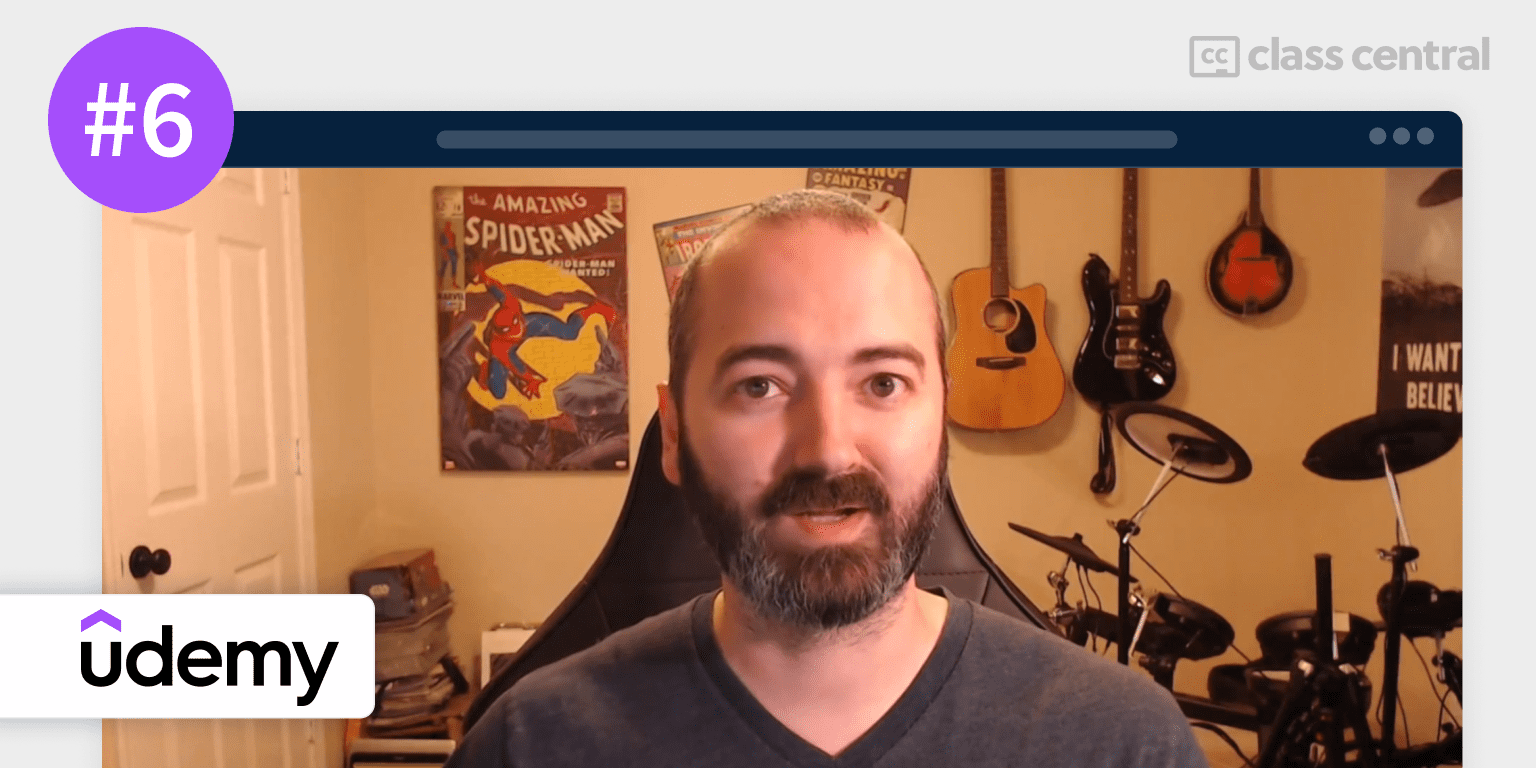
My sixth pick for the best digital art online course is A Pro’s Guide to Digital Comic Book Coloring on Udemy.
As we talk about digital art, how can we forget digital comics? To all the comic enthusiasts out there, here’s your chance to learn sequential comic book coloring from start to finish using Adobe Photoshop. You’ll start from the very basics of layer setup through special effects and post-coloring printing prep, and make your pages read properly while being a storyteller throughout.
What You’ll Learn
First, you’ll learn the basics of setting up your workspace and installing presets for brushes and tool settings, prepare your line art and layers, explore the major tools such as the lasso and magic wand, and understand the basics of color theory.
Then, you’ll learn about separating planes, value and contrast and rendering styles, review the basics of brush modes, create special effects, work with multiple light sources, utilize adjustment layers and textures, prepare your pages for printing, and build a portfolio.
How You’ll Learn
The course is broken down into 11 sections. Each section involves about 15 to 50 minutes of work. Concepts are taught through a combination of videos, readings and downloadable resources.
| Provider | Udemy |
| Instructor | Kurt Michael Russell |
| Level | Beginner |
| Workload | 6 hours |
| Enrollments | 4.1K |
| Rating | 4.7/5.0 |
| Certificate | Paid |
Fun Facts
- Russell has been working professionally as a comic book colorist since 2011 and teaching digital coloring online on YouTube since 2013.
- As of 2020, he has colored over a hundred books for publishers such as DC, Image, Vault, Top Cow, IDW, Oni, and many more!
If you’re interested in this course, you can find more information about the course and how to enroll here.
7. Ultimate Guide to Digital Sketching: Beginner to Advanced (Udemy)
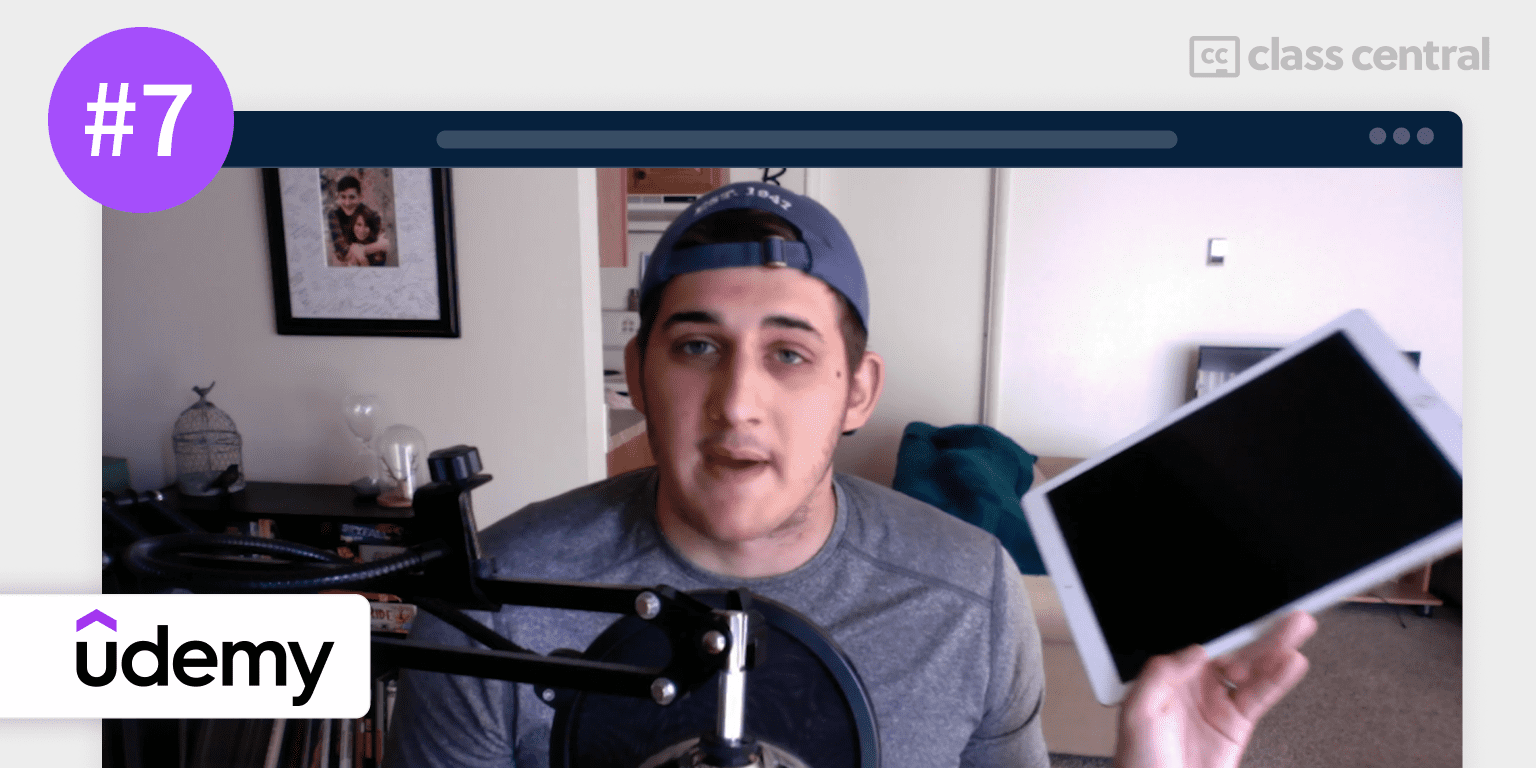
My seventh pick for the best digital art online course is Ultimate Guide to Digital Sketching: Beginner to Advanced on Udemy.
If you want to digitally sketch images for games and film industry like a pro then this course is for you. You’ll learn techniques used to create digital sketches and images that stand out, and you can apply these skills to any digital art software such as Adobe Photoshop or Procreate. After completing this course, you’ll be able to create your own portfolio of digital art and concept art.
What You’ll Learn
First, you’ll digitally sketch from life, use digital tools, digitally sketch objects and scenes from your imagination. create character designs, landscapes and abstract images, improve your sketches using digital techniques, and add detail, texture and shading to your sketches.
How You’ll Learn
The course is broken down into 8 sections. Each section involves about 30 minutes to 1.5 hours of work. Concepts are taught through a combination of videos and downloadable resources.
| Provider | Udemy |
| Instructor | Austin Batchelor |
| Level | Beginner |
| Workload | 6 hours |
| Enrollments | 34.6K |
| Rating | 4.7/5.0 (3.5K) |
| Certificate | Paid |
Fun Facts
- Batchelor is a working professional creative in the game industry.
- He works as a concept artist and freelance illustrator.
If you’re interested in this course, you can find more information about the course and how to enroll here.
8. Complete Beginner’s Guide to Digital Art (Udemy)
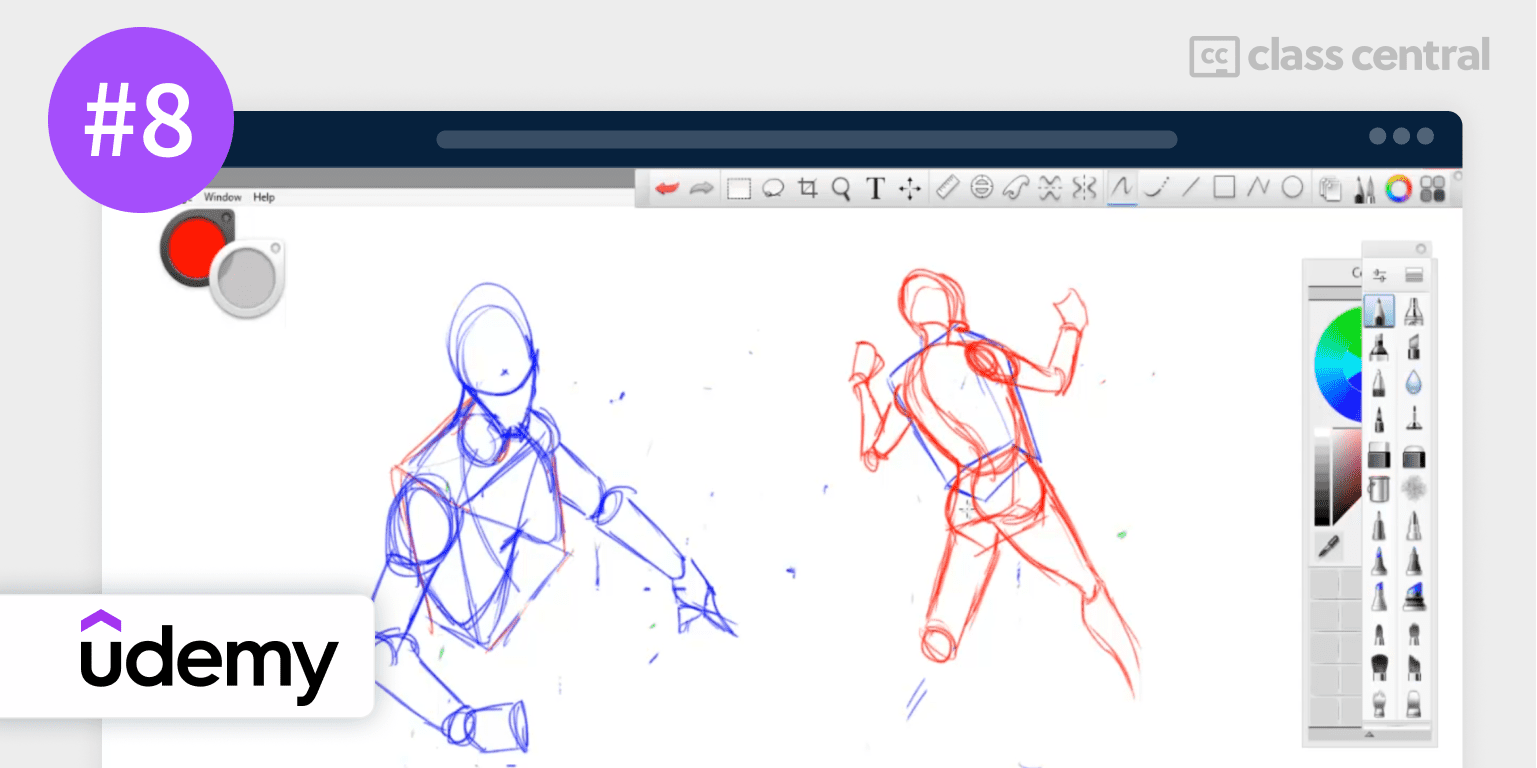
My eighth pick for the best digital art online course is Complete Beginner’s Guide to Digital Art on Udemy.
This comprehensive, in-depth course is not only about digital art but art in general. You’ll start as a beginner or a hobbyist and work your way up to have the mentality of a professional. You’ll build a solid base in (digital) art so that you can enhance your own work. By the end of this course, you’d have mastered the foundations of digital drawing and illustration and started creating art like a pro.
What You’ll Learn
In this course, you’ll learn the basics of line drawing, make simple shapes, understand the relationships between lines and shapes, use lines and shapes to draw from observation, learn the basics of any digital art software, and understand the fundamentals of digital coloring.
How You’ll Learn
The course is broken down into 16 sections. Each section involves about 30 minutes to 3.5 hours of work. Concepts are taught through a combination of videos and downloadable resources.
| Provider | Udemy |
| Instructor | Rich Graysonn |
| Level | Beginner |
| Workload | 24 hours |
| Enrollments | 34.2K |
| Rating | 4.5/5.0 (4.8K) |
| Certificate | Paid |
Fun Facts
- Graysonn is a freelance illustrator who also gives tutorials on YouTube.
- He steadily expanded his work from clients who needed branding to doing work on indie games and apps.
If you’re interested in this course, you can find more information about the course and how to enroll here.
9. Pixel Art Master Course – Beginner to Expert/Freelance level – for Video games – PART 1/3 (Beginner) (Skillshare)
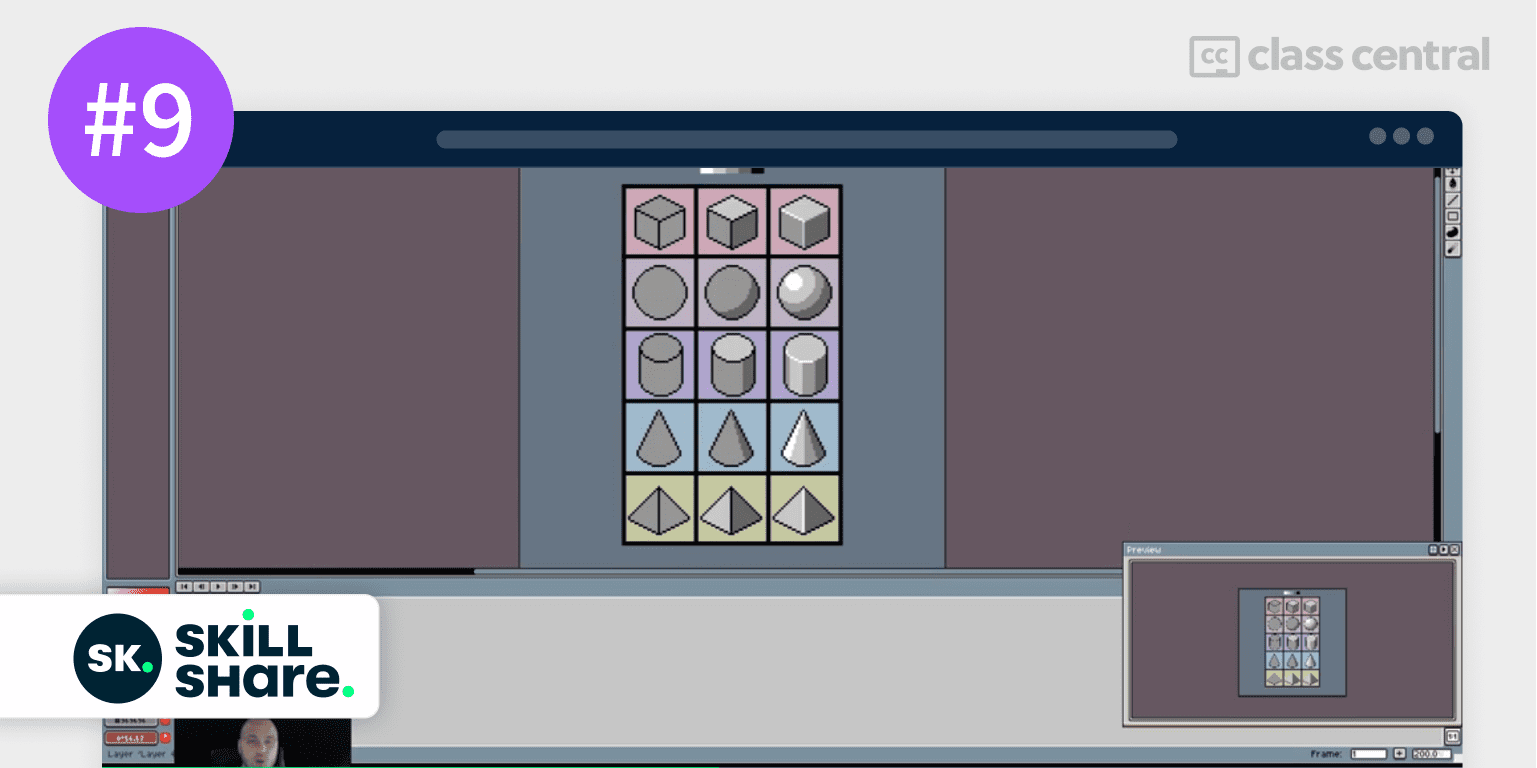
My ninth pick for the best digital art online course is Pixel Art Master Course – Beginner to Expert/Freelance level – for Video games – PART 1/3 (Beginner) on Skillshare.
This course will teach you all you need to know to get started with your very own pixel art for video games. You’ll start from the very basics and move up to more advanced concepts. The course is divided conveniently into different sections, each dedicated to a single topic such as lines and shapes, color and textures, objects etc. At the end of each section, there’s an exercise so that you can apply what you learned.
What You’ll Learn
First, you’ll explore which software to use for pixel art, such as Photoshop, Pyxel Edit, Aseprite and Piskel. You’ll be introduced to lines and shapes, and shading and lighting (value and contrast basics, positive and negative space, basic geometric shapes, shading a cube, sphere, cylinder, cone and pyramid, and dithering).
Next, you’ll move on to colors and textures (hue, saturation, value, color theory, color harmony, color palette, wood texture, metal texture, and applying textures to shapes), create objects (principle of creating objects from simple geometric shapes, creating an orange, potion, book, arrow, sword and gun)
After that, you’ll work with tiles (what tiles are, tiling basics, grass tile, dirt tile, water tile and tileset), backgrounds (making a simple image, using colors and shapes to create depth, and add reflection on water surface), and characters (creating 8×8, 16×16 and 32×32 pixel art character).
Finally, you’ll learn about animation (what animation is, simple grass animation, 8×8, 16×16 and 32×32 character walk, run and attack animations).
How You’ll Learn
The course is broken down into 71 lessons. Each lesson involves about 1 to 10 minutes of work. Concepts are taught through a combination of videos, projects and downloadable resources.
| Provider | Skillshare |
| Instructor | Mislav Majdandžić |
| Level | Beginner |
| Workload | 5 hours |
| Enrollments | 8.7K |
| Rating | 100% |
| Certificate | Not available |
Fun Facts
- Majdandžić is a game artist specialized in pixel art who has been doing pixel art as a freelancer for years.
- Even in his childhood, he was creating new boards and card games!
If you’re interested in this course, you can find more information about the course and how to enroll here.
10. Digital Painting (Proko)
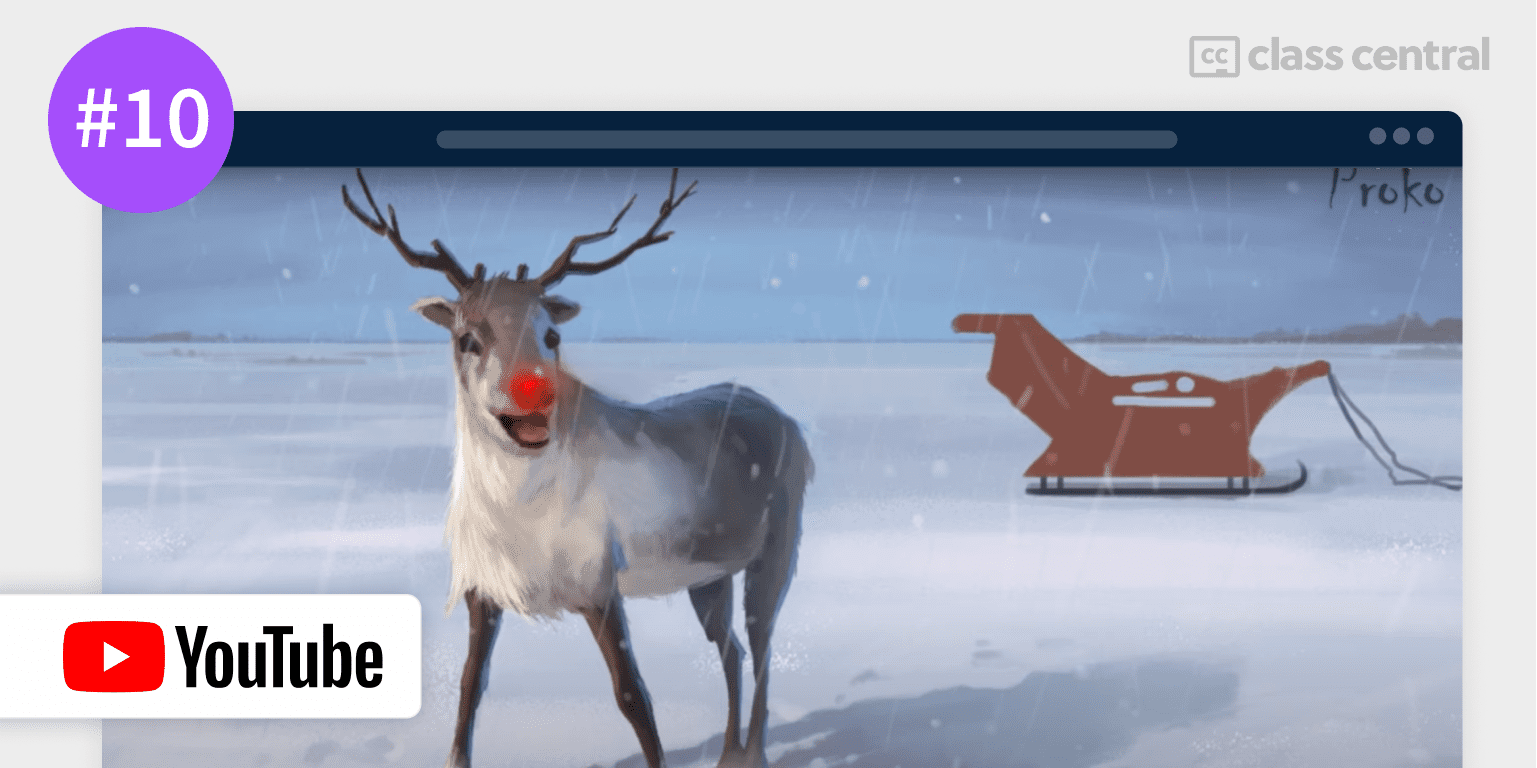
My tenth pick for the best digital art online course is the free course Digital Painting, offered by Proko on YouTube.
This course, or rather, series of tutorial videos, will teach you different aspects of digital painting. You’ll learn the basics of digital painting as well as painting skin tones, working with light, tools, techniques and tips, and also some common digital painting mistakes. Moreover, you’ll also take a look at creating digital paintings in Adobe Photoshop.
What You’ll Learn
In this course, you will learn about environment storytelling, painting skin tones, storytelling with light, character concepting process, Photoshop painting tips, digital shape carving, how to make digital paintings look traditional, digital painting mistakes, caricature critique, tools, techniques and tips, how to paint Rudolph the red-nosed reindeer, and much more.
How You’ll Learn
The course is broken down into 21 videos. Each video involves about 10 to 20 minutes of work. Concepts are taught through video lectures only.
| Channel | Proko |
| Provider | YouTube |
| Instructor | Various |
| Level | Beginner |
| Workload | 9 hours |
| Certificate | Not available |
Fun Facts
- Prokopenko is an artist and teacher.
- His YouTube channel is a resource for artists to get good art instruction videos.
If you’re interested in this course, you can find more information about the course and how to enroll here.
The post 10 Best Digital Art Courses to Take in 2023 appeared first on The Report by Class Central.
]]>The post EMOOCs 2023: Call for Papers [Deadline March 15] appeared first on The Report by Class Central.
]]>
The eighth edition of EMOOCs, the European MOOCs stakeholder summer, will take place at the Hasso Plattner Institute (HPI), in Potsdam, Germany, on June 14–16, 2023.
The conference is dedicated to massive open online courses, from ideation to delivery to evaluation. This edition takes a particular interest in the pandemic’s long-lasting impact on MOOCs — most notably, regarding the role moving forward of online education within traditional education.
In 2021, the event was already set to take place at HPI but had to be moved online due to the pandemic. 2023 will mark the return to an in-person conference, though limited online participation will also be possible.
The call for papers has been published. Submissions close on March 15, 2023.
Program
While the detailed agenda has yet to be determined, the conference will include keynotes, lightning talks, panel discussions, and interactive workshops.
In 2023, the conference sessions will be broken down into five tracks:
- Business, focusing on MOOCs’ place in the enterprise world — most notably, how they may support workforce training and reskilling, and long-term business sustainability.
- International, focusing on MOOCs on the global stage, with a particular interest for MOOC projects and initiatives rooted in Latin America, Australia, Africa, and Asia.
- Policy, focusing on the political and societal issues surrounding MOOCs, such as how policy design may support MOOC development with a view to benefiting the greater number.
- Research & Experience, focusing on the academic and practitioner perspective on MOOCs regarding topics such as instructional design, best use of technology, and outcome analysis.
- Workshops, focusing on MOOC processes, operations, and know-how, through an interactive, participatory approach.
The conference will also be an opportunity to network. A poster session and social activities will facilitate discussion between participants.
Once released, you’ll be able to find the full conference program here.
Call for Papers
The conference welcomes submissions on a wide variety of MOOC-related topics. This edition has three focal points:
- The long-lasting impact of the pandemic on online education. COVID prompted a global move to online education. As a result, many people who’d never tried online learning before are now familiar with it. So now seems like a good time for a debrief. What was the impact of the pandemic on MOOCs and vice versa, and now that the pandemic impetus on online education has abated, what should be the role of MOOCs moving forward?
- The normalization of online education as part of regular education. Be it through the popularization of blended learning or the multiplication of MOOC-based online degrees over the last decade, the line between traditional education and online education has been getting blurrier. What should we expect next in this progression, and how do we get there?
- The global cooperation around MOOCs. MOOCs are inherently a global phenomenon that calls for international cooperation. What are some of the promising MOOC projects underway, and how can their development be facilitated through cooperation?
Papers should be submitted in one of the five tracks, and they may take the form of lightweight proposals, short papers, full research papers, or workshop proposals. The conference welcomes the perspectives of many stakeholders, including educators, researchers, technologists, and decision-makers.
The deadline for submitting a paper is March 15, 2023. You can find the full call for papers here.
Class Central is a media partner of EMOOCs 2023
The post EMOOCs 2023: Call for Papers [Deadline March 15] appeared first on The Report by Class Central.
]]>The post 7 Best Elm Courses to Take in 2023 appeared first on The Report by Class Central.
]]>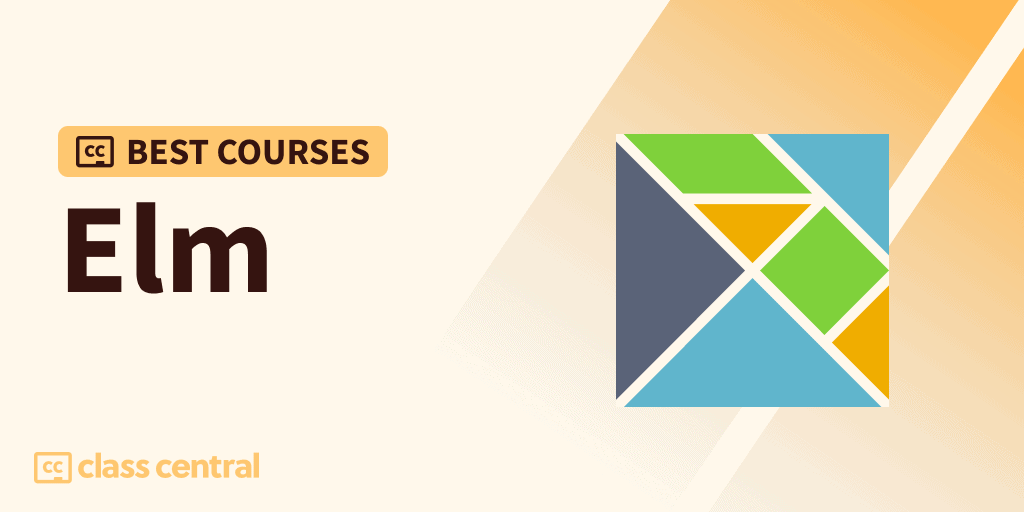
Are you fed up with silly problems such as trying to center an image in a box or reuse visual elements on multiple web pages?
Does your code worry you even when it has been ‘completed’ and pushed to production?
Do you get tired of dealing with the complexity of other web development languages and frameworks?
Then you need to check out Elm.
Elm is a functional programming language for building front-end web applications. It’s highly expressive and easy to read, and it also has a strong focus on user-interface development, which makes it well-suited for building interactive web applications. Many of the latest functional features such as immutability, stateless functions, anonymous functions, and pattern matching are incorporated into the language. But the best part is Elm’s very own architecture which makes managing data flow between various components a breeze.
Elm is a perfect choice for developers who want to build high-quality, interactive web applications with ease and efficiency, which is why companies such as Microsoft, IBM, NoRedInk, and Prezi use Elm for their front-end applications.
If you’re interested in learning more, continue reading to find my top picks for the best Elm courses. Click on one to skip to the course details:
| Course | Workload | In Brief |
| 1. Beginning Elm: a gentle introduction to Elm programming language (Pawan Poudel) | N/A | Best overall free comprehensive course |
| 2. Introduction to Elm, v2 (Frontend Masters) | 5–6 hours | Best exercise-based Elm course for JavaScript developers with free trial |
| 3. Elm – The Complete Guide (Carlos Saltos) | 21–22 hours | Best comprehensive project-based Elm course |
| 4. Elm Basics (Jesse Warden) | 1 hour | Best free short introductory Elm course |
| 5. An Introduction to Elm (elm-lang.org) | N/A | Best free guide with code examples |
| 6. Elm (Exercism) | N/A | Best free structured collection of exercises to practice Elm |
| 7. Advanced Elm (Frontend Masters) | 4–5 hours | Best advanced Elm course with free trial |
What is Elm?
Elm is a functional programming language for building front-end web applications, initially designed by Evan Czaplicki in 2012. He found that web development was often difficult, error-prone, and frustrating, and he wanted to create a language that would make it easier to build high-quality, interactive web applications. And thus, Elm was born.
Elm is robust. It’s almost impossible to have runtime errors in Elm thanks to its robust static type system, which ensures that the type of variables must be specified before it can be used (either manually or inferred). Hence, a lot of time and effort is saved when it comes to debugging and testing.
Elm also provides a standardized, novel architecture (Model-View-Update) for organizing code, making data flow management between components easy and eliminating the need to compare and contrast multiple frameworks, allowing developers to focus on the problem at hand.
Elm is lightweight and performant. Elm compiles to a small JavaScript file size, making it ideal for web development, especially for applications with limited resources or slow internet connections. Yet, it is even faster than most popular JavaScript frameworks — even without optimizations. Just look at the following graphs!
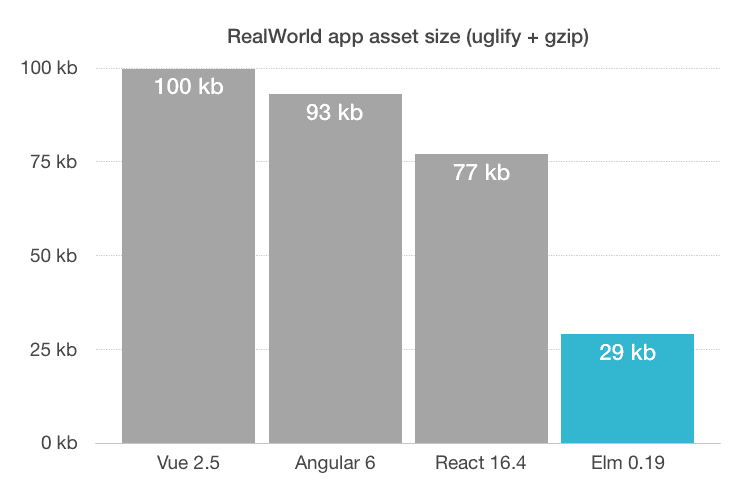
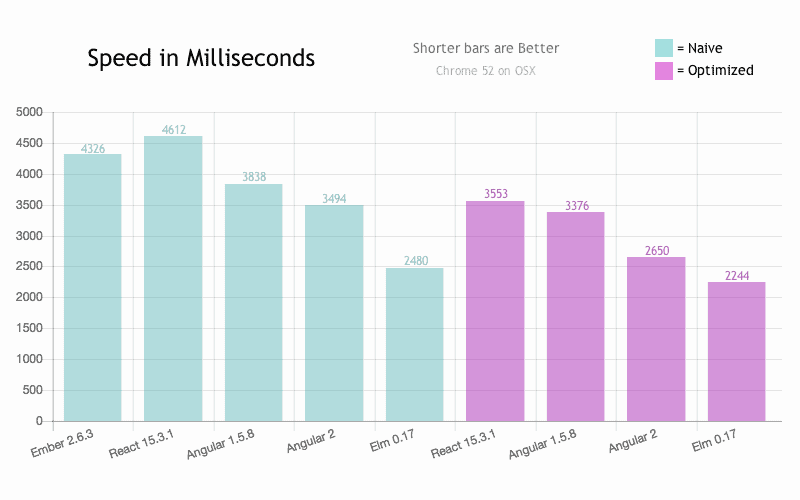
Elm is maintainable. Elm, as a functional language, comes with features you’d expect such as immutability, stateless functions, anonymous functions, and pattern matching, that reduces the complexity of code (such as states). Elm can also easily interoperate with existing JavaScript code, so you don’t have to rewrite everything in Elm (yet).
Elm is simple. Although its syntax is inspired by the Meta Language family of languages (like Haskell and OCaml), which are known for their steep learning curve, Elm instead opts for a simpler yet expressive syntax. Hence, Elm is not only easy-to-learn, but it is also easy-to-reason.
If Elm is so great, who is using it? Some of the biggest examples include:
- NoRedInk: A popular online marketplace website for language learning, which was one of the first large-scale Elm applications (Evan Czaplicki currently works here).
- Prezi: A cloud-based presentation software and storytelling tool that uses Elm for the development of their web-based editor (Evan Czaplicki started on Elm here).
- Brilliant: An educational website that offers interactive math and science courses for students and professionals. Most of Brilliant’s interactives as well as the Diagrammar tool is built in Elm.
- Emirates: The national airline of the United Arab Emirates.
Best Courses Guides Methodology
I built this ranking following the now tried-and-tested methodology used in previous Best Courses Guides (you can find them all here). It involves a three-step process:
- Research: I started by leveraging Class Central’s database with 100K online courses and 200K+ reviews. Then, I made a preliminary selection of Elm courses by rating, reviews, and bookmarks.
- Evaluate: I read through reviews on Class Central, Reddit, and course providers to understand what other learners thought about each course and combined it with my own experience as a learner.
- Select: Well-made courses were picked if they presented valuable and engaging content and they have to fit in a set of criteria and be ranked accordingly: comprehensive curriculum, affordability, release date, ratings and enrollments.
Course Ranking Statistics
Here are some aggregate stats about the ranking:
- All of the courses in this ranking use the latest major version of Elm, 0.19.
- All of the courses except for one are free or provide a free trial.
- All of the courses are suitable for beginners to Elm programming. Unfortunately, none are geared towards complete beginners to programming.
- One of the courses is for advanced Elm programmers.
Without further ado, let’s go through the top picks.
1. Beginning Elm: a gentle introduction to Elm programming language (Pawan Poudel)
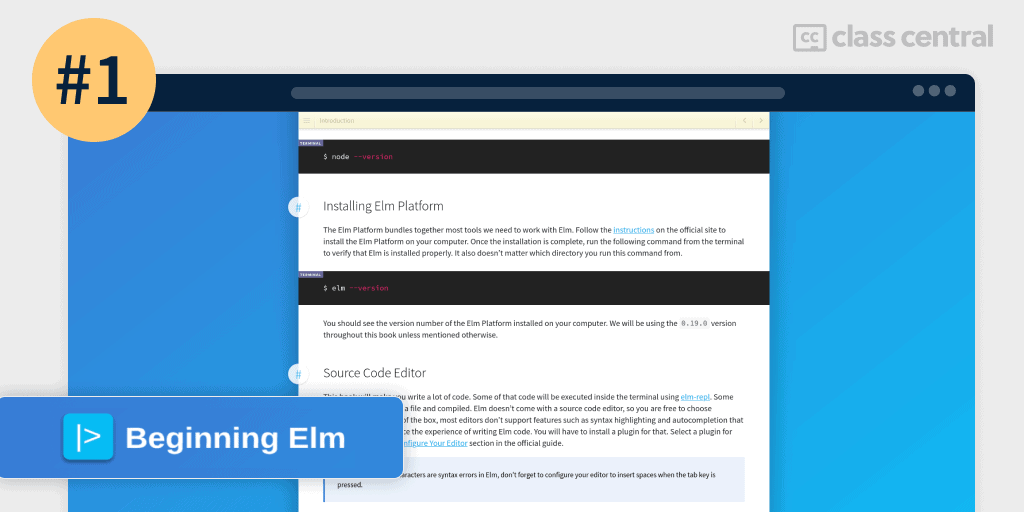
My #1 pick for the best Elm course is Beginning Elm authored by Pawan Poudel.
This free online book is a gentle introduction to the Elm programming language. I chose this as my top pick as it is full of bite-sized nuggets of information. You’ll learn the basic syntax and semantics of Elm and gradually shift towards building interactive modern web applications, picking up the best design principles and patterns that can be applied to every programming language out there.
You should have a basic understanding of programming to take this course, as well as a solid foundation in HTML/CSS.
What You’ll Learn
The course begins with a brief introduction to Elm programming where you’ll install the Elm Platform and explore the various high-level tools and concepts needed to build a simple web-page, such as the Elm programming language, architecture, compiler, and runtime.
One of the hardest things about learning a programming language is getting accustomed to its syntax. You’ll learn the basic syntax as well as data structures like lists, arrays, and records which you can use complex mattern-patching code for nested logic. You’ll also learn how to import third-party modules from elsewhere. Everything you’ve learned so far will help you appreciate and understand how Elm’s immutable values, pure functions, and a powerful type system lead to reliable and maintainable programs.
Elm is both a programming language and an architecture. Both are needed to build robust front-end web applications. After studying the programming language, you’ll study how the Elm architecture manages data flow in apps using the Model View Update pattern. By learning how to create, read, update, and delete data from a server by sending HTTP requests, you’ll be able to build single-page applications that can interact with JavaScript using ports, flags, and custom elements.
How You’ll Learn
This course consists of 8 chapters in total. You’ll learn by reading through the course chapters, looking at the example code, and implementing what you’ve learned on your PC.
| Website | elmprogramming.com |
| Instructor | Pawan Poudel |
| Level | Beginner |
| Workload | N/A |
| Certificate | None |
Fun Facts.
- All code examples can be found on GitHub.
- Pawan Poudel is a highly experienced software developer with over fifteen years of experience in the field. He has built applications using a wide range of programming languages, including C++, Java, C#, Objective-C, Swift, Python, Ruby, and JavaScript, but as of recently has been focusing on learning functional programming languages such as Elm and Haskell.
If you’re interested in this course, you can find more information about the course and how to enroll here.
2. Introduction to Elm, v2 (Frontend Masters)
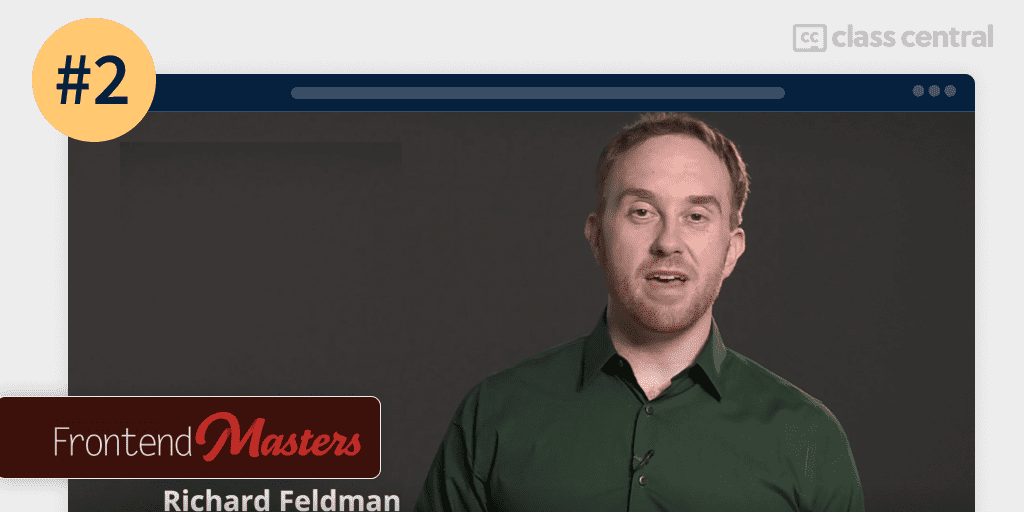
My #2 pick for the best Elm course is Introduction to Elm, v2 on Frontend Masters by the legendary Richard Feldman.
Who is he? He’s well known in the Elm community as the author of ‘Elm in Action’, a thoroughly comprehensive book on Elm. He also worked for NoRedInk, one of the largest companies using Elm in production, and is currently working on making a revolutionary programming language heavily inspired by Elm called ‘Roc’.
In this paid course with 5 courses free trial, Richard will guide you through the basics of the Elm programming language by building a complete Elm application. This application, a Medium clone, is called Conduit (get it? Haha). You’ll utilize elm-package for access to the Elm package ecosystem, incorporate elm-test for writing tests, work with third-party JavaScript libraries through JavaScript Interop, and more!
You should have some knowledge of JavaScript prior to taking this course.
What You’ll Learn
You’ll build a Medium clone called Conduit. You’ll start by setting up the basic Elm template for the project and learn Elm renders a page using the virtual DOM. Then, you’ll learn some of Elm’s basic syntax such as variables, booleans, if statements, and strings. Elm’s functional programming aspects will also be discussed, like how functions work, why data structures such as lists and records are immutable, and how to manipulate the DOM in spite of immutability.
The Elm architecture is the not-so-secret ingredient that makes Elm great. You’ll study how to make applications interactive using the Elm architecture. Afterward, you’ll explore Elm’s type system, including type annotations, the Maybe type, and making your own custom types.
The next section of the course goes further into web development. You’ll learn how to decode JSON structures and then talk to servers using HTTP requests. Finally, you’ll see how to interoperate with existing JavaScript code using Elm subscriptions.
How You’ll Learn
This course has 5–6 hours worth of material consisting of nine lessons and nine exercises.
| Provider | FrontendMasters |
| Instructor | Richard Feldman |
| Level | Beginner |
| Workload | 5–6 hours |
| Certificate | Paid |
Fun Facts
- This course is part of the Functional JavaScript Learning Path.
- Richard is the author of Elm in Action. He’s written a lot of JavaScript, dating back to the pre-jQuery days, but since 2015 has spent more time writing Elm and Rust. Over the years he’s created several popular Elm packages, including elm-css, elm-test, and elm-json-decode-pipeline; he’s also created the JavaScript seamless-immutable library and a fully-featured programming language compiler in Rust. He hosts both the Philadelphia Elm Meetup and the Philadelphia Rust Meetup.
- I really liked this talk of his called Outperforming Imperative with Pure Functional Languages where he discusses how he managed to make Roc blazingly fast. Check it out if you want to know more about the internals of languages.
If you’re interested in this course, you can find more information about the course and how to enroll here.
3. Elm – The Complete Guide (Carlos Saltos)
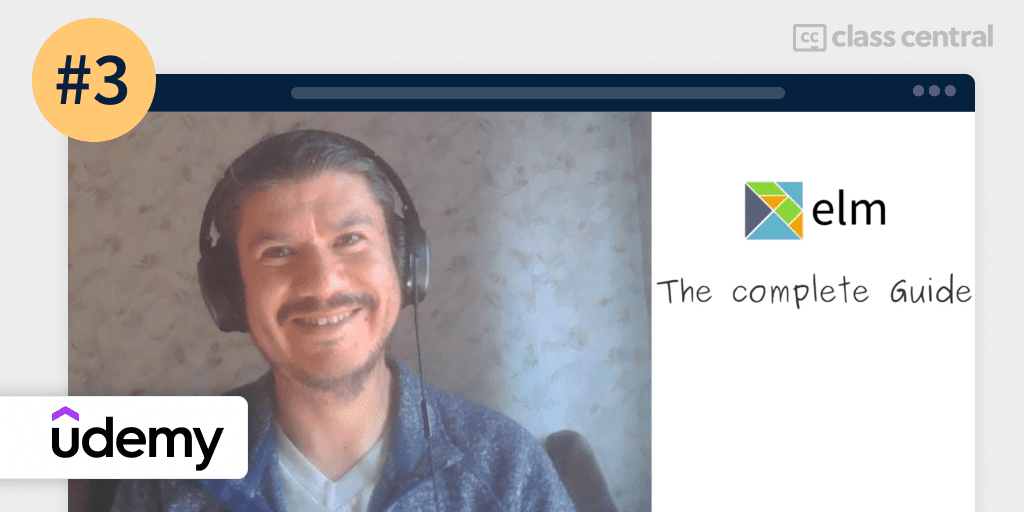
My #3 pick for the best Elm course is Elm – The Complete Guide, which teaches you how to build modern web apps using Elm. This comprehensive paid course will teach you through hands-on learning, where you’ll create several websites to help you master the language, architecture, and design principles.
To take this course, you should know HTML. No JavaScript experience is required.
What You’ll Learn
You’ll quickly get started learning the language by building a “Hello, World!” Elm program from the ground up. This serves as your first introduction to the Elm Live development cycle, where you’ll write code and see changes quickly reflect itself in your program in real-time.
Afterward, you’ll embark on many different web development projects to help you grasp the principles of the Elm Architecture. Some of these projects include learning how to create visually appealing yet accessible user interfaces that can adapt to different screen sizes with Elm UI, presenting data in a clear and concise way with Elm Chart, and creating animations using SVG and Elm VG. You’ll also learn how to make API calls and handle JSON data with Elm JSON, and debug web applications by traveling back in time with the Elm Debugger. Finally, you’ll optimize and deploy your web application to production using JAMStack or other options such as DigitalOcean, AWS, and Nginx.
How You’ll Learn
This course is 21–22 hours long. You’ll learn by watching the series of hands-on videos, where you’ll follow along with the instructor to create beautiful websites as projects.
| Provider | Udemy |
| Instructor | Carlos Saltos |
| Level | Beginner |
| Workload | 21–22 hours |
| Enrollments | 430 |
| Rating | 4.3 / 5.0 (50) |
| Certificate | Paid |
Fun Facts
- Carlos Saltos is a software engineer with more than 12 years of experience developing full stack applications. He specializes in languages like Scala, Ruby, Elm and Java using Linux servers on the cloud with Amazon AWS and Microsoft Azure.
If you’re interested in this course, you can find more information about the course and how to enroll here.
4. Elm Basics (Jesse Warden)
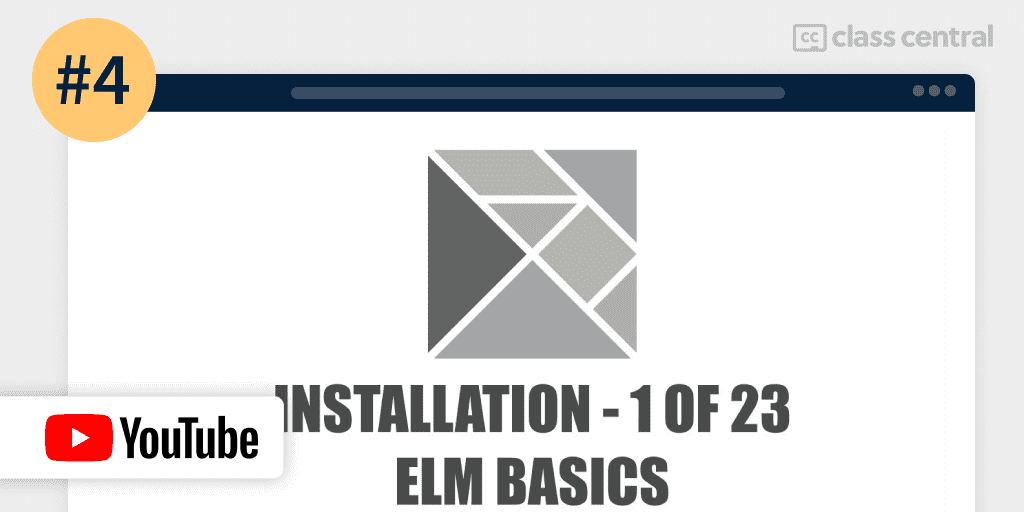
Elm Basics is a free short crash course where you’ll build a working Elm application in less than an hour with VSCode and Node.js. It covers less of the theoretical concepts and more on getting you started.
You should have some experience in any programming language to take this course.
What You’ll Learn
You’ll begin this course by setting up Elm in VSCode and its necessary plugins and tools, such as the REPL, make, and init. Then, after creating the source JSON file, you’ll initialize a local web development server and begin writing your first Elm application.
You’ll go over the basic structure of an Elm application, which consists of the main function as well as the Elm architecture of Model-View-Update. The three-part architecture requires an initial value of the model, a view function to represent the model on the screen and an update method to handle the changes to the data. Next, you’ll learn how to handle user input in the case of text forms or buttons, and trigger an event to send a message to the model and request an update to the model. You’ll also understand how to use the Maybe type to handle the possibility of errors when parsing user input.
How You’ll Learn
This course is 1 hour long. You’ll learn by watching the series of instructional videos and following along with the instructor as he demonstrates the ins-and-outs of developing an Elm application.
| Provider | YouTube |
| Instructor | Jesse Warden |
| Level | Beginner |
| Workload | 1 hour long |
| Enrollments | 52K |
| Certificate | None |
Fun Facts
- Jesse’s channel revolves around programming and fitness/nutrition topics from enterprise to gaming, from Sencha to simple JavaScript, from Flash & Flex to Corona SDK.
- To follow up this course, take a look at his much more advanced course where he builds a Temperature Converter in Elm & Bulma.
If you’re interested in this course, you can find more information about the course and how to enroll here.
5. An Introduction to Elm (elm-lang.org)
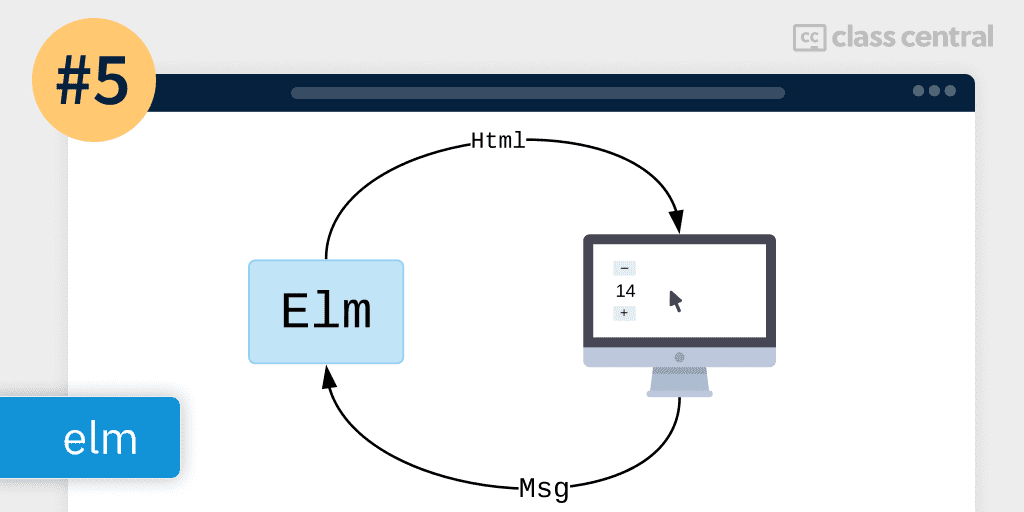
The official guide to Elm, An Introduction to Elm, is a free comprehensive resource that will teach you the basics of programming in Elm, as well as fundamental principles and patterns to help you create interactive applications using the renowned Elm Architecture. By the end, you’ll have a concrete understanding of the core ideas and patterns that make Elm nice to use.
Prior experience with programming languages (JavaScript preferred) is required to take this course.
What You’ll Learn
You’ll start by immediately familiarizing yourself with the values and functions of Elm. Then, you’ll quickly explore the intuitive Elm architecture by building simple buttons, text fields, and forms programs.
Moving on, you’ll learn about types and even create custom types yourself as a way to guarantee that your app will not crash during runtime. Pattern matching will prove itself handy when extracting values from types that hold data, or when handling errors by using Maybe and Result types.
The Elm Architecture handles mouse and keyboard interactions, but what about talking to servers? You’ll learn about commands and subscriptions, which are ways to handle side effects in Elm such as making HTTP requests and working with JSON data. They can also help you interoperate with JavaScript by passing data between them JavaScript.
Next, you’ll learn web app structure and best practices of creating web apps in concepts such as in navigation, URL Parsing, and modules. Finally, you’ll learn how to optimize an Elm app through techniques such as Html.lazy and Html.keyed for rendering large lists of data in Elm and minification for reducing the size of your code.
How You’ll Learn
This course is 12 hours long. You’ll learn by reading through the course materials and applying what you’ve learned through your own practice.
| Website | elm-lang.org |
| Level | Beginner |
| Workload | N/A |
| Certificate | None |
Fun Facts
- Ce cours est également disponible en français (this course is also available in French).
If you’re interested in this course, you can find more information about the course and how to enroll here.
6. Elm (Exercism)
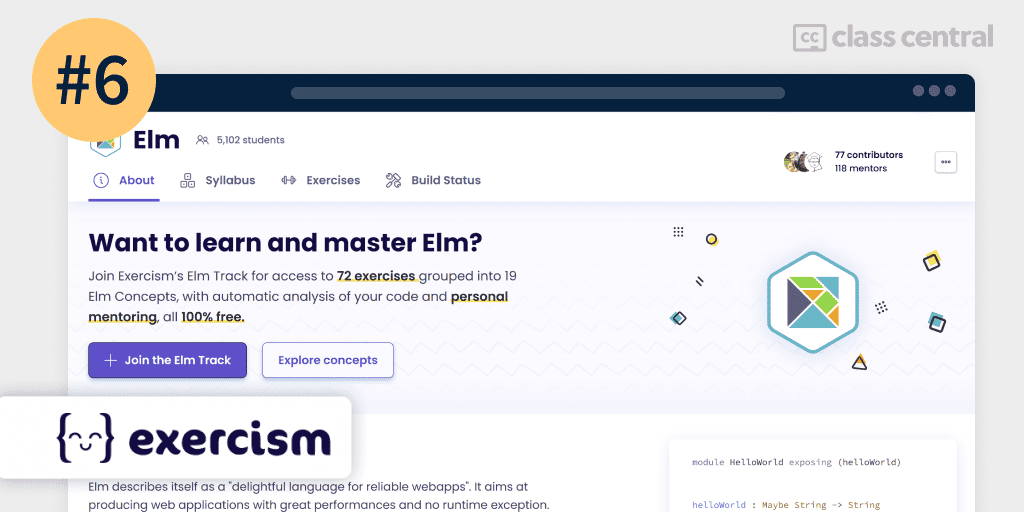
Exercism is a free platform that provides a wide range of coding exercises to help developers improve their programming skills in various different languages, one of them being Elm.
The best feature of Exercism is that they offer free personal mentoring to everyone. After completing and submitting an exercise, you can request feedback from mentors who will offer you advice on how to improve your code and think like an Elm developer.
What You’ll Learn
This course is divided into two sections: learning mode and practice mode.
In learning mode, you’ll progress through a series of exercises that are designed to help you build a solid understanding of the material covered. The exercises are organized into a syllabus tree, with each concept building on the one before it.
The syllabus covers a wide range of topics, including Elm basics, data structures such as lists, dicts, sets, and records, and functional concepts such as partial application, function composition, and pattern matching. The exercises start with a learning exercise that explains the concept, followed by coding exercises of varying difficulty to help you solidify your understanding of the topic.
In practice mode, you’ll have the freedom to choose from a selection of exercises of three different levels of difficulty. If you feel confident in your abilities, you can take on more challenging exercises to test and improve your skills.
How You’ll Learn
This course is self-paced, so you can take all the time you need to complete the 70+ hands-on programming exercises. Each exercise comes with automatic feedback of your code as well as personal mentoring to help you understand your code’s strengths and flaws.
| Provider | Exercism |
| Level | All levels |
| Workload | N/A |
| Enrollments | 5K |
| Certificate | None |
Fun Facts
- Exercism provides exercises on 50+ programming languages like Python, Kotlin, F#, and even WebAssembly.
- Their mission is to help everyone get really good at programming, regardless of their background, share the love of programming, and help people upskill as part of their upward social mobility.
- Around 80 people have contributed towards the Elm syllabus and exercises, with over 120 mentors available at the time of writing.
If you’re interested in this course, you can find more information about the course and how to enroll here.
7. Advanced Elm (Frontend Masters)
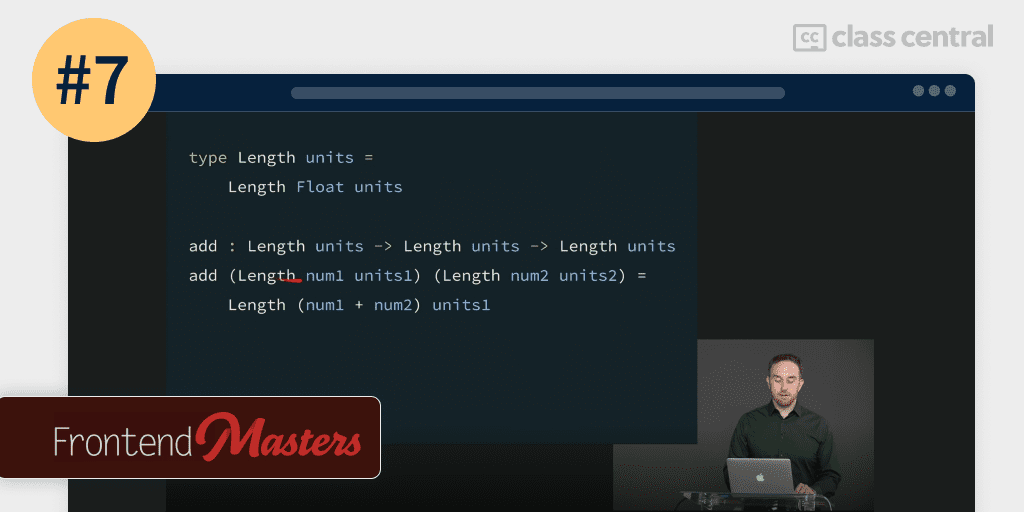
Do you want to transition from using Elm as a hobby, to using it at work or at scale? This paid course is for you!
You’ll learn the best techniques for authentication, scaling, styling, module organization, Single Page Apps, performance optimization, and much more by looking at a real-world example app called Conduit, a Medium clone.
Experience with JavaScript is required to take this course.
What You’ll Learn
The course begins by exploring the benefits of opaque types and validated data to help the compiler look for unhandled edge cases and prevent the codebase from compiling. You’ll also also learn about extensible data and the difference between open and closed records, and practice creating your own custom types to add constraints to your code.
Next, you’ll delve into organizing and scaling Elm applications as they grow in size and complexity. You’ll study another kind of type called narrowing types and how to use them to create logical boundaries, rather than relying solely on file length.
Reusing parts of a user interface can speed up development time and help you resolve defects. Luckily, this can be done easily with helper functions. However, there are some cases where reuse isn’t best practice, and you’ll cover those cases in the course.
Sometimes, there can be multiple sources of truth for the same information. You’ll learn how to ensure there is only one source of information in the end product, along with learning how to decode types.
Finally, you will see how everything you have learned thus far relates to building single-page applications by examining the Conduit codebase.
How You’ll Learn
This course is 4–5 hours long, and consists of eight exercises and eight lessons. After each lesson, you’ll do an exercise based on what you’ve just learned.
| Provider | FrontendMasters |
| Instructor | Richard Feldman |
| Level | Beginner |
| Workload | 4–5 hours |
| Certificate | Paid |
Fun Facts
- Richard currently works for Vendr, a billion dollar company with one of the biggest Elm frontend deployments in the world. He plans on getting Roc in production there, which is extremely exciting!
If you’re interested in this course, you can find more information about the course and how to enroll here.
The post 7 Best Elm Courses to Take in 2023 appeared first on The Report by Class Central.
]]>The post Coursera’s New Deal with Google Could Cost the Company Millions appeared first on The Report by Class Central.
]]>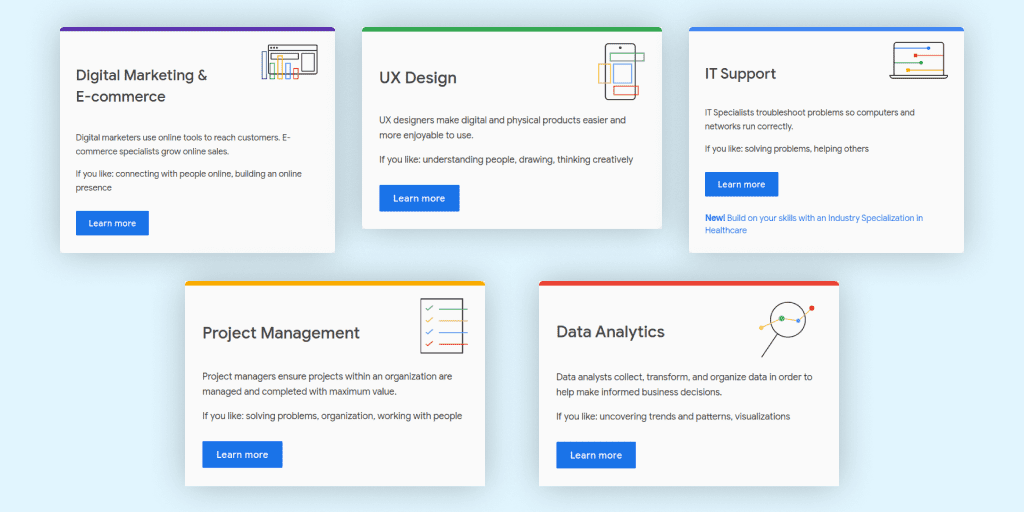
Last week, Coursera published its 2022 annual report. I’ll post a detailed analysis soon, like I did last year.
But in this article, I’d like to focus on what Coursera’s CFO Ken Hahn described earlier this month during Coursera’s earnings call as a “geography shift within the P&L” of the company.
Let’s dig into it.
The Change
So what’s this “geography shift” about? Well, it stems from a significant event at Coursera: the “multi-year contract extension we secured with our largest industry partner in this new year”, as Hahn puts it.
This largest industry partner is Google. Basically, Google renegotiated certain terms with Coursera — in particular, their revenue share agreement. To understand the significance of the new agreement, we have to first look at the old one. Here’s how Hahn described the previous arrangement:
“In lieu of a higher revenue share, some industry partners prioritize additional spend to promote their brand, global reach, and social impact initiatives, which is included as part of our operating expenses, primarily as sales and marketing efforts and content production.”
Put simply, industry partners let Coursera get a bigger cut of the revenue generated by their offerings, and in return, Coursera invested into sales, marketing, and content production, which benefited their partners.
For Coursera, this tradeoff had two immediate effects:
- Higher margins: Since Coursera got a bigger cut of the revenue, their margins improved. This is particularly notable in their consumer segment.
- Higher operating expenses: Since Coursera invested more in sales, marketing, and content production, their operating expenses increased.
I was able to verify this to a certain point by looking at Coursera’s segment margin and losses over the years. I came across these during my analysis of their IPO filing (S–1) and 2021 annual report (10–K).
| Consumer Margin | Enterprise Margin | Total Margin | |
| 2017 | 50% | 64% | |
| 2018 | 54% | 71% | |
| 2019 | 53% | 71% | 51% |
| 2020 | 55% | 69% | 53% |
| 2021 | 66% | 67% | 60% |
| 2022 | 73% | 70% | 63% |
| 2023 (Projected) | 52% | 52% |
Here’s how Coursera defines the Segment (Consumer, Enterprise, and Degrees) Gross Margin:
Segment gross profit represents segment revenue less content costs paid to educator partners; segment gross margin is the quotient of segment gross profit and segment revenue.
Google’s first Professional Certificate on Coursera, the Google IT Support Certificate, was announced back in 2018. But it was only in March 2021 that Google introduced three new certificates on the platform. As you can see above, in 2021, Coursera’s consumer margin jumped to 66%, from 55% the prior year.
And in Q2 2021, Coursera’s losses increased significantly, from 18.7M to 46.4M, as you can see below.
So the expansion of Google’s offering coincided with a higher consumer margin and higher losses on Coursera’s side. This seems consistent with Hahn’s description of their prior agreement, suggesting that the losses might stem from the additional “sales and marketing efforts and content production”.
Those were the old terms. Now, let’s look at the new ones.
The Impact
Under the new terms, Google and Coursera are switching to a more “standard revenue share”. And this transition is what is supposed to bring about the “geography shift” discussed earlier. Here’s how the CFO put it in the earnings call:
“First, the transition to a more standard revenue share will result in a geography shift within the P&L of an estimated 10 percentage points of total revenue, from operating expense to cost of revenue. We now expect both total gross margin and our Consumer segment margin to be approximately 52% this year.”
In Coursera’s 2021 annual report (10–K), the “cost of revenue” is defined as follows:
“Cost of revenue consists of content costs in the form of a fee paid to educator partners and expenses associated with the operation and maintenance of the Company’s platform. These expenses include the cost of servicing both paid learner and educator partner support requests, hosting and bandwidth costs, amortization of acquired technology and internal-use software, customer payment processing fees, and allocated depreciation and facilities costs.”
But I think in this case, it’s mainly the content costs, in the form of a fee paid to partners. Per Coursera’s annual report, other expenses don’t seem to be factored into segment margins:
“Expenses other than content costs included in cost of revenue are not allocated to segments because they are managed at the consolidated corporate level.”
In other words, Google will now take a bigger cut of the revenue generated by its offerings. But Coursera won’t be required to invest as much into sales and marketing. So for Coursera, content costs go up, but the operation expenses go down. This is the “geography shift” Hahn was talking about.
But for 2023, the Coursera CFO expects the company to “incur expenses of $25 million in 2023, which will be similar in nature to our historic spend for the program, including sales and marketing efforts, content production, and product development.”
Google’s Share of Coursera’s Revenue
So this begs the question: how much revenue does Google contribute to Coursera?
| 2022 | 2023 | |
| Total Revenue | $523M | $600M |
| Gross Margin | 63% | 52% |
| Gross Profit | $329M | $312M |
In 2023, Coursera expects revenue in the $595–605 million range, up from $523 million in 2022, which represents an increase of about 15%. But despite this growth, Coursera expects its 2023 gross profit to be less than in 2022. This is largely due to Coursera’s new contract with Google.
If the new terms between Coursera and Google had come into effect a year earlier — that is, if the gross margin in 2022 had been 52% — Coursera’s gross profit in 2022 would have been $272M. That’s $57M less than what they actually made. So, can we assume that all this money is going to Google?
In addition, we also know from Coursera’s annual report that “30% of our total revenue comes from the content and credentialing programs of five partners”. So for 2022 this amounts to $157 million.
This puts Google’s revenue in the $57–157 million range. Therefore, it’s quite possible that Coursera makes around $100M from Google courses. The new terms impact Coursera’s margin on this revenue, hence the “geography shift”.
To learn more about the business side of Coursera, read our previous coverage:
- Coursera Q3 2022: 136.4M Revenue, 113M Learners, Degree Revenue Slides
- Content vs Credential: Coursera Beats Udemy’s B2C Revenue
- Coursera Conducts Layoffs to “Slow our Rate of Spending”
The post Coursera’s New Deal with Google Could Cost the Company Millions appeared first on The Report by Class Central.
]]>The post Rethinking Happiness to Increase Our Well-Being appeared first on The Report by Class Central.
]]>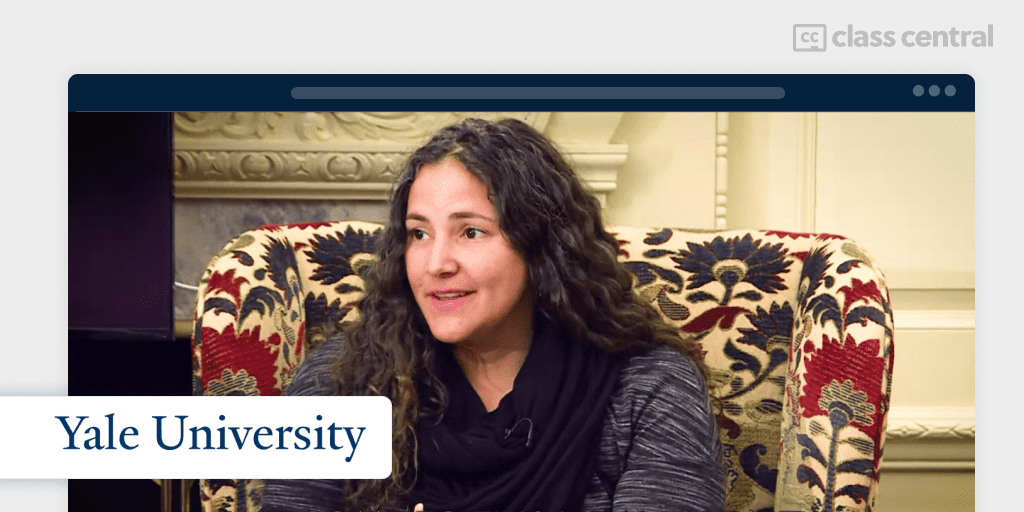
The Science of Well-Being, offered by Yale University on Coursera, is an insightful course introducing practices to increase our well-being. Like most of us, my lifestyle significantly changed at the height of the pandemic. By spending most of the day at my apartment alone for months, I gradually began to question my personal values on happiness and wondered how I can increase my sense of fulfillment. So, I decided to enroll in this 10-week course, hoping that I can learn some insights to improve my well-being.
This course has also been featured in:
- [2023] The 250 Most Popular Online Courses of All Time
- Class Central’s Best Online Courses of All Time (2022 Edition)
Understanding What Makes Us Happy
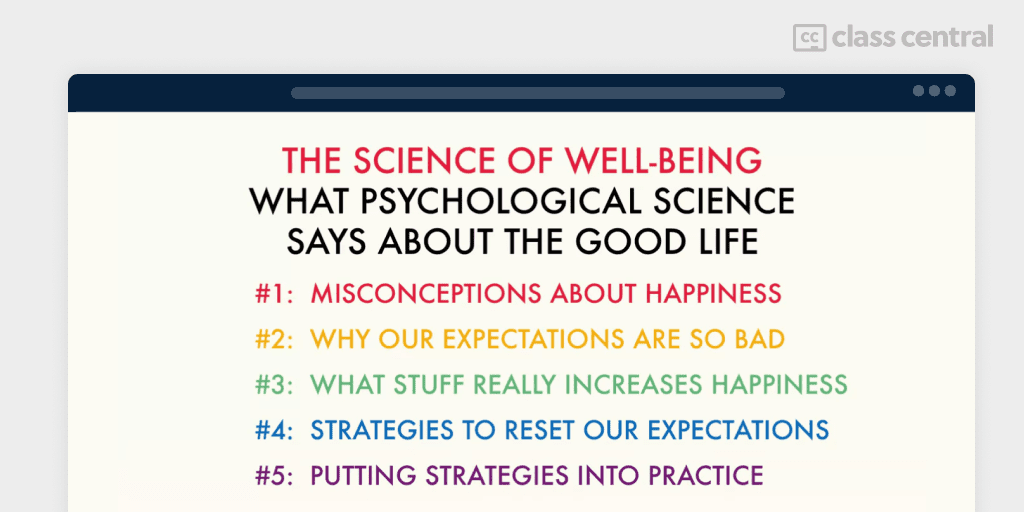
Although we generally believe that a good job, awesome stuff, or true love will make ourselves happy, psychologists advocate that this is an illusion. Professor Laurie Santos argues that they stop bringing you the happiness you expect and rest your reference point for the future, because you habituate with your high salary, fancy car, and partner. Throughout the course, she discusses why we have such misconceptions about happiness and how we can overcome our biases. After introducing what really increases our well-being, Professor Santos suggests strategies to develop habits to put them into practice. The encouraging finding in psychology is that we can work forward to improve our well-being, because actions and thoughts control 40% of our happiness.
For sure, some of the recommended rewirements, practices to increase our happiness, were rather common sense. I knew from my experiences that regular physical exercise, meditation, and good sleep improve my well-being. Still, what was interesting with this course is that all the suggestions were based on evidence from psychological research. For example, academic research using a brain scanner has shown that meditation not only increases your happiness via shutting off the default mode of mind wandering but also strengthens our brain over time. These empirical research findings increase my confidence and motivation to put them into practice.
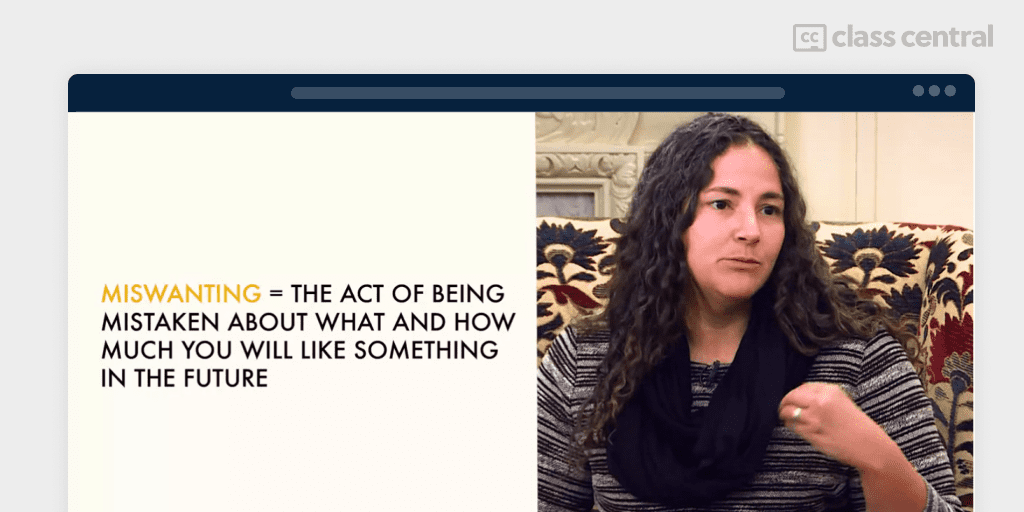
On the other hand, some of the findings were counter intuitive. For example, investments on experiences will make you happier than purchasing materials. My intuition was that material possessions such as a fancy new car will continue to bring happiness in the future. However, Professor Santos argued that while we habituate to a new car, a nice vacation will end well before we get used to it. In fact, when I recall my good memories in the past, vacations, especially the ones I spent with my family or friends, came on top of my list and certainly not the things I purchased for myself.
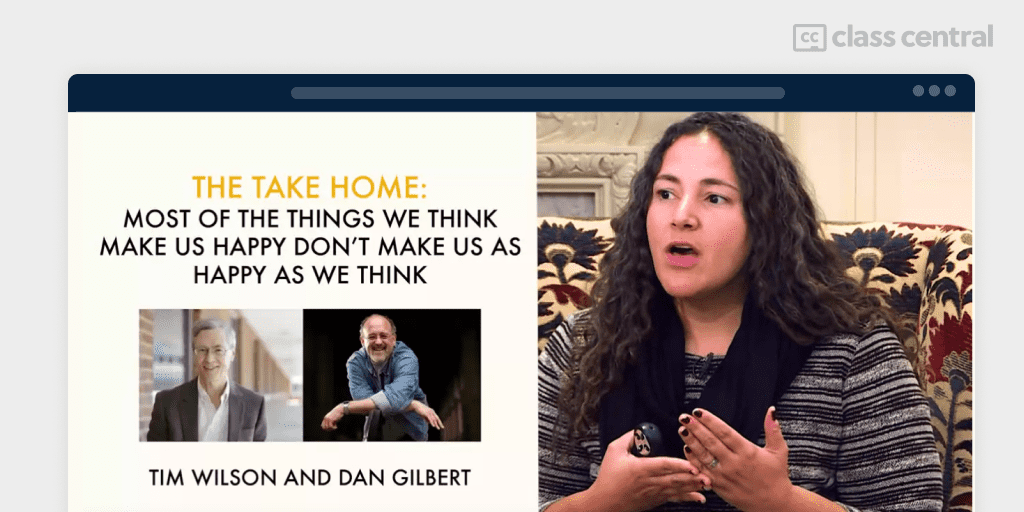
Furthermore, Professor Santos gave a fresh perspective on what can make you call a dream job. Instead of seeking high salaries, we should look for jobs that actively use our signature strengths, character strengths most essential to who we are. The act of using those strengths raises our happiness and lowers depressive symptoms, which in turn increases our productivity and job satisfaction. In fact, a good understanding of my signature strengths after taking a free self-assessment introduced in the course certainly gave me a new and interesting angle on how to approach my work differently.
Practicing What Makes Us Happy
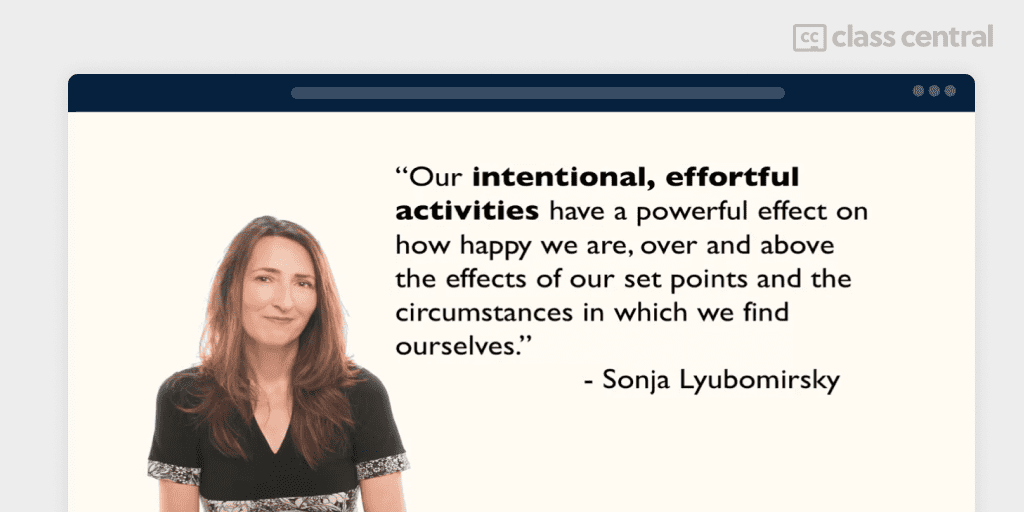
The last four weeks were devoted to practicing our favorite rewirement taught in the course. While I chose signature strength, my challenge was to practice it every day, which became apparent during the last week on the project. The positive momentum and enthusiasm can fade surprisingly quickly. I ended up procrastinating, which took me much longer to complete the Rewirement Challenge. This experience revealed that merely knowing something is not enough to put them into practice, which was referred to as the GI Joe fallacy in the first week of this course.
The important lesson was to have strategies for better habits, which was introduced in the sixth week. What I found interesting is that we need to think about the benefits and obstacles of our goal beforehand, if we want to keep overcoming obstacles. My tendency has been either optimistic without considering obstacles, or pessimistic focusing on obstacles, which have limited my potential. Furthermore, we should create beforehand implementation intentions and very specific if-then plans to respond to obstacles, so that we achieve our goal.
Conclusion
Overall, I really enjoyed this 10-week course. The teaching style was very engaging, full of insightful material, which helped me rethink what makes me happy. The recommended reading on signature strength was eye-opening, giving me the courage to confront the root causes of my personal problems and to find solutions for them. Because this course introduces many rewirements to improve your well-being, I am sure you can find something that would meet your preferences. Above all, my happiness score improved over the course. Highly recommended!
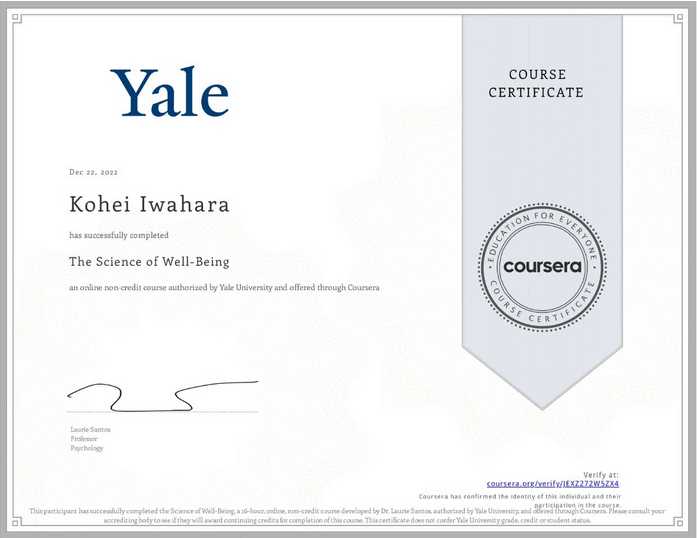
The post Rethinking Happiness to Increase Our Well-Being appeared first on The Report by Class Central.
]]>The post 10 Best Resume Writing Courses to Take in 2023 appeared first on The Report by Class Central.
]]>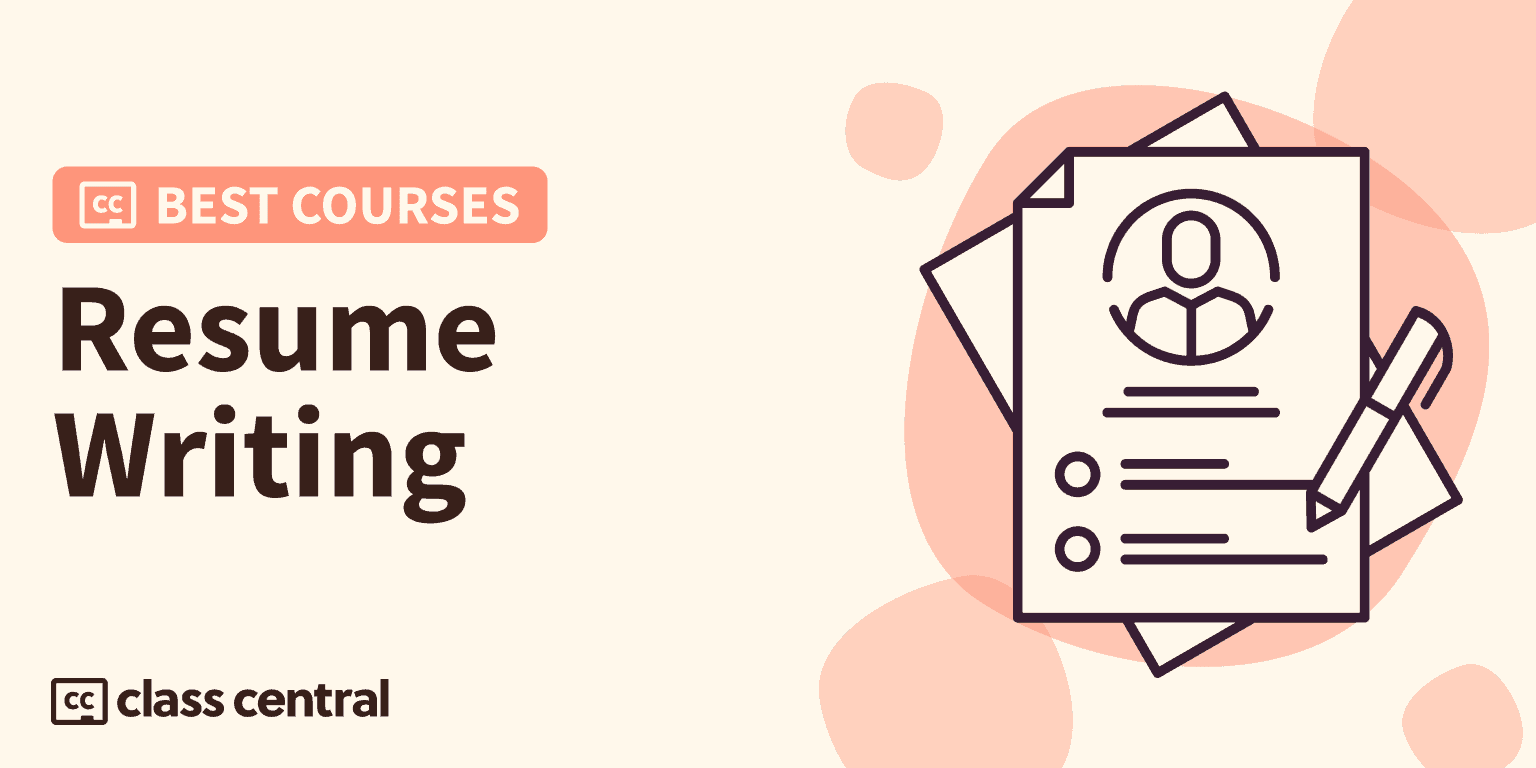
Resumes are pretty much the very first step while applying for almost any job. They give potential employers a first-hand idea of who you are and why you might be a good fit for that job before they even get to meet you. So your resume needs to be as perfect as it can be.
In this guide, I’ve selected the 10 best free and paid resume writing online courses for you from the 50+ resume writing courses on our catalog by following a well-defined methodology that you can find below.
But if you want to jump straight to the results, here are my top 10 picks. You can click on a course to jump to the corresponding section:
| Course | Workload | In Brief |
| 1. Writing a Resume (LinkedIn Learning) | 2-3 hours | Best free, beginner-friendly course to learn the basics of resume writing and job search basics |
| 2. Writing Winning Resumes and Cover Letters (University of Maryland) | 13 hours | Best course for intermediate learners to learn to write resume in a language companies speak |
| 3. How to Write a Resume (Project-Centered Course) (State University of New York) | 20-24 hours | Project-based course for recent graduates to learn resume best practices and current trends |
| 4. Writing a Tech Resume (LinkedIn Learning) | < 1 hour | Short course for learners from a technical background to learn to write a tech resume |
| 5. Resume Makeover (LinkedIn Learning) | 2 hours | Great course for anyone who wants to revamp their resume and learn about the hiring process |
| 6. How To Write A Winning Resume – Top Resume Writing Tips (Professor Heather Austin) | 1-2 hours | Short, free course for beginners to learn to write resumes, includes useful tips and tricks |
| 7. The Complete Resume, LinkedIn & Get Your Dream Job Course! (Udemy) | 12 hours | 3-part course for beginners to learn interviewIng skills, resume/LinkedIn skills and networking skills |
| 8. Redesign Your Resume: Designing Professional Documents (Skillshare) | 2-3 hours | Useful course for beginners to learn to design professional documents and build InDesign skills |
| 9. Designing a Resume for Creatives (LinkedIn Learning) | 1-2 hours | Beginner-friendly course for learners from a creative background to build an appealing resume |
10. [2021] Career Hacking : Resume, LinkedIn, Interviewing +More (Udemy) : Resume, LinkedIn, Interviewing +More (Udemy) |
6 hours | Good course for beginners to learn resume writing, cover letters, interviewing and networking skills |
What is Resume Writing?
A resume is a formal document, typically of one to two pages, that highlights a candidate’s education, experience and skills. Job seekers write resumes while applying for a job for recruiters to evaluate their competency and worth for the concerned job. Employers may collect resumes in person, through a company’s career website, a job search engine, or a professional social media page.
The word “resume” originally comes from the French word ‘résumé’, past participle of résumer which means “to summarize”. However, this term is primarily used in America and Canada to represent a document that showcases your skills and work experiences, and not in France and other parts of Europe where a curriculum vitae (or CV) is used instead. In India, Pakistan and Bangladesh, biodata is often used in place of a resume.
Fun fact: Did you know that Leonardo da Vinci was the first recorded person to write a resume in the 15th century (even though it was more of a letter)?

Why are Resume Writing Skills Important?
Resumes create your first impression to potential employers. That’s why resume writing is an important skill to have. Indeed notes down a few more reasons why resumes are important:
- Provides an opportunity to market yourself to employers
- Outlines your skills, background and education so employers can easily see how your experience contributes to the success of a company
- Helps employers eliminate unqualified candidates
- Allows you to demonstrate your written communication skills
What is My Experience with Resume Writing?
Throughout school and college, I was taught to write good resumes as part of my curriculum and I scored high too. And I landed a pretty decent job alright!
Besides that, I am a Guided Project Instructor and a Beta Tester at Coursera, having tested many courses before they’re officially launched. I have taken over 50 online courses in various subjects.
My experience as an online learner and teacher has given me some perspective on what to look for in an online course. I used my experience to evaluate each course in this list.
Course Ranking Methodology
I built this ranking following the now tried-and-tested methodology I used in previous rankings (you can find them all here). It involves a three-step process:
- Research: I started by leveraging Class Central’s database with 100K online courses and 200K+ reviews. Then, I made a preliminary selection of 50+ resume writing courses by rating, reviews, and bookmarks.
- Evaluate: I read through reviews on Class Central, Reddit, and course providers to understand what other learners thought about each course and combined it with my own experience as a learner.
- Select: Well-made courses were picked if they presented valuable and engaging content and they have to fit in a set of criteria and be ranked accordingly: comprehensive curriculum, release date, affordability, ratings and enrollments.
The end result is a unique selection of courses that combines a decade of Class Central data and my own experience as an online learner to try to get the best of both worlds. So far, I’ve spent more than 10 hours building this list, and I’ll continue to update it.
Course Ranking Statistics
Here are some statistics regarding this course ranking:
- Combined, these courses have accrued over 760.6K enrollments.
- 3 courses are free or free-to-audit and 7 courses are paid.
- The most-represented course provider in the ranking is LinkedIn Learning, with 4 courses.
- All 10 courses are in English.
- The resume writing subject is followed by over 3.6K learners on Class Central, and accounts for over 50 courses in Class Central catalog
So without further ado, let’s get to my picks for the best resume writing online courses.
1. Writing a Resume (LinkedIn Learning)
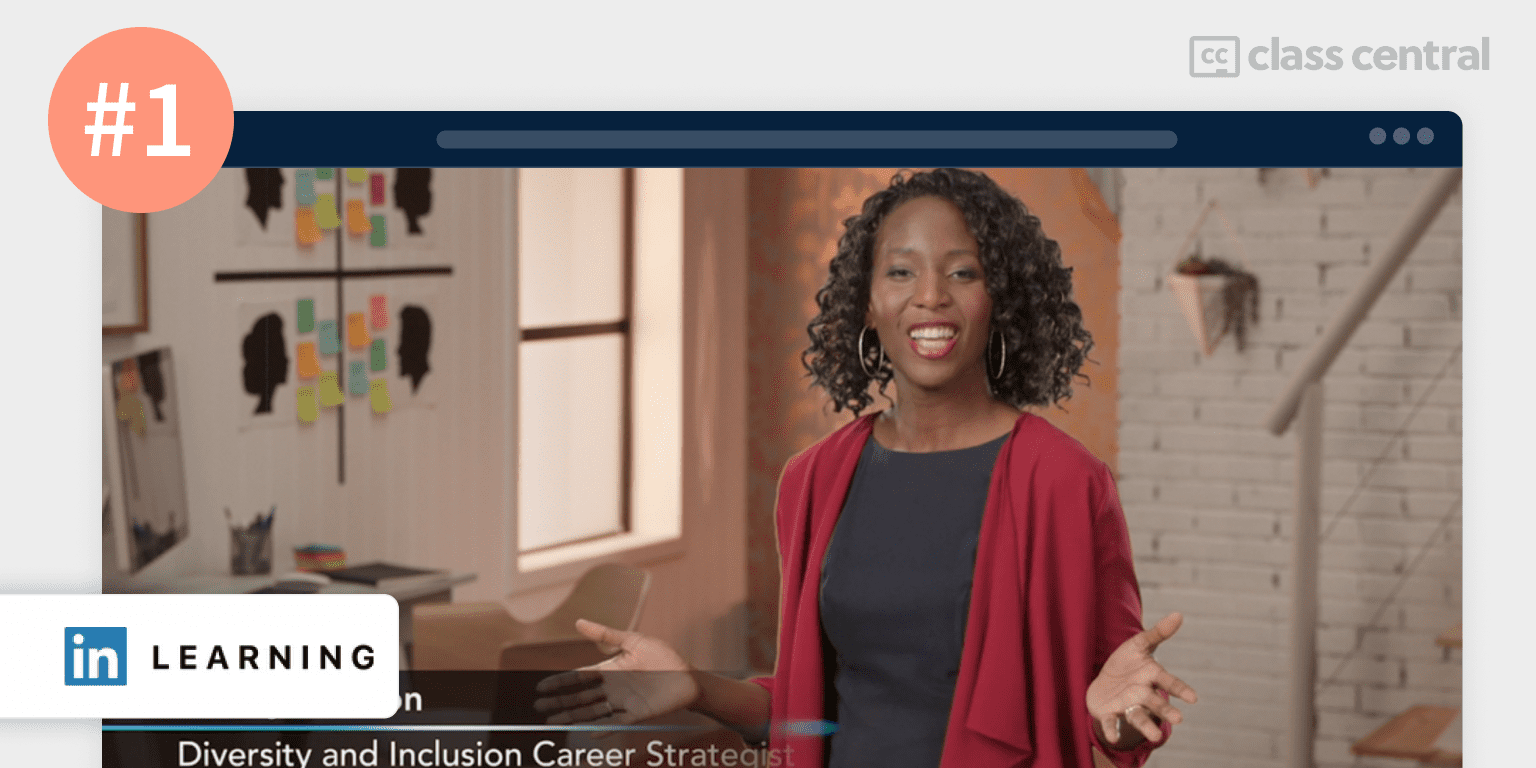
My first pick for the best resume writing online course is the free course Writing a Resume on LinkedIn Learning.
This free, beginner-friendly course will teach you the basics of resume writing. What’s more – as a job-seeker, you’ll also understand a few extra job search basics such as identifying companies to work for and determining fit. Moreover, you’ll be able to tackle job hopping, lack of experience, or unemployment gaps while focusing on your experiences.
By the end of the course, you’ll learn what to and what not to include in your resume and showcase your talents and best qualities. You’ll be able to choose the right format for your resume, tailor information to match job requirements, and write alternative resumes that include industry-specific information.
What You’ll Learn
First, you’ll learn how to create an effective resume by understanding its basic components such as the objective statement, skills section, work experience, education, and technical skills. You’ll customize these components to match the job you’re applying for, upgrade your resume by using achievements, awards, and publications, and choose the right layout and formatting.
Next, you’ll cover alternative resume designs, including resumes for different industries and regions, and how to handle common challenges like career changes, gaps in employment, and long-term unemployment.
After that, you’ll understand how to use your resume to stand out from other applicants and conduct a successful job search by focusing on your objective, showcasing the skills that employers want, and effectively using your education and volunteer work.
Finally, you’ll also learn best practices for using a resume in various scenarios, such as online applications, interviews, networking, and informational interviews, and conduct a proactive versus reactive job search by identifying potential companies, determining fit, and finding contacts.
How You’ll Learn
The course is broken down into 10 modules. Each module involves about 10 to 20 minutes of work. Concepts are taught through a combination of videos, practice exercises and quizzes.
| Provider | LinkedIn Learning |
| Instructor | Stacey Gordon |
| Level | Beginner |
| Workload | 2-3 hours |
| Enrollments | 411.5K |
| Rating | 4.7/5.0 (3.7K) |
| Certificate | Free |
Fun Facts
- Gordon is focused on improving workplace cultures and her mission is to reduce bias in global talent acquisition and management.
- She offers diversity, inclusion and career related online courses on LinkedIn Learning.
- Her book, “UNBIAS: Addressing Unconscious Bias at Work”, which is an ‘action manual’ for you to remove barriers and ensure equity throughout your organization
If you’re interested in this course, you can find more information about the course and how to enroll here.
2. Writing Winning Resumes and Cover Letters (University of Maryland, College Park)
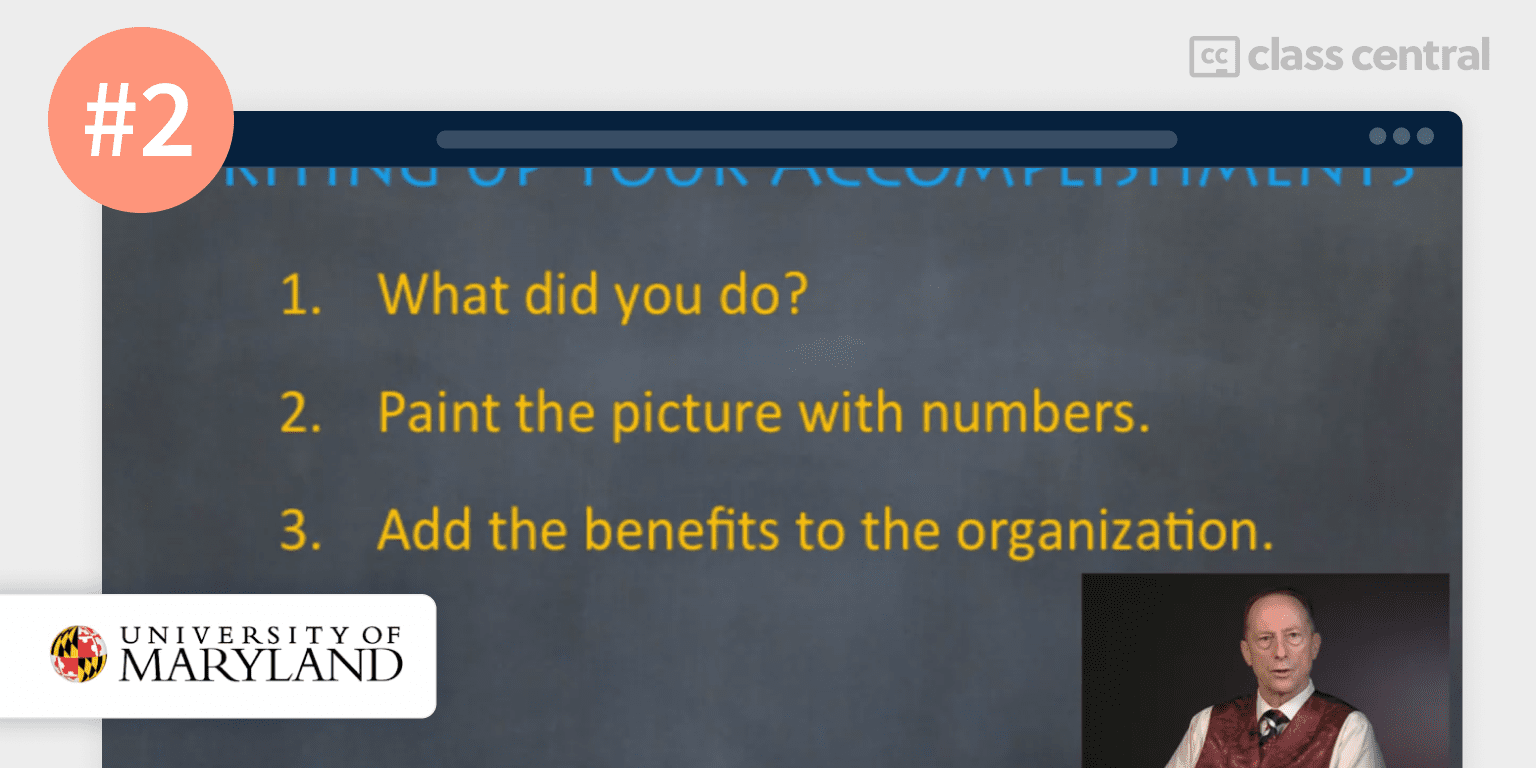
My second pick for the best resume writing online course is the free-to-audit Writing Winning Resumes and Cover Letters, offered by the University of Maryland, College Park on Coursera.
This course is for intermediate learners who want to grab the attention of prospective employers using the language they already speak inside their organization. You’ll get answers to any related questions that you might have, and convert a boring resume into a dynamic asset statement. By the end of this course, you’ll be able to write your resume in a language that employers understand.
What You’ll Learn
In this course, you’ll learn how to tailor your resume for a specific job opportunity and to rank high in the relevance scales used by top organizations, and craft powerful accomplishment statements and summarize your experiences effectively.
You’ll also select the best resume format for your career goals, prepare your resume for electronic submission, and write an effective cover letter. You’ll also cover what information to leave off your resume and how to follow up after an interview.
How You’ll Learn
The course is broken down into 4 weeks. Each week involves about 3 to 4 hours of work. Concepts are taught through a combination of videos, readings and quizzes.
| Institution | University of Maryland, College Park |
| Provider | Coursera |
| Instructor | Charles Duquette |
| Level | Intermediate |
| Workload | 13 hours |
| Enrollments | 44.8K |
| Rating | 4.7/5.0 |
| Certificate | Paid |
Fun Facts
- Duquette is a lecturer and Marketing Coordinator at University of Maryland, College Park.
- He studied Biology at Georgetown University, Finance at University of Maryland, Mechanical Engineering at The Catholic University of America, and Computer Science at Johns Hopkins University
If you’re interested in this course, you can find more information about the course and how to enroll here.
3. How to Write a Resume (Project-Centered Course) (State University of New York)
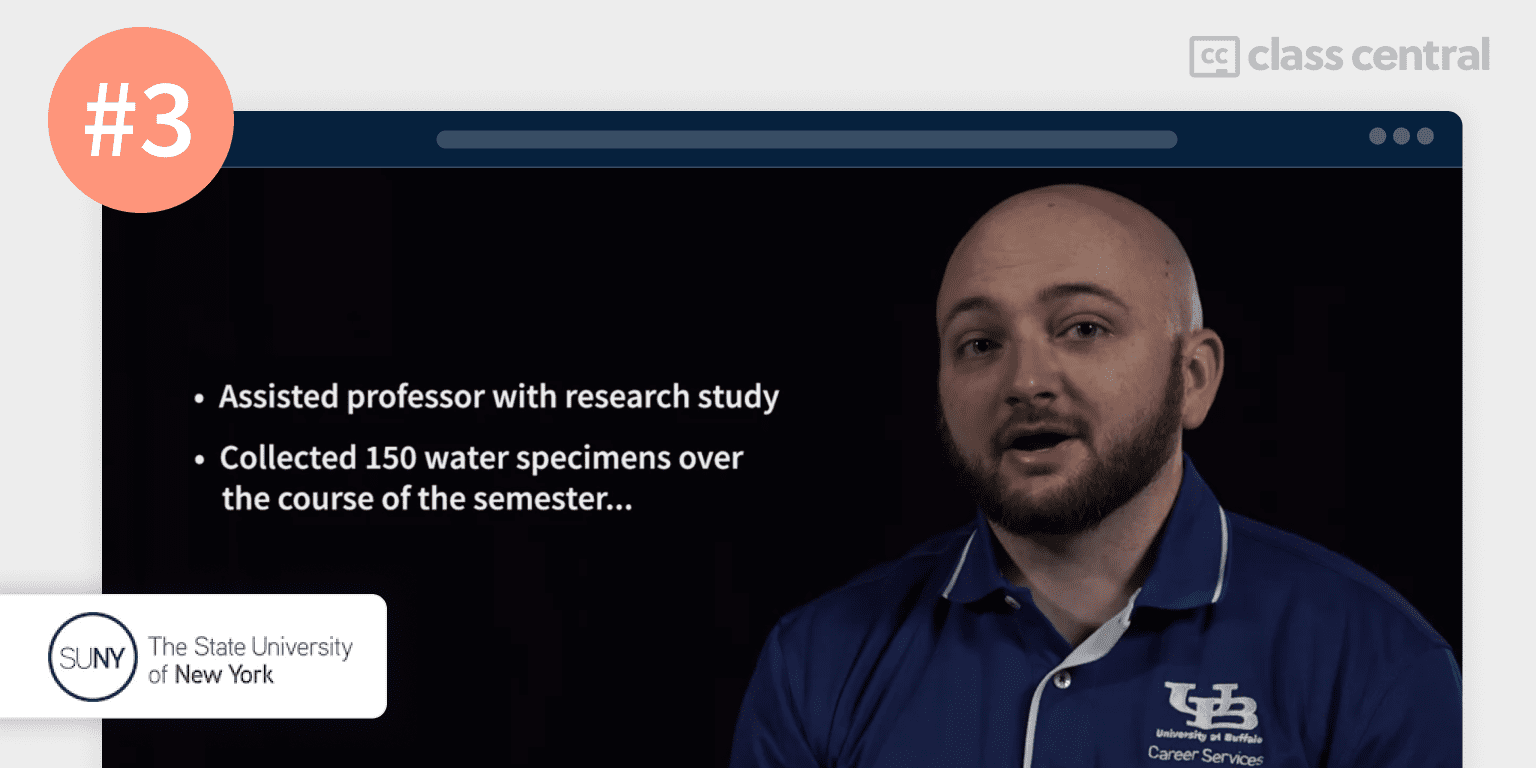
My third pick for the best resume writing online course is the free-to-audit How to Write a Resume (Project-Centered Course), offered by the State University of New York on <provider>.
If you’re a young professional or a college student, then this resume writing course is for you. Whether it’s your first resume or an old resume you want to polish, this project-based course will teach you resume best practices and current trends. Regardless of your career stage or professional background, you can benefit from this course and learn by working on a real-world project.
What You’ll Learn
In this course, you’ll learn about the purpose of a resume and when it might be used, examine the typical sections of a resume, identify transferable skills from your past experiences, write effective action-statements, use strong verbs, and avoid common pitfalls in writing the content of your resume.
You’ll also organize the sections and create a clear and structured format, become familiar with different headings and “buzzwords”, take a look at an interview with an employer that will provide valuable insights to make your resume stand out, and get answers to any common questions you may have about resumes.
How You’ll Learn
The course is broken down into 7 weeks. Each week involves about 30 minutes to 2 hours of work. Concepts are taught through a combination of videos, readings and quizzes.
| Institution | State University of New York |
| Provider | Coursera |
| Instructor | Zachary Slaybaugh, Holly Justice |
| Level | Beginner |
| Workload | 20-24 hours |
| Enrollments | 205.9K |
| Rating | 4.6/5.0 (3.7K) |
| Certificate | Paid |
Fun Facts
- Justice is a nature lover, equestrian, hiker/backpacker, runner, explorer/traveler, mindfulness meditation practitioner and teacher.
- She has hiked in over 25 U.S. National Parks and a few international National Parks so far
If you’re interested in this course, you can find more information about the course and how to enroll here.
4. Writing a Tech Resume (LinkedIn Learning)
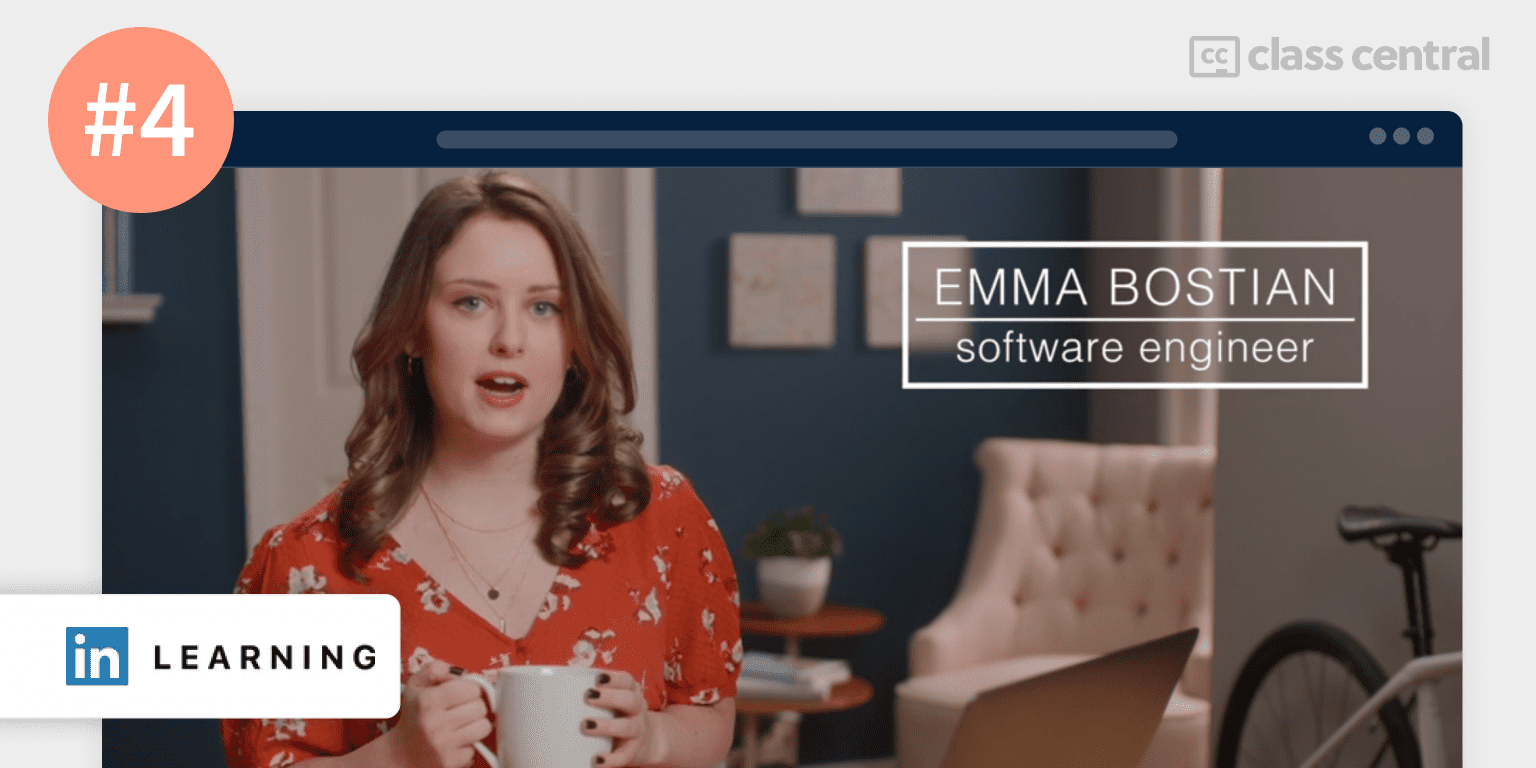
My fourth pick for the best resume writing online course is Writing a Tech Resume on LinkedIn Learning.
Focused on those from a technical background, this course shows you how to showcase your technology skills so that you can stand out from the crowd. You’ll work on minor design details like spacing, font choice and color palette, and create your professional online presence on platforms such as LinkedIn and GitHub. And you can achieve all this in less than an hour!
What You’ll Learn
In this course, you’ll cover everything from logistics, such as resume length and the difference between a resume and a CV, to content tips and tricks, like word choice and highlighting your impact.
You’ll learn what to include in your resume, such as education, work experience, skills, and awards and certifications, as well as how to use tools like word processors, resume builders, and visual design tools to create a polished and professional final product.
Finally, you’ll understand design best practices, such as typography, color, layout, and file format, and how to present a professional online presence through platforms like LinkedIn, GitHub and personal portfolios or websites.
How You’ll Learn
The course is broken down into 7 modules. Each module involves about 5 to 10 minutes of work. Concepts are taught through a combination of videos and quizzes.
| Provider | LinkedIn Learning |
| Instructor | Emma Bostian |
| Level | Beginner |
| Workload | < 1 hour |
| Enrollments | 401.3K |
| Rating | 4.7/5.0 (2K) |
| Certificate | Paid |
Fun Facts
- Bostian is a Software Engineer at Spotify in Stockholm.
- She founded and manages an open-source project, Coding Coach, a free platform that aims to connect software developers and mentors all over the world.
- She is a co-host of the Ladybug Podcast and panelist on JSParty, and teaches at Stack Overflow, Frontend Masters, and Egghead.io
If you’re interested in this course, you can find more information about the course and how to enroll here.
5. Resume Makeover (LinkedIn Learning)
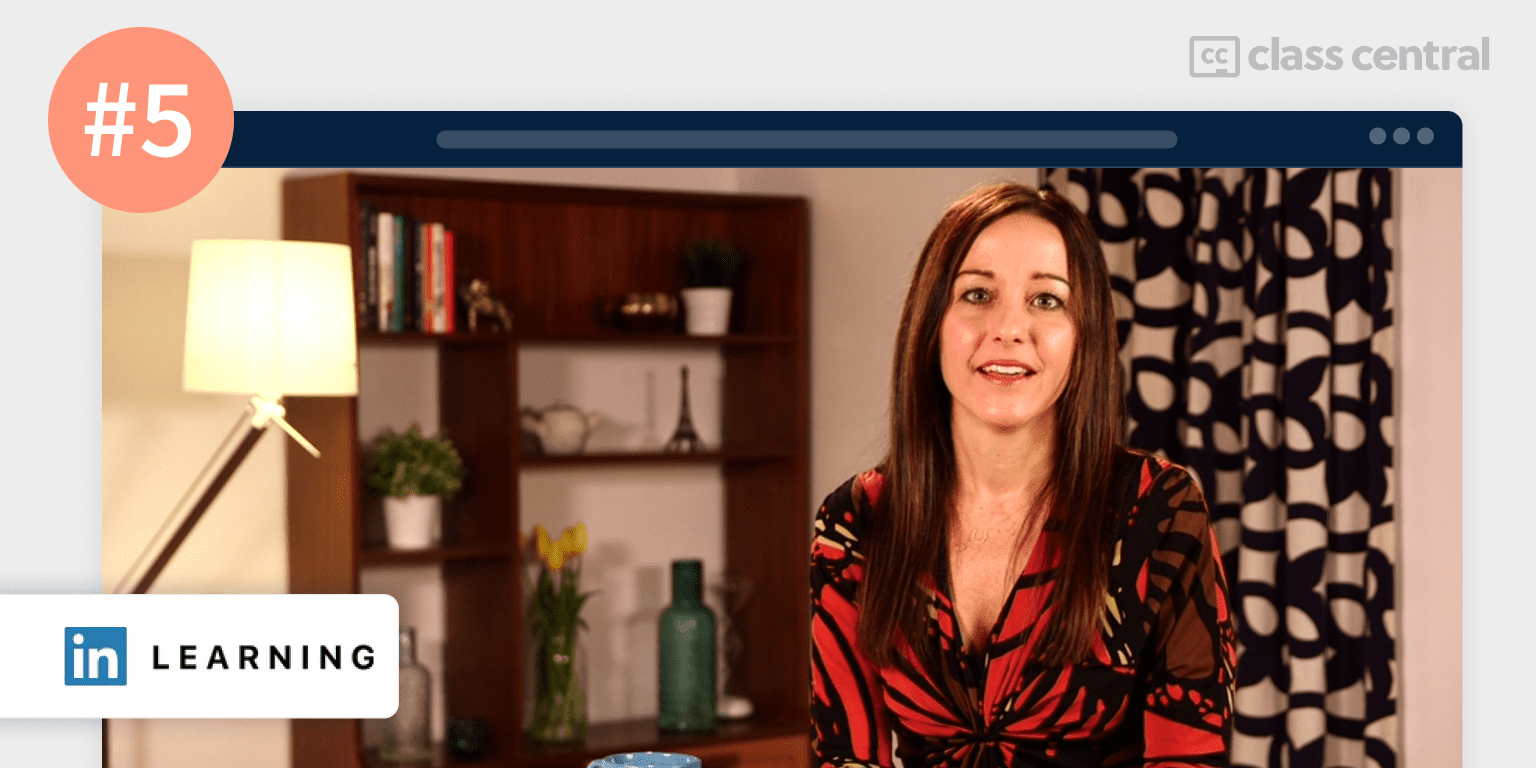
My fifth pick for the best resume writing online course is Resume Makeover on LinkedIn Learning.
This course is for anyone looking to turn their dull, boring resume into something that recruiters will notice. You’ll learn how to put all your experiences into a compelling marketing document while addressing resume gaps and job hops. You’ll also take a look at how the hiring process works so that when you apply for a new job, you have more chances of acing an interview.
What You’ll Learn
In this course, you’ll work on your resume roadmap, the summary section, the key skills section, professional experience and work history, education and certifications, customize your resume for different jobs, deal with gaps and career bloopers, finalize the resume, and take a look at resume questions and answers.
How You’ll Learn
The course is broken down into 1 module which involves about 1 to 2 hours of work. Concepts are taught through a combination of videos, practice exercises and quizzes.
| Provider | LinkedIn Learning |
| Instructor | Jenny Foss |
| Level | Beginner |
| Workload | 2 hours |
| Enrollments | 255.8K |
| Rating | 4.8/5.0 (3.8K) |
| Certificate | Paid |
Fun Facts
- Foss is a job search strategist, recruiter, career coach and certified professional resume writer.
- She’s also an author, an educator, an entrepreneur, a cheerleader, and sometimes, a bit of a therapist.
- She has written a book, “Do This, Not That: Careers. Learn”
If you’re interested in this course, you can find more information about the course and how to enroll here.
6. How To Write A Winning Resume – Top Resume Writing Tips (Professor Heather Austin)
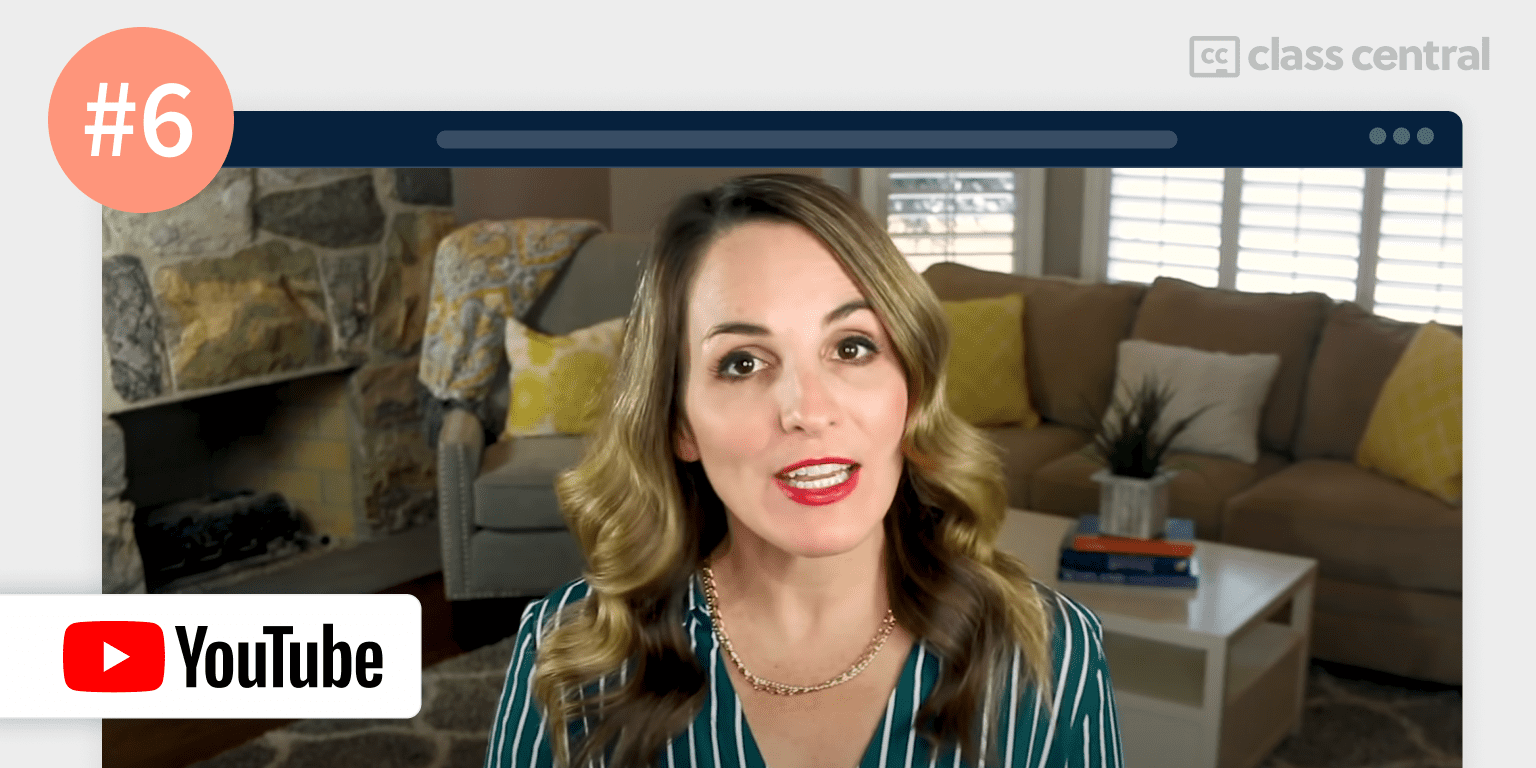
My sixth pick for the best resume writing online course is the free course How To Write A Winning Resume – Top Resume Writing Tips, offered by Professor Heather Austin on YouTube.
This short, free course will guide you through the process of writing a resume, including important resume writing tips and secrets that will put you ahead of the crowd. You’ll explore examples of good resumes and also get to know where to find sample resume templates that you can download and tailor to apply for your next job. Within just a couple of hours, you’ll have a great resume that will get you noticed.
What You’ll Learn
In this course, you’ll start with a template and examples for your resume, write a resume summary, make an ATS-friendly resume that will help you pass the automated screening process, and write a resume with little or no work experience.
You’ll also learn how to craft a resume that will increase your chances of getting hired, format a resume quickly and effectively, write achievements in a resume, and you’ll get additional resources and information to help you write your resume.
How You’ll Learn
The course is broken down into 14 videos. Each video involves about 5 to 15 minutes of work. Concepts are taught through video lectures only.
| Channel | Professor Heather Austin |
| Provider | YouTube |
| Instructor | Heather Austin |
| Level | Beginner |
| Workload | 1-2 hours |
| Certificate | Not available |
Fun Facts
- Austin is the host of #TheCareerClub on Facebook and the creator of ProfessorAustin.com.
- She teaches professionals how to navigate the job search process from building a solid social media presence on LinkedIn to nailing those tough interview questions.
- She gives easy-to-follow tutorials with step-by-step instructions on finding the right career for you on her YouTube channel
If you’re interested in this course, you can find more information about the course and how to enroll here.
7. The Complete Resume, LinkedIn & Get Your Dream Job Course! (Udemy)
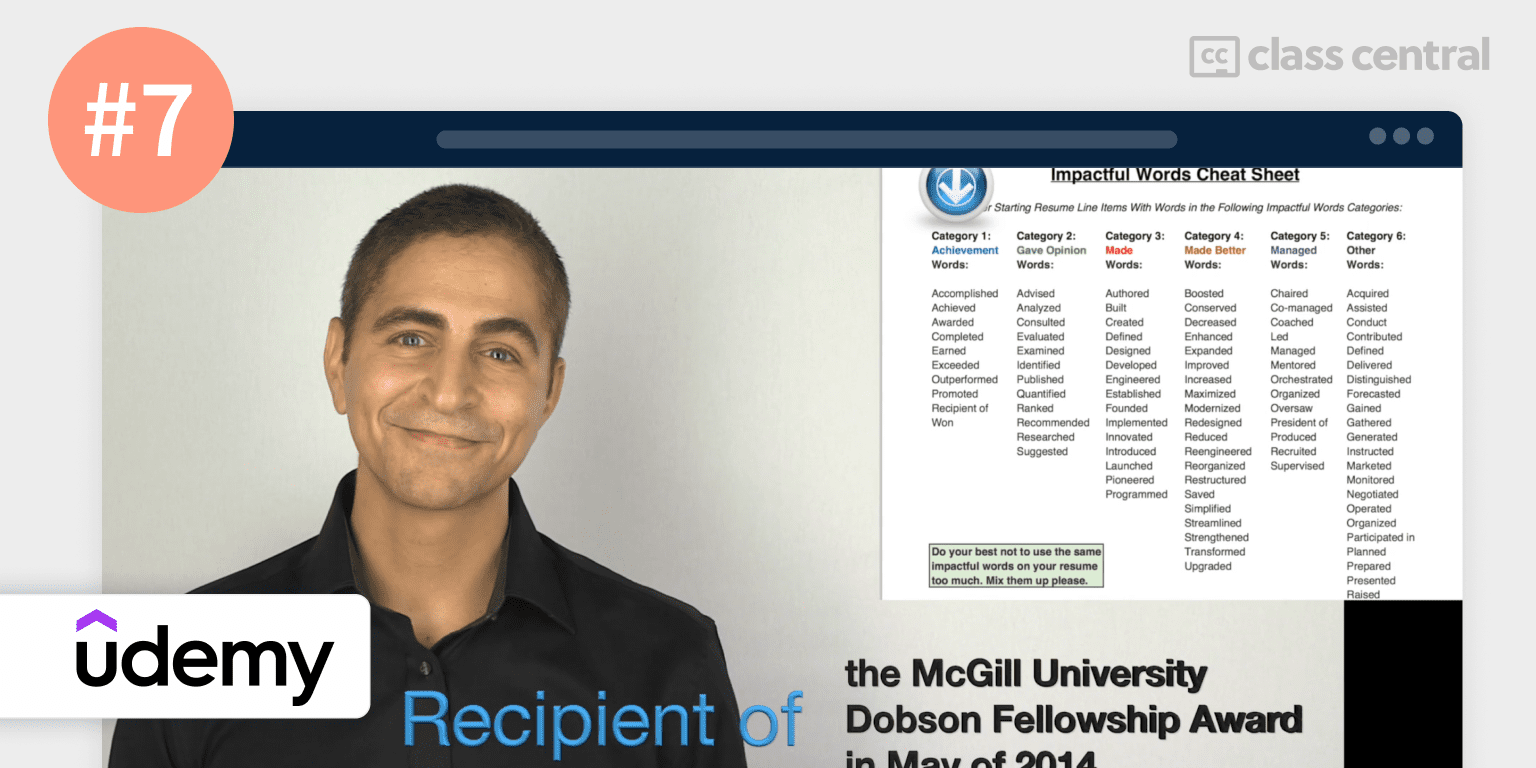
My seventh pick for the best resume writing online course is The Complete Resume, LinkedIn & Get Your Dream Job Course! on Udemy.
This is a 3-part course that teaches you the three most important topics for getting a job: interviewIng skills, resume/LinkedIn skills and networking skills. You can take the 3 sections in any order that suits you but it is recommended that you take them in the order in which the course is built. No matter at what stage of your career you’re at, this course will help you get the job you want.
What You’ll Learn
This course will help you get any job you want, build the perfect resume, interview better than others, build the perfect LinkedIn profile, and network better than anyone else so that you can get your dream job.
How You’ll Learn
The course is broken down into 51 sections. Each section involves about 5 to 30 minutes of work. Concepts are taught through a combination of videos, readings and downloadable resources.
| Provider | Udemy |
| Instructor | Chris Haroun |
| Level | Beginner |
| Workload | 12 hours |
| Enrollments | 112.3K |
| Rating | 4.5/5.0 (6.2K) |
| Certificate | Paid |
Fun Facts
- Haroun is the founder and CEO of the online Haroun MBA Degree Program and the founder and CEO of Haroun Education Ventures.
- He is the author of the online business course, “An Entire MBA in 1 Course”, and the book, “101 Crucial Lessons They Don’t Teach You in Business School”.
- He is an MBA graduate from Columbia University
If you’re interested in this course, you can find more information about the course and how to enroll here.
8. Redesign Your Resume: Designing Professional Documents (Skillshare)
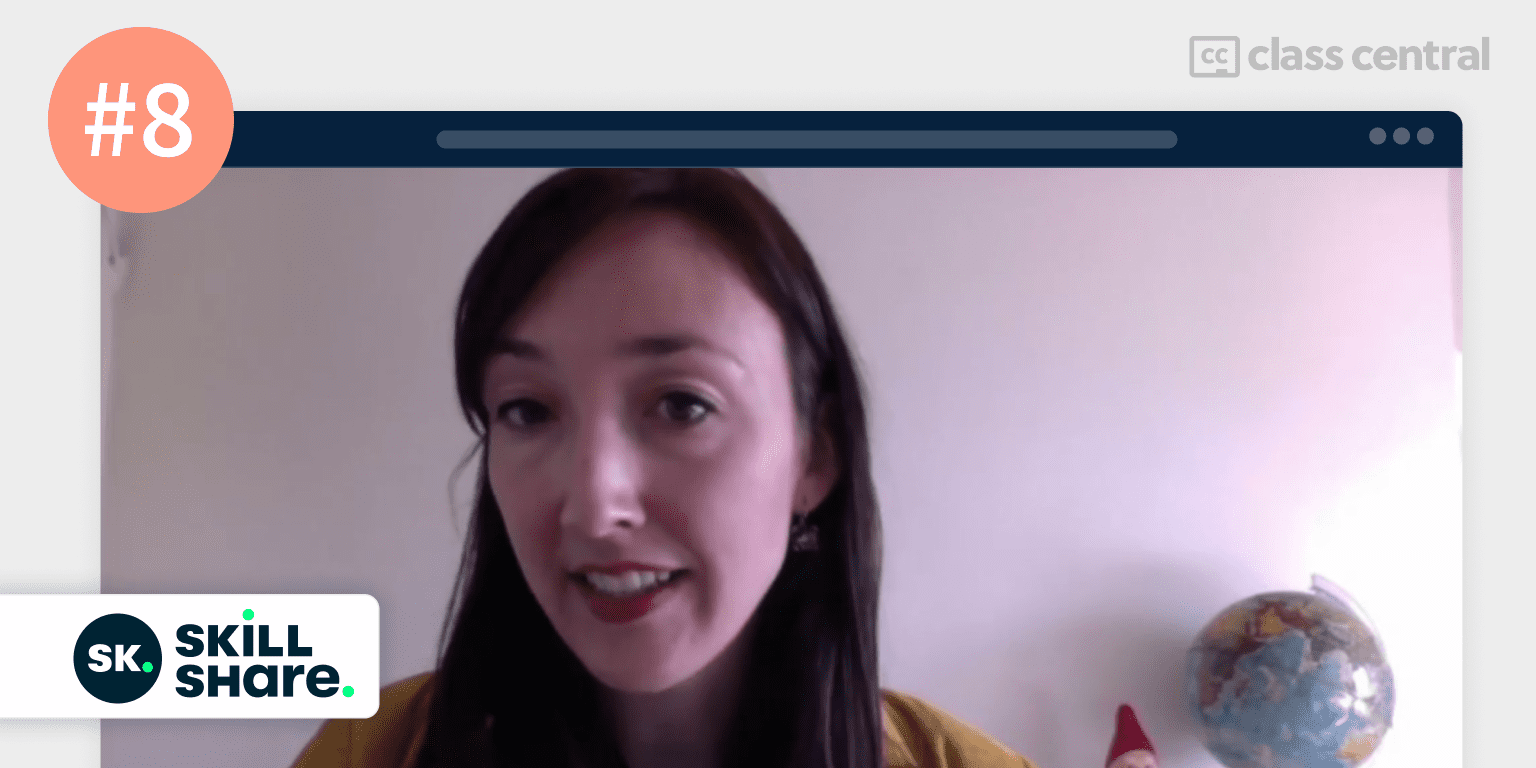
My eighth pick for the best resume writing online course is Redesign Your Resume: Designing Professional Documents on Skillshare.
Whether you are a student, a marketing professional or a freelancer, this course will teach you how to design professional documents and use design to enhance communication. Using resumes as the starting point, you’ll explore some great examples by professionals. You’ll also build InDesign skills but you can apply the design concepts to other documents as well.
What You’ll Learn
In order to build your resume, you’ll take inspiration from resumes, CVs and general documents, work on layouts and text boxes in InDesign, create master pages, learn design terms and concepts, key design concepts applied in inDesign, tips for working with fonts and type, work with type in inDesign, add details in inDesign, and finalize your document.
How You’ll Learn
The course is broken down into 16 lessons. Each lesson involves about 5 to 10 minutes of work. Concepts are taught through a combination of videos and projects.
| Provider | Skillshare |
| Instructor | Anne Ditmeyer |
| Level | Beginner |
| Workload | 2-3 hours |
| Enrollments | 5.9K |
| Rating | 100% |
| Certificate | Not available |
Fun Facts
- Ditmeyer is an American designer and creative coach based in Paris, France.
- She founded Prêt à Voyager in 2007 to explore the intersection of travel and design.
- She offers bespoke tours of Paris at NavigateParis.com and online trip planning tool NavigateParisOnline.com.
If you’re interested in this course, you can find more information about the course and how to enroll here.
9. Designing a Resume for Creatives (LinkedIn Learning)
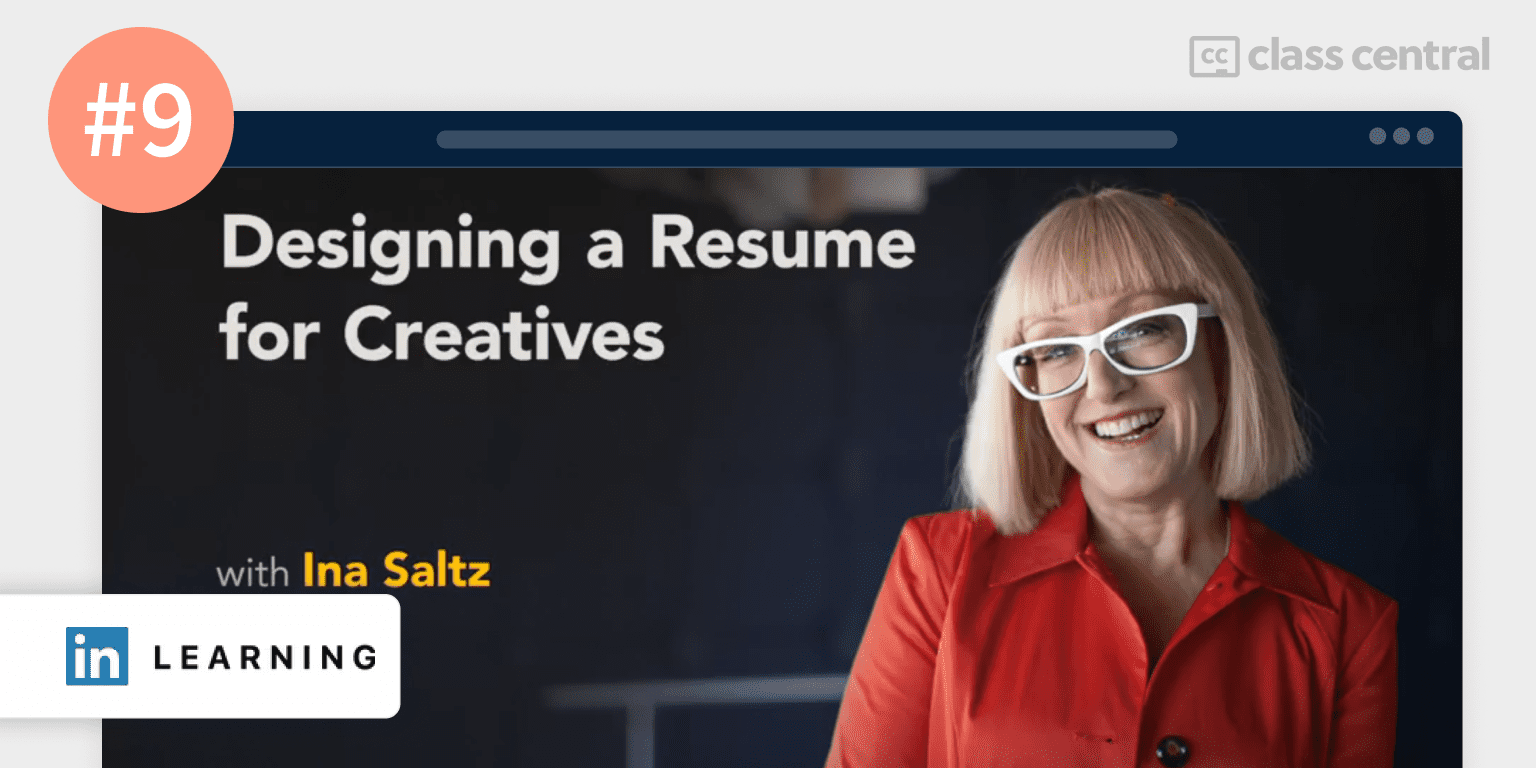
My ninth pick for the best resume writing online course is Designing a Resume for Creatives on LinkedIn Learning.
If you are from a creative background, then this resume writing course is for you. As a creative, you can use your resume to actually showcase your design skills while putting in all your details. This course teaches you how to present yourself through a visually strong, content-rich resume, and also includes presentation options for creatives so that your resume is aesthetic as well as informative.
What You’ll Learn
You’ll start off by learning how to write a comprehensive and effective resume that showcases all your relevant information, like education, experience, skills and interests, tailor your resume to different career stages and messages, and present your strengths and achievements in the best way possible.
Then, you’ll choose effective typefaces and margins, create hierarchy and format your resume in MS Word, explore common resume errors and how to avoid them, make sure your message is clear, check for spelling and grammar errors, and choose the right words and text length.
How You’ll Learn
The course is broken down into 4 modules. Each module involves about 20 minutes to 1 hour of work. Concepts are taught through a combination of videos and practice exercises.
| Provider | LinkedIn Learning |
| Instructor | Ina Saltz |
| Level | Beginner |
| Workload | 1-2 hours |
| Enrollments | 190.1K |
| Rating | 4.6/5.0 |
| Certificate | Paid |
Fun Facts
- Saltz’s personal and professional interests and activities are related to design, with a strong emphasis on typography, letterforms and publishing.
- She is an author (books, articles, video tutorials), a professor, a designer, a photographer, a design critic and a design consultant
If you’re interested in this course, you can find more information about the course and how to enroll here.
10. [2021] Career Hacking : Resume, LinkedIn, Interviewing +More (Udemy)
: Resume, LinkedIn, Interviewing +More (Udemy)
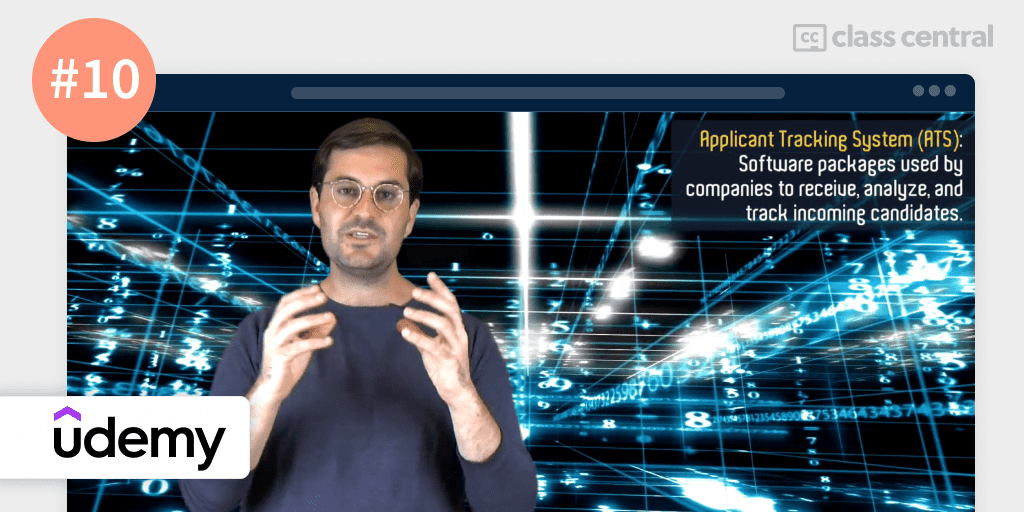
My tenth pick for the best resume writing online course is [2021] Career Hacking : Resume, LinkedIn, Interviewing +More on Udemy.
: Resume, LinkedIn, Interviewing +More on Udemy.
Whether you are a recent graduate or a professional, no matter at which stage you are in your career, you’ll learn resume writing, LinkedIn profiles, cover letters, interviewing and networking skills all in one course. These skills are necessary if you want to get the job of your dreams, and this course makes it possible for you to achieve these easily.
What You’ll Learn
In this course, you’ll prepare a keyword-rich, targeted resume, present yourself powerfully on LinkedIn, interview competently and persuasively, create career opportunities using traditional and non-traditional methods, build relevant professional networks, and set the stage for a rewarding career.
How You’ll Learn
The course is broken down into 12 sections. Each section involves about 20 to 30 minutes of work. Concepts are taught through a combination of videos, readings and quizzes. Downloadable resources are also provided.
| Provider | Udemy |
| Instructor | Davis Jones, Ludell Jones |
| Level | Beginner |
| Workload | 6 hours |
| Enrollments | 74.6K |
| Rating | 4.5/5.0 (8.8K) |
| Certificate | Paid |
Fun Facts
- Mr. Jones is the Chief Learning Officer at Eazl.
- Mrs. Jones is the COO of Eazl and was previously the Marketing & Communications Manager there.
- She earned her master’s degree from SKEMA Business School in Sophia Antipolis, France.
If you’re interested in this course, you can find more information about the course and how to enroll here.
The post 10 Best Resume Writing Courses to Take in 2023 appeared first on The Report by Class Central.
]]>The post 7 Best Free OCaml Courses to Take in 2023 appeared first on The Report by Class Central.
]]>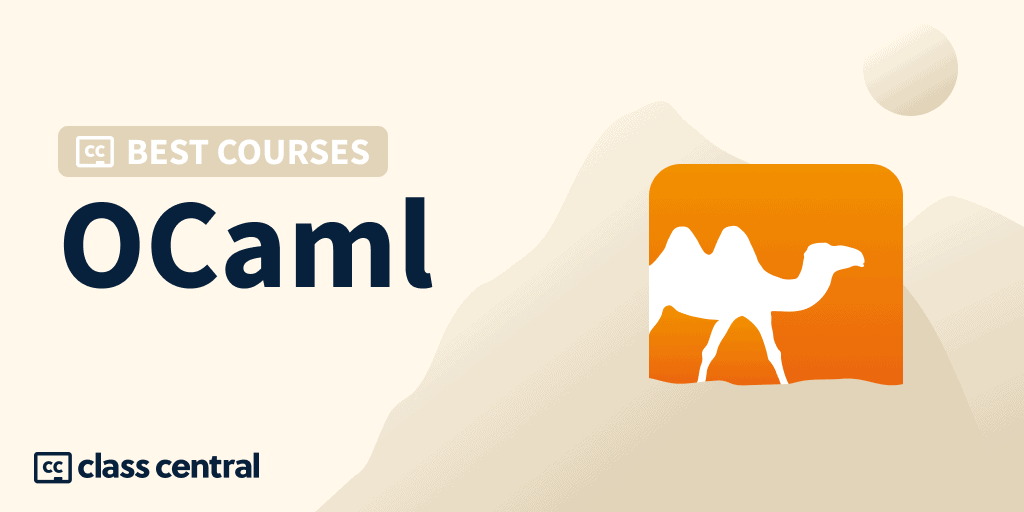
In this guide, you will find the best free online courses and resources to learn OCaml, a general-purpose, statically-typed programming language that is widely used for building robust, expressive, and performant applications.
Though OCaml puts the functional style first, it supports other paradigms like object-oriented and imperative programming, giving developers a high degree of flexibility. Along with its robust type system which guarantees safety and reliability, OCaml is a popular choice among large organizations such as Facebook, Microsoft, Bloomberg, and Jane Street. OCaml’s versatile nature enables developers to use it for a wide range of tasks, from writing compilers and developing trading systems, to creating domain-specific languages and web-crawling applications.
If you’re interested in learning a language that combines efficiency, expressiveness, and practicality in a way unmatched by any other language, read on more to find my top picks for the best OCaml course.
But if you’re in a hurry, here are my top picks. Click on one to skip to the course details:
| Course | Workload | In Brief |
| 1. OCaml Programming: Correct + Efficient + Beautiful (Cornell University) | N/A | Best free university-level course with videos, textbook, and exercises |
| 2. Introduction to Functional Programming in OCaml (Université Paris Diderot) | 7 hours | Best free university-level video course |
| 3. Programming with OCaml (Anthony Narlock) | 3–4 hours long | Best free short video course |
| 4. OCaml By Example (O(1) Labs) | N/A | Best free article-based course |
| 5. OCaml Workshop (Jane Street) | N/A | Best free hands-on exercise and project-based course |
| 6. Learn OCaml (OCaml Software Foundation) | N/A | Best free short exercise-based course |
| 7. OCaml (Exercism) | N/A | Best free exercise-based course with free mentoring |
What is OCaml?
OCaml is a general-purpose, statically-typed programming language with an emphasis on expressiveness and safety. It was designed in 1996 by Xavier Leroy and his team at INRIA in France as an extension of the Meta Language Caml dialect. Although Caml had a powerful type system and functional programming capabilities, it was only ever used in academia. However, by incorporating features such as object-oriented programming while retaining the correctness and conciseness of its predecessor, OCaml became a suitable language for building practical, real-world applications (which is what the O in OCaml formerly stood for Objective, if you were wondering).
OCaml’s strong type system, inherited from its predecessors, helps ensure code is safe and correct by catching errors at compile-time, while maintaining the flexibility of untyped languages by performing type inference. Not only that, OCaml’s algebraic data types allows for powerful pattern-matching capabilities, making it easy to match, extract and manipulate data in a concise and expressive way.
Many of OCaml’s features encourage programming in the functional style, such as preferring recursion and higher-order functions over traditional loops and preferring immutable data structures over mutable ones. However, it acknowledges that certain tasks such as working with files and writing in-place algorithms can be difficult to accomplish using only functional methods. As a result, OCaml offers support for multiple programming paradigms like imperative and object-oriented programming, giving developers flexibility to choose the best paradigm for their problem.
OCaml is also known for performance and ability to easily integrate with other languages, such as C and JavaScript, making it a great choice for building multi-language systems.
As for its applications, OCaml is widely used in academia and research institutions, with many universities like Cornell and Princeton including it in their curriculum to teach functional programming. And although OCaml is relatively niche compared to other languages, it has been used in several large-scale industry projects by companies such as Facebook for compilers and static analysis, Jane Street for guaranteeing the correctness of their internal trading systems, Coq for checking mathematical theorems, and Bloomberg for advanced financial derivatives risk management application.
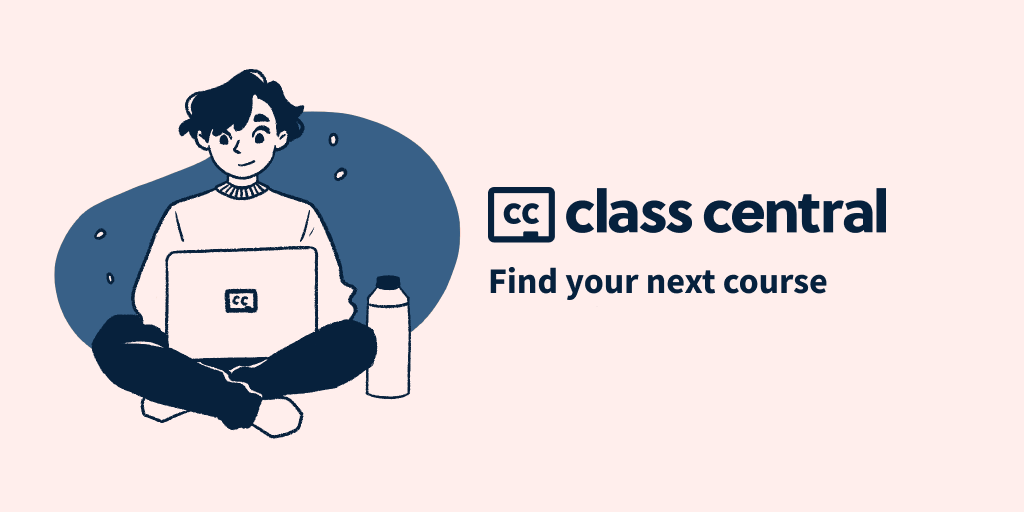
Best Courses Guides Methodology
I built this ranking following the now tried-and-tested methodology used in previous Best Courses Guides (you can find them all here). It involves a three-step process:
- Research: I started by leveraging Class Central’s database with 100K online courses and 200K+ reviews. Then, I made a preliminary selection of OCaml courses by rating, reviews, and bookmarks.
- Evaluate: I read through reviews on Class Central, Reddit, and course providers to understand what other learners thought about each course and combined it with my own experience as a learner.
- Select: Well-made courses were picked if they presented valuable and engaging content and they have to fit in a set of criteria and be ranked accordingly: comprehensive curriculum, affordability, release date, ratings and enrollments.
Course Ranking Statistics
Here are some aggregate stats about the ranking:
- All of the courses in this ranking are free or free-to-audit.
- All of the courses are suitable for beginners to OCaml. Unfortunately, none of the courses are geared towards complete beginners to programming.
- Two of the courses are from universities while the rest are from independent providers.
Without further ado, let’s go through the top picks.
1. OCaml Programming: Correct + Efficient + Beautiful (Cornell University)
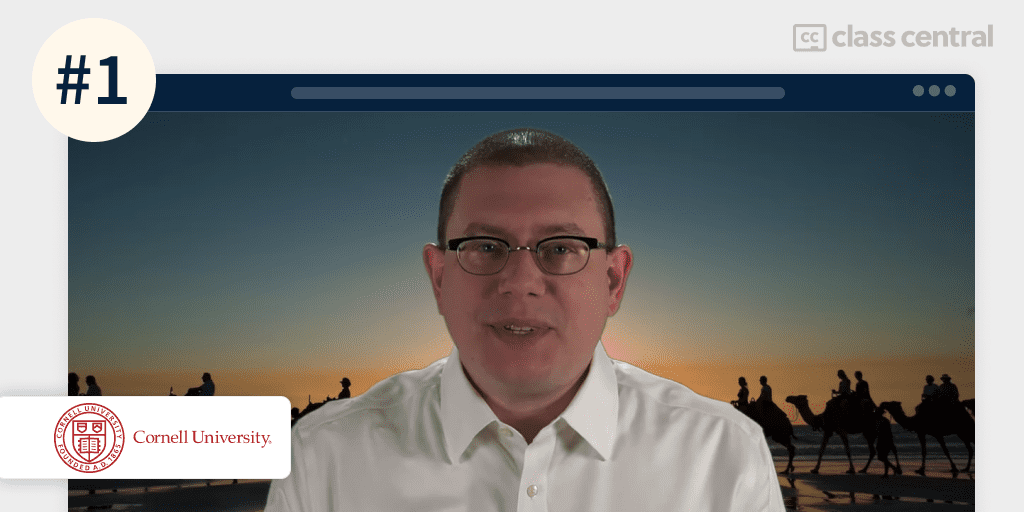
The number one OCaml course in this ranking is OCaml Programming: Correct + Efficient + Beautiful from Cornell University.
This free course is my top pick because it is both a textbook and a bite-sized video series. This means that you’ll learn not only through comprehensive written explanations and examples, but also through visual demonstrations and coding exercises.
The course covers a wide range of topics related to OCaml, including functional programming, correctness and efficiency, data structures, and best software engineering practices.
Prior knowledge programming in some mainstream imperative language (Java and Python preferred) and first-semester standard discrete mathematics is assumed prior to taking this course.
What You’ll Learn
You’ll start straight away by diving into the basics of OCaml, starting with basic syntax like writing expressions and functions. You’ll quickly familiarize yourself with the functional style of programming through extensive use of OCaml’s REPL.
As you become more comfortable with the language’s distinctive syntax, you’ll find yourself appreciating its underlying principles that help developers write concise yet expressive, correct yet efficient code. For example, OCaml is awesome for writing compilers thanks to functional programming concepts such as parametric polymorphism, algebraic data types, higher-order programming, pattern matching. Hence, you’ll study all of these in-depth, along software engineering best practices such as error handling, testing, and documentation.
Not only that, data structures will also be covered in the course, from the ones available in the standard library to more complicated data structures that you’ll implement on your own using both imperative and functional programming. You’ll be able to analyze the efficiency of data structures using amortized analysis and choose the one that suits your use case.
Remember that I mentioned OCaml is great for writing compilers? Well, the final part of this course demystifies compilers enough for you to design and implement some small, special-purpose domain-specific languages (DSLs).
How You’ll Learn
This course consists of 9 chapters. You’ll learn by reading through the chapters and watching the videos. At the end of each chapter except the first, you’ll find exercises for you to practice what you’ve learned. Additionally, the course has a feature called collaborative annotations that allows you to highlight and make private notes that you can share with others.
| Institution | Cornell University |
| Instructor | Michael R. Clarkson |
| Level | Beginner |
| Workload | N/A |
| Certificate | None |
Fun Facts
- Michael R. Clarkson is a professor at Cornell University. These series of videos and the textbook are materials for the CS 3110 Data Structures and Functional Programming using the OCaml programming language. Due to overwhelming positive feedback, Michael made the videos publicly available for anyone who wants to learn about OCaml, functional programming, and becoming a better programmer.
If you’re interested in this course, you can find more information about the course and how to enroll here.
2. Introduction to Functional Programming in OCaml (Université Paris Diderot)
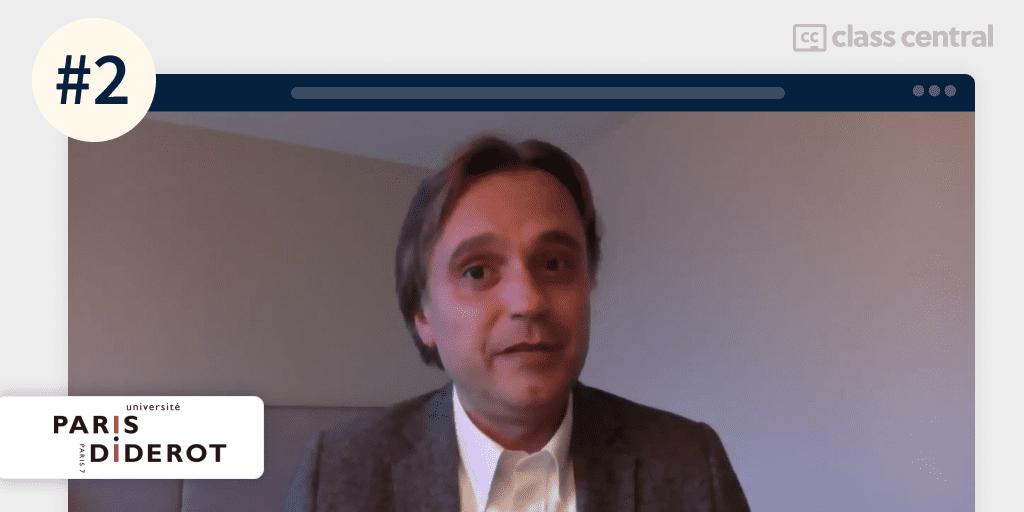
My second pick for the best OCaml course is Introduction to Functional Programming in OCaml offered by Université de Paris.
This MOOC focuses on teaching the principles of functional programming using the OCaml programming language by emphasizing the use of functions as first-class values to create and manage complex data structures. The course will begin by showing the use of OCaml as a functional programming language alone, and by the end, it’ll demonstrate how OCaml can be utilized as a multi-paradigm language, combining functional and imperative programming styles to get the best of both worlds.
To follow this course, you should already have some basic knowledge of writing simple computer programs in a programming language.
What You’ll Learn
You’ll begin the course with an overview of the language, starting with its robust type system. OCaml is statically-typed language, but thanks to its flexible type inference you’ll find yourself working with the type-checker rather than against it, and even create your own types. Combined with immutable data structures, such as tuples, records, and trees, you’ll see how they can be used effectively in your programs.
As a functional-first programming language, OCaml emphasizes the concepts of functional programming (FP), including the use of recursion over loops and the treatment of functions as first-class citizens. You’ll gain hands-on experience with key FP concepts such as partial function application, map and fold operations, and more.
By now, you’ve probably gotten a good understanding of how functional programming differs from imperative programming. Imperative programming is useful in some cases though, so you’ll explore OCaml’s imperative constructs such as modules, input/output, and exceptions.
How You’ll Learn
This course is 6 weeks long, with the total video watch time adding up to 7 hours. You’ll learn by watching the lecture videos and following along with the examples provided by the instructors.
| Institution | Université de Paris |
| Provider | YouTube |
| Instructors | Roberto Di Cosmo, Yann Regis-Gianas, and Ralf Treinen |
| Level | Beginner |
| Workload | 7 hours |
| Enrollments | 1.5K |
| Certificate | None |
Fun Facts
- Roberto Di Cosmo is professor of computer science at University Paris Diderot, director of Irill, currently on leave at INRIA. His research interests include functional and parallel programming, type systems, logic, rewriting, and the static analysis of large software collections.
- Yann Régis-Gianas teaches computer science at Université Paris-Diderot. His research at the PPS laboratory focuses on the theory and the design of programming languages. He did his PhD in the INRIA team that develops OCaml and is now in the development team of the Coq proof assistant.
- Ralf Treinen is professor of computer science at University Paris Diderot. Symbolic constraint solving, verification and application of formal methods to the quality assurance of software components are among his current research interests. He is also a member of Irill.
If you’re interested in this course, you can find more information about the course and how to enroll here.
3. Programming with OCaml (Anthony Narlock)
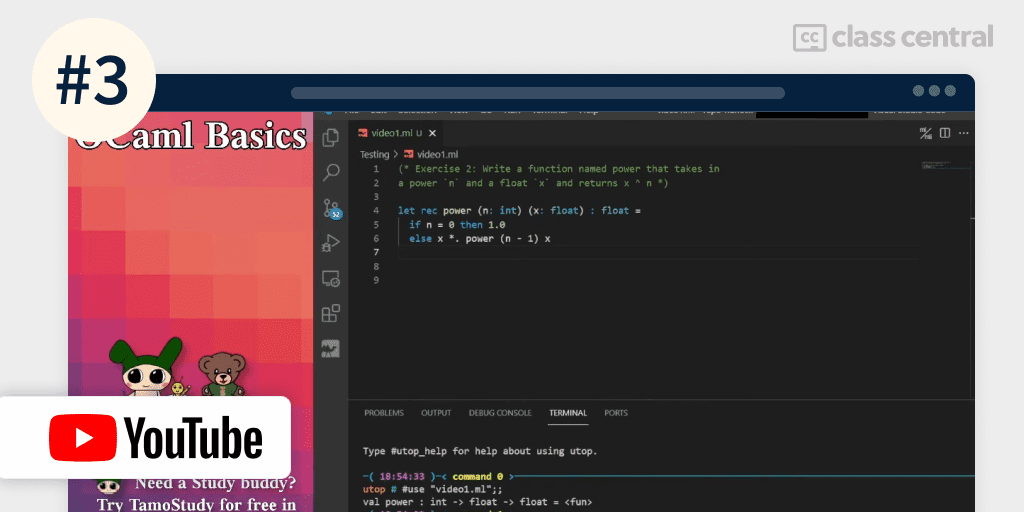
Programming with OCaml teaches the basics of programming in OCaml, especially how it differs from other traditional programming languages.
No prior knowledge of OCaml is required to take this course.
What You’ll Learn
You’ll start this course by getting familiar with the command line tool `utop`. You’ll explore OCaml’s powerful static type system, including its basic types such as integers, floats, booleans, strings, and characters. Additionally, you’ll be introduced to the concepts of recursion and higher-order functions, and understand why they’re often preferred over loops.
As you move on, you’ll delve into lists and pattern matching. You’ll learn how to create and add elements to lists in OCaml, and discover how they can be composed of different types using tuples. You’ll see the power of lists and tuples through practical examples of pattern matching.
Taking a step back, you’ll delve into higher-order functions, focusing on the functions that operate on lists such as List.map, List.filter, List.fold_left, and List.fold_right.
Finally, the course will cover advanced concepts like parametric polymorphism, which allows types with free variables to be replaced with any type, and inductive types, which are programmer-defined types created using the “type” keyword in OCaml. You’ll see an example of this by creating a “message” type with different constructors for string, bool, and float messages, and then defining a list of message types and writing a function that iterates over them.
How You’ll Learn
This course is 3–4 hours long. You’ll learn by watching the lecture videos, where you’ll see the instructor teaching the basics of the language as well as complete some practical exercises to recap what you’ve learned in the video.
| Channel | narlock |
| Provider | YouTube |
| Instructor | Anthony Narlock |
| Level | Beginner |
| Workload | 3–4 hours long |
| Views | 15K |
| Likes | 326 |
| Certificate | None |
Fun Facts
- Anthony Narlock is an experienced software developer with programming experience in Java, Python, and C++. He has a YouTube channel where he posts study with me, vlogs, educational tutorials, and software update videos.
If you’re interested in this course, you can find more information about the course and how to enroll here.
4. OCaml By Example (O(1) Labs)
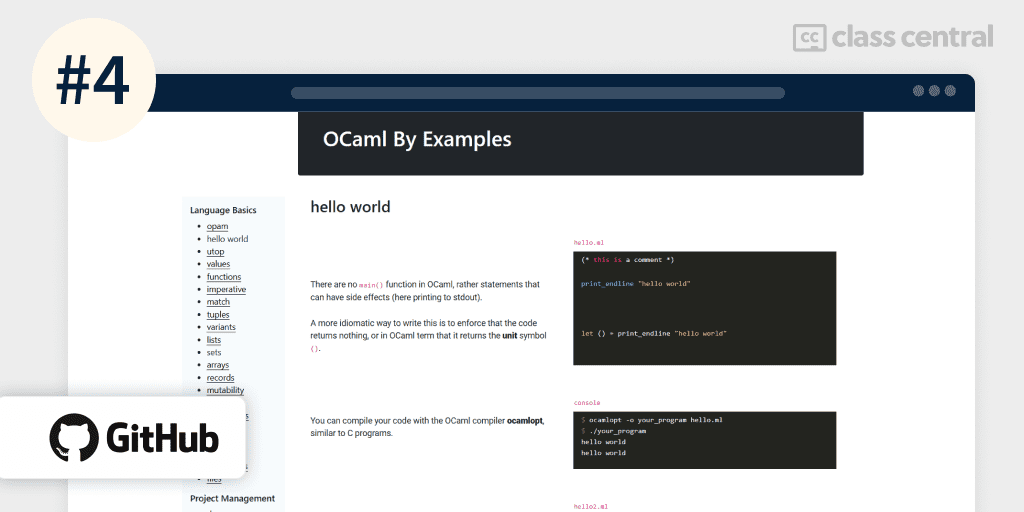
Learn the OCaml language by following a series of examples in the Ocaml By Example course!
No prior experience of OCaml is required to take this course.
What You’ll Learn
You’ll start this course with an overview of the basic language constructs such as values, functions, pattern matching, tuples, variants, lists, sets, arrays, and records. Although most of the concepts you’ll learn relate to functional programming, you’ll also understand how to program imperatively in OCaml as it is a multi-paradigm language.
Next, you’ll study data structures and algorithms, such as recursion, hash tables, and their implementation in the OCaml language. You’ll also understand the different ways to organize your code, such as modules and packages with the Dune build tool. Error handling and interacting with the file system are some other concepts you’ll also cover.
Finally, you’ll learn the more advanced parts of Ocaml, such as macros, and explore OCaml’s vast library collection, including interoperating with other programming languages such as C, JavaScript, and Rust.
How You’ll Learn
This course is made up of four chapters. You’ll learn by reading through the different articles along with the code examples provided.
| Institution | O(1) Labs |
| Provider | GitHub |
| Level | Beginner |
| Workload | N/A |
| Stars | 30 |
| Certificate | None |
Fun Facts
- This page was inspired by Go by Example.
If you’re interested in this course, you can find more information about the course and how to enroll here.
5. OCaml Workshop (Jane Street)
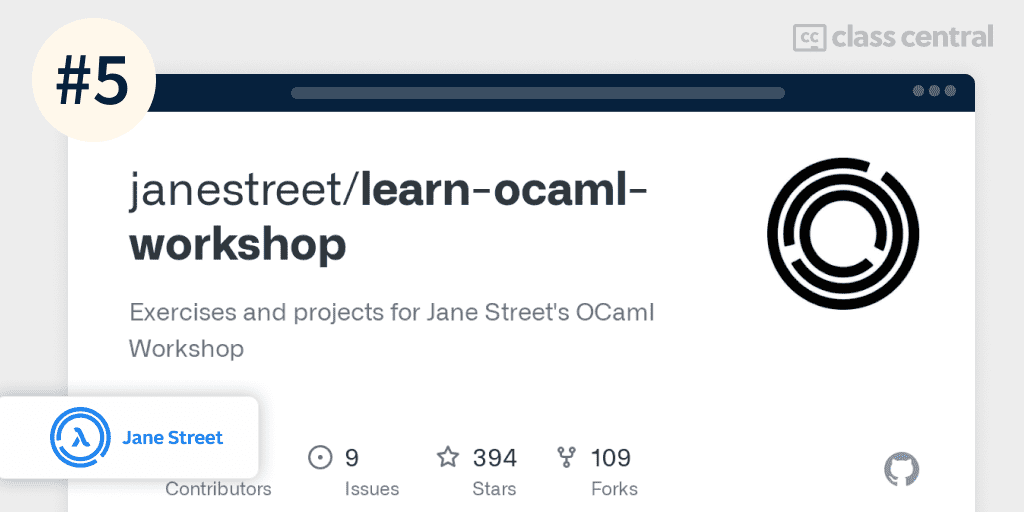
Jane Street’s OCaml Workshop aims to help people start developing in OCaml through small hands-on exercises and bigger, more complex projects like arcade games.
To take this workshop, you should have some experience with OCaml.
What You’ll Learn
After you get familiarized with OCaml’s build process and tools, you’ll complete twenty one exercises teaching you OCaml features such as pattern matching, higher order functions, options, and anonymous functions.
Once you get that covered, you’ll begin developing simplified clones of three arcade games: Snake, Lumines, and Frogger. Snake and Lumines both run on your computer, whereas Frogger runs on your web browser. Afterward, you can choose between several more advanced projects, such as writing a IRC bot, implementing command-line fuzzy finder, or improving Frogger.
How You’ll Learn
Two types of exercises are given: small coding exercises and large projects. Small coding exercises test your understanding of different programming aspects of the OCaml language, whereas the larger projects provide the opportunity to apply your knowledge and skills to more complex, real-world problems. You’ll need to pass the `expect` tests in order to fully complete the exercises.
The course also provides a few paths you can take after completing the exercises, but these come without `expect` tests.
| Institution | Jane Street |
| Provider | OCaml |
| Level | Beginner |
| Workload | N/A |
| Stars | 390 |
| Certificate | None |
Fun Facts
- Jane Street is a quantitative trading firm. It is a significant user of OCaml, which is used in several areas of its technology stack, including trading systems, risk management, and data processing.
- This workshop was part of the The OCaml Users and Developers Workshop that brings together the OCaml community, including users of OCaml in industry, academia, hobbyists, and the free software community.
If you’re interested in this course, you can find more information about the course and how to enroll here.
6. Learn OCaml (OCaml Software Foundation)
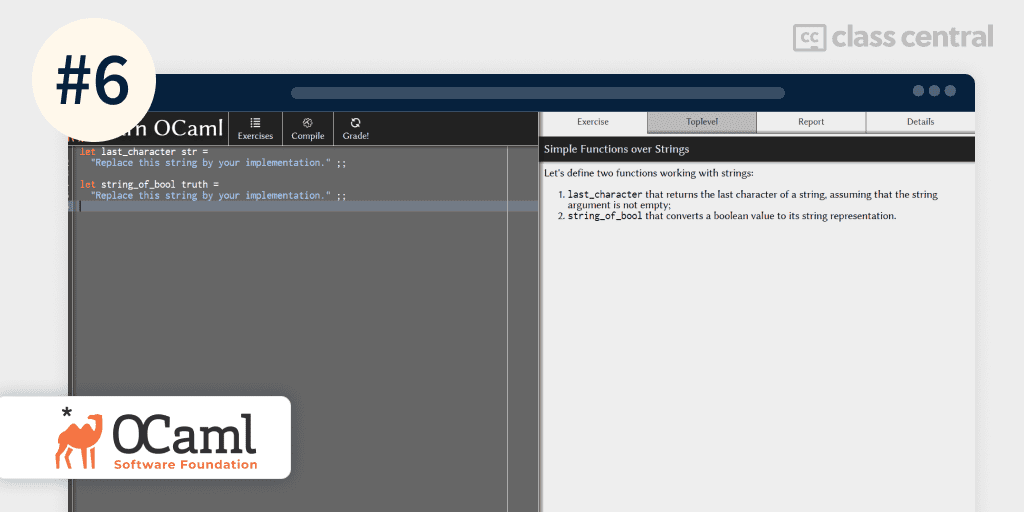
OCaml Software Foundation’s Learn OCaml site provides a variety of coding challenges for you to practice OCaml programming taken from Université de Paris OCaml courses.
Experience with OCaml is recommended to do the exercises.
What You’ll Learn
The difficulty of the exercises ranges from one star (very easy) to four stars (very hard).
Some of the easier exercises include searching for strings in arrays, balancing binary trees, and using first-class functions.
Meanwhile, the more difficult exercises include implementing algorithms such as merge sort and huffman compression, displaying a filesystem hierarchy, and developing a mini database.
How You’ll Learn
You’ll write and execute code directly in the browser’s coding environment. After each exercise, you’ll receive a grade based on how efficient your code is.
| Organization | OCaml Software Foundation |
| Website | ocaml-sf.org |
| Level | All levels |
| Workload | N/A |
| Certificate | None |
Fun Facts
- The OCaml Software Foundation is a non-profit foundation whose mission is to promote, protect, and advance the OCaml programming language and its ecosystem, and to support and facilitate the growth of a diverse and international community of OCaml users.
If you’re interested in this course, you can find more information about the course and how to enroll here.
7. OCaml (Exercism)
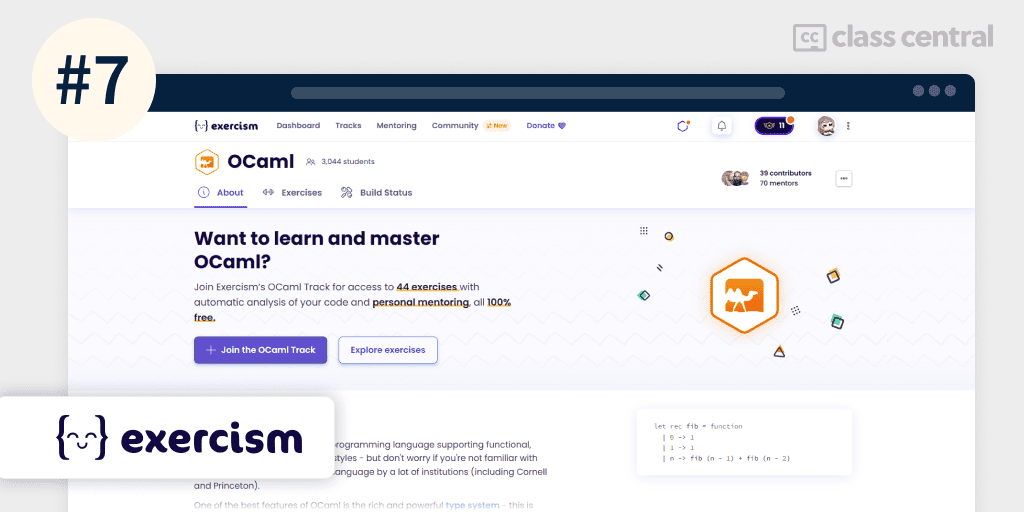
Exercism is an online coding platform that offers a variety of programming exercises and challenges that are suitable for all skill levels. It’s a great way to practice and improve your OCaml coding skills for free.
What makes Exercism stand out from other similar exercise providers is that it offers a free mentoring service. If you ever get stuck on an exercise or want to improve your code, you can request feedback from experienced OCaml programmers.
What You’ll Learn
Exercism offers exercises of varying difficulty levels, including easy, medium, and hard.
Examples of easy exercises include reporting leap years, calculating ages of people in a planet’s solar years, and determining if a sentence is a pangram.
Medium exercises include tasks such as counting the number of rectangles in an ASCII diagram, scoring a bowling game, and adding numbers to a minesweeper board.
For those looking for more of a challenge, there are also hard exercises available, such as calculating the date of meetups, implementing logic of hangman game using functional reactive programming, and creating a zipper for a binary tree.
How You’ll Learn
This course is self-paced, so you can take all the time you need to complete the 40+ hands-on programming exercises. Each exercise comes with automatic feedback of your code as well as personal mentoring to help you understand your code’s strengths and flaws.
| Provider | Exercism |
| Level | All levels |
| Workload | N/A |
| Enrollments | 3K |
| Certificate | None |
Fun Facts
- Exercism provides exercises on 50+ programming languages like Python, Kotlin, F#, and even WebAssembly.
- Their mission is to help everyone get really good at programming, regardless of their background, share the love of programming, and help people upskill as part of their upward social mobility.
- Around 40 people have contributed towards the OCaml syllabus and exercises, with over 60 mentors available at the time of writing.
If you’re interested in this course, you can find more information about the course and how to enroll here.
The post 7 Best Free OCaml Courses to Take in 2023 appeared first on The Report by Class Central.
]]>